Why Shop With Us?
Free Shipping
Free Standard Ground shipping (48 contiguous states, some overweight and Used/Vintage items excluded).
Orders placed before 3 p.m. ET usually ship the same business day.
Learn More2-Year Free Warranty on Guitars
Every guitar or bass you purchase from Musician's Friend (electric or acoustic, New or Open Box) includes two years of protection from manufacturer defects.
Contact Us for DetailsWe're Here for You
Our Gear Advisers are available to guide you through your entire shopping experience. Call or Chat for expert advice and to hear the latest deals.
Contact UsContact Us
Hablamos Español
866.226.2919
Hours:
MON - FRI 5 AM - 8 PM PT
SAT 6 AM - 6 PM PT
SUN 6 AM - 5 PM PT
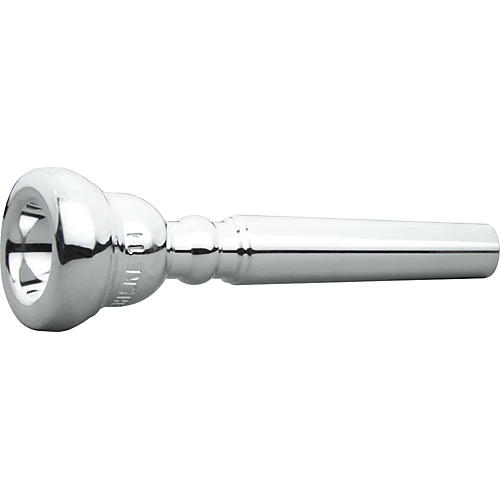

Schilke Standard Series Trumpet Mouthpiece Group I 10B4 Silver
true trueMusician's Friend Rewards
Join for free and start earning 8% back on every purchase. Rewards members also receive double- and triple-point offers, access to member-only deals, as well as a dedicated phone line to Gear Advisers and a $25 coupon on your birthday, all on us.
Join For FreeThis oversized item has special shipping requirements
Style: 10B4 Silver
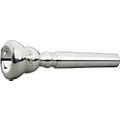 7B4 Silver
$71.50
{
"name": "7B4 Silver",
"skuUrl":"/brass-instruments/schilke-standard-series-trumpet-mouthpiece-group-i/475220000901902",
"status": "instock",
"statusText": "In stock",
"pimStatus": "R1",
"inventoryText": "In Stock & Ready To Ship",
"inventoryKey": "in_stock",
"prop65": "WARNING: This product can expose you to chemicals including Lead, which is known to the State of California to cause cancer, and to cause birth defects or other reproductive harm. For more information go to www.P65Warnings.ca.gov.",
"availableDate": "06-14-2024",
"price": 71.50,
"formatedIntegerValue": "71",
"decimalValue": "50",
"isOnSale": false,
"easyPayOptions":"0,0,300003,6 Months Promotional Financing,12/31/2024,Special 6-month 6-month special,71.5,true,/pages/Gear-Card-Rewards.gc,false,106,,/Special-Financing-Offers.gc,{primaryMonths}-month special financing,with no minimum purchase ,{secondaryMonths}-month financing,available on purchase of ${eligibleOrderValue} or more. Limited time,Get Details.,+ ${backInRewardsNum} back in rewards,No Interest if paid in full within 6 Months* On qualifying purchases thru 12/31/2024 made with your Musician's Friend Platinum credit card. Interest will be charged to your account from the purchase date if the promotional purchase is not paid in full within 6 months. Minimum monthly payments required. *Qualifying purchase amount must be on one receipt|| excluding the following: Open box gear and gift certificates. Cannot be combined with promotional coupons. No interest will be charged on the promo balance if you pay it off|| in full|| within the promo period. If you do not|| interest will be charged on the promo balance from the purchase date. The required minimum monthly payments may or may not pay off the promo balance before the end of the promo period|| depending on purchase amount|| promo length and payment allocation. Regular account terms apply to non-promo purchases and|| after promo period ends|| to the promo balance. New Account APR is 29.99%/Minimum Interest Charge is $2. Existing cardholders: See your credit card agreement terms. Subject to credit approval. ",
"msrp": 107.00,
"salePrice": 71.50,
"listPrice": 71.50,
"isPriceDrop": false,
"priceDropPrice": "",
"savingPercent": "0.00",
"promos":["freeShipping","topRated","guarantee"],"freeWarrantyAvail": false,
"sku": "site1sku475220000901902",
"displaySku": "475220 000901902",
"serialized": false,
"downloadable":"false",
"shipsFree":true,
"condition": "New",
"priceVisibility": "",
"scene7SetID": "MMGS7/475220000901902_MEDIA_SET",
"inCheckoutPromo":"false",
"invMsgVendorDropShip":"false",
"invMsgOverSized":"false",
"invMsgBackOrdered":"false",
"invMsgPreOrder":"false",
"invMsgPromiseDate":"",
"fakeInvMsgPromiseDate":"",
"invMsgAvailability":"In Stock & Ready to Ship",
"invMsgDetail":"Estimated delivery 5-8 business days",
"invMsgAddOnText":"",
"invMsgCurrent":"In Stock & Ready to Ship",
"invMsgAfterCutoff":"",
"orderCutoffTime":"Wed Apr 17 08:00:00 PDT 2024",
"twoDayShippingSourceStatus":"",
"currencySymbol": "$",
"styleImgUrl": "https://media.musiciansfriend.com/is/image/MMGS7/Standard-Series-Trumpet-Mouthpiece-Group-I-7B4-Silver/475220000901902-00-140x140.jpg",
"styleImgAlt": "Standard Series Trumpet Mouthpiece Group I 7B4 Silver",
"freeGiftWarning":false,
"freeGiftWarningTips":"",
"kitCarouselItems": [],
"pdpLoyaltyPoints":"576",
"pdpLoyaltyPointsMultiplier":"1.0",
"checksum":"40240744800",
"restrictionType":"",
"restrictionError":""
}
7B4 Silver
$71.50
{
"name": "7B4 Silver",
"skuUrl":"/brass-instruments/schilke-standard-series-trumpet-mouthpiece-group-i/475220000901902",
"status": "instock",
"statusText": "In stock",
"pimStatus": "R1",
"inventoryText": "In Stock & Ready To Ship",
"inventoryKey": "in_stock",
"prop65": "WARNING: This product can expose you to chemicals including Lead, which is known to the State of California to cause cancer, and to cause birth defects or other reproductive harm. For more information go to www.P65Warnings.ca.gov.",
"availableDate": "06-14-2024",
"price": 71.50,
"formatedIntegerValue": "71",
"decimalValue": "50",
"isOnSale": false,
"easyPayOptions":"0,0,300003,6 Months Promotional Financing,12/31/2024,Special 6-month 6-month special,71.5,true,/pages/Gear-Card-Rewards.gc,false,106,,/Special-Financing-Offers.gc,{primaryMonths}-month special financing,with no minimum purchase ,{secondaryMonths}-month financing,available on purchase of ${eligibleOrderValue} or more. Limited time,Get Details.,+ ${backInRewardsNum} back in rewards,No Interest if paid in full within 6 Months* On qualifying purchases thru 12/31/2024 made with your Musician's Friend Platinum credit card. Interest will be charged to your account from the purchase date if the promotional purchase is not paid in full within 6 months. Minimum monthly payments required. *Qualifying purchase amount must be on one receipt|| excluding the following: Open box gear and gift certificates. Cannot be combined with promotional coupons. No interest will be charged on the promo balance if you pay it off|| in full|| within the promo period. If you do not|| interest will be charged on the promo balance from the purchase date. The required minimum monthly payments may or may not pay off the promo balance before the end of the promo period|| depending on purchase amount|| promo length and payment allocation. Regular account terms apply to non-promo purchases and|| after promo period ends|| to the promo balance. New Account APR is 29.99%/Minimum Interest Charge is $2. Existing cardholders: See your credit card agreement terms. Subject to credit approval. ",
"msrp": 107.00,
"salePrice": 71.50,
"listPrice": 71.50,
"isPriceDrop": false,
"priceDropPrice": "",
"savingPercent": "0.00",
"promos":["freeShipping","topRated","guarantee"],"freeWarrantyAvail": false,
"sku": "site1sku475220000901902",
"displaySku": "475220 000901902",
"serialized": false,
"downloadable":"false",
"shipsFree":true,
"condition": "New",
"priceVisibility": "",
"scene7SetID": "MMGS7/475220000901902_MEDIA_SET",
"inCheckoutPromo":"false",
"invMsgVendorDropShip":"false",
"invMsgOverSized":"false",
"invMsgBackOrdered":"false",
"invMsgPreOrder":"false",
"invMsgPromiseDate":"",
"fakeInvMsgPromiseDate":"",
"invMsgAvailability":"In Stock & Ready to Ship",
"invMsgDetail":"Estimated delivery 5-8 business days",
"invMsgAddOnText":"",
"invMsgCurrent":"In Stock & Ready to Ship",
"invMsgAfterCutoff":"",
"orderCutoffTime":"Wed Apr 17 08:00:00 PDT 2024",
"twoDayShippingSourceStatus":"",
"currencySymbol": "$",
"styleImgUrl": "https://media.musiciansfriend.com/is/image/MMGS7/Standard-Series-Trumpet-Mouthpiece-Group-I-7B4-Silver/475220000901902-00-140x140.jpg",
"styleImgAlt": "Standard Series Trumpet Mouthpiece Group I 7B4 Silver",
"freeGiftWarning":false,
"freeGiftWarningTips":"",
"kitCarouselItems": [],
"pdpLoyaltyPoints":"576",
"pdpLoyaltyPointsMultiplier":"1.0",
"checksum":"40240744800",
"restrictionType":"",
"restrictionError":""
}
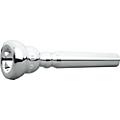 8E2 Silver
$71.50
{
"name": "8E2 Silver",
"skuUrl":"/brass-instruments/schilke-standard-series-trumpet-mouthpiece-group-i/475220000904902",
"status": "instock",
"statusText": "In stock",
"pimStatus": "R1",
"inventoryText": "In Stock & Ready To Ship",
"inventoryKey": "in_stock",
"prop65": "WARNING: This product can expose you to chemicals including Lead, which is known to the State of California to cause cancer, and to cause birth defects or other reproductive harm. For more information go to www.P65Warnings.ca.gov.",
"availableDate": "06-05-2023",
"price": 71.50,
"formatedIntegerValue": "71",
"decimalValue": "50",
"isOnSale": false,
"easyPayOptions":"0,0,300003,6 Months Promotional Financing,12/31/2024,Special 6-month 6-month special,71.5,true,/pages/Gear-Card-Rewards.gc,false,106,,/Special-Financing-Offers.gc,{primaryMonths}-month special financing,with no minimum purchase ,{secondaryMonths}-month financing,available on purchase of ${eligibleOrderValue} or more. Limited time,Get Details.,+ ${backInRewardsNum} back in rewards,No Interest if paid in full within 6 Months* On qualifying purchases thru 12/31/2024 made with your Musician's Friend Platinum credit card. Interest will be charged to your account from the purchase date if the promotional purchase is not paid in full within 6 months. Minimum monthly payments required. *Qualifying purchase amount must be on one receipt|| excluding the following: Open box gear and gift certificates. Cannot be combined with promotional coupons. No interest will be charged on the promo balance if you pay it off|| in full|| within the promo period. If you do not|| interest will be charged on the promo balance from the purchase date. The required minimum monthly payments may or may not pay off the promo balance before the end of the promo period|| depending on purchase amount|| promo length and payment allocation. Regular account terms apply to non-promo purchases and|| after promo period ends|| to the promo balance. New Account APR is 29.99%/Minimum Interest Charge is $2. Existing cardholders: See your credit card agreement terms. Subject to credit approval. ",
"msrp": 107.00,
"salePrice": 71.50,
"listPrice": 71.50,
"isPriceDrop": false,
"priceDropPrice": "",
"savingPercent": "0.00",
"promos":["freeShipping","topRated","guarantee"],"freeWarrantyAvail": false,
"sku": "site1sku475220000904902",
"displaySku": "475220 000904902",
"serialized": false,
"downloadable":"false",
"shipsFree":true,
"condition": "New",
"priceVisibility": "",
"scene7SetID": "MMGS7/475220000904902_MEDIA_SET",
"inCheckoutPromo":"false",
"invMsgVendorDropShip":"false",
"invMsgOverSized":"false",
"invMsgBackOrdered":"false",
"invMsgPreOrder":"false",
"invMsgPromiseDate":"",
"fakeInvMsgPromiseDate":"",
"invMsgAvailability":"In Stock & Ready to Ship",
"invMsgDetail":"Estimated delivery 5-8 business days",
"invMsgAddOnText":"",
"invMsgCurrent":"In Stock & Ready to Ship",
"invMsgAfterCutoff":"",
"orderCutoffTime":"Wed Apr 17 08:00:00 PDT 2024",
"twoDayShippingSourceStatus":"",
"currencySymbol": "$",
"styleImgUrl": "https://media.musiciansfriend.com/is/image/MMGS7/Standard-Series-Trumpet-Mouthpiece-Group-I-8E2-Silver/475220000904902-00-140x140.jpg",
"styleImgAlt": "Standard Series Trumpet Mouthpiece Group I 8E2 Silver",
"freeGiftWarning":false,
"freeGiftWarningTips":"",
"kitCarouselItems": [],
"pdpLoyaltyPoints":"576",
"pdpLoyaltyPointsMultiplier":"1.0",
"checksum":"40240744800",
"restrictionType":"",
"restrictionError":""
}
8E2 Silver
$71.50
{
"name": "8E2 Silver",
"skuUrl":"/brass-instruments/schilke-standard-series-trumpet-mouthpiece-group-i/475220000904902",
"status": "instock",
"statusText": "In stock",
"pimStatus": "R1",
"inventoryText": "In Stock & Ready To Ship",
"inventoryKey": "in_stock",
"prop65": "WARNING: This product can expose you to chemicals including Lead, which is known to the State of California to cause cancer, and to cause birth defects or other reproductive harm. For more information go to www.P65Warnings.ca.gov.",
"availableDate": "06-05-2023",
"price": 71.50,
"formatedIntegerValue": "71",
"decimalValue": "50",
"isOnSale": false,
"easyPayOptions":"0,0,300003,6 Months Promotional Financing,12/31/2024,Special 6-month 6-month special,71.5,true,/pages/Gear-Card-Rewards.gc,false,106,,/Special-Financing-Offers.gc,{primaryMonths}-month special financing,with no minimum purchase ,{secondaryMonths}-month financing,available on purchase of ${eligibleOrderValue} or more. Limited time,Get Details.,+ ${backInRewardsNum} back in rewards,No Interest if paid in full within 6 Months* On qualifying purchases thru 12/31/2024 made with your Musician's Friend Platinum credit card. Interest will be charged to your account from the purchase date if the promotional purchase is not paid in full within 6 months. Minimum monthly payments required. *Qualifying purchase amount must be on one receipt|| excluding the following: Open box gear and gift certificates. Cannot be combined with promotional coupons. No interest will be charged on the promo balance if you pay it off|| in full|| within the promo period. If you do not|| interest will be charged on the promo balance from the purchase date. The required minimum monthly payments may or may not pay off the promo balance before the end of the promo period|| depending on purchase amount|| promo length and payment allocation. Regular account terms apply to non-promo purchases and|| after promo period ends|| to the promo balance. New Account APR is 29.99%/Minimum Interest Charge is $2. Existing cardholders: See your credit card agreement terms. Subject to credit approval. ",
"msrp": 107.00,
"salePrice": 71.50,
"listPrice": 71.50,
"isPriceDrop": false,
"priceDropPrice": "",
"savingPercent": "0.00",
"promos":["freeShipping","topRated","guarantee"],"freeWarrantyAvail": false,
"sku": "site1sku475220000904902",
"displaySku": "475220 000904902",
"serialized": false,
"downloadable":"false",
"shipsFree":true,
"condition": "New",
"priceVisibility": "",
"scene7SetID": "MMGS7/475220000904902_MEDIA_SET",
"inCheckoutPromo":"false",
"invMsgVendorDropShip":"false",
"invMsgOverSized":"false",
"invMsgBackOrdered":"false",
"invMsgPreOrder":"false",
"invMsgPromiseDate":"",
"fakeInvMsgPromiseDate":"",
"invMsgAvailability":"In Stock & Ready to Ship",
"invMsgDetail":"Estimated delivery 5-8 business days",
"invMsgAddOnText":"",
"invMsgCurrent":"In Stock & Ready to Ship",
"invMsgAfterCutoff":"",
"orderCutoffTime":"Wed Apr 17 08:00:00 PDT 2024",
"twoDayShippingSourceStatus":"",
"currencySymbol": "$",
"styleImgUrl": "https://media.musiciansfriend.com/is/image/MMGS7/Standard-Series-Trumpet-Mouthpiece-Group-I-8E2-Silver/475220000904902-00-140x140.jpg",
"styleImgAlt": "Standard Series Trumpet Mouthpiece Group I 8E2 Silver",
"freeGiftWarning":false,
"freeGiftWarningTips":"",
"kitCarouselItems": [],
"pdpLoyaltyPoints":"576",
"pdpLoyaltyPointsMultiplier":"1.0",
"checksum":"40240744800",
"restrictionType":"",
"restrictionError":""
}
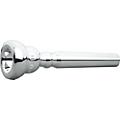 11E Silver
$71.50
{
"name": "11E Silver",
"skuUrl":"/brass-instruments/schilke-standard-series-trumpet-mouthpiece-group-i/475220000908902",
"status": "instock",
"statusText": "In stock",
"pimStatus": "R1",
"inventoryText": "In Stock & Ready To Ship",
"inventoryKey": "in_stock",
"prop65": "WARNING: This product can expose you to chemicals including Lead, which is known to the State of California to cause cancer, and to cause birth defects or other reproductive harm. For more information go to www.P65Warnings.ca.gov.",
"availableDate": "01-23-2024",
"price": 71.50,
"formatedIntegerValue": "71",
"decimalValue": "50",
"isOnSale": false,
"easyPayOptions":"0,0,300003,6 Months Promotional Financing,12/31/2024,Special 6-month 6-month special,71.5,true,/pages/Gear-Card-Rewards.gc,false,106,,/Special-Financing-Offers.gc,{primaryMonths}-month special financing,with no minimum purchase ,{secondaryMonths}-month financing,available on purchase of ${eligibleOrderValue} or more. Limited time,Get Details.,+ ${backInRewardsNum} back in rewards,No Interest if paid in full within 6 Months* On qualifying purchases thru 12/31/2024 made with your Musician's Friend Platinum credit card. Interest will be charged to your account from the purchase date if the promotional purchase is not paid in full within 6 months. Minimum monthly payments required. *Qualifying purchase amount must be on one receipt|| excluding the following: Open box gear and gift certificates. Cannot be combined with promotional coupons. No interest will be charged on the promo balance if you pay it off|| in full|| within the promo period. If you do not|| interest will be charged on the promo balance from the purchase date. The required minimum monthly payments may or may not pay off the promo balance before the end of the promo period|| depending on purchase amount|| promo length and payment allocation. Regular account terms apply to non-promo purchases and|| after promo period ends|| to the promo balance. New Account APR is 29.99%/Minimum Interest Charge is $2. Existing cardholders: See your credit card agreement terms. Subject to credit approval. ",
"msrp": 107.00,
"salePrice": 71.50,
"listPrice": 71.50,
"isPriceDrop": false,
"priceDropPrice": "",
"savingPercent": "0.00",
"promos":["freeShipping","topRated","guarantee"],"freeWarrantyAvail": false,
"sku": "site1sku475220000908902",
"displaySku": "475220 000908902",
"serialized": false,
"downloadable":"false",
"shipsFree":true,
"condition": "New",
"priceVisibility": "",
"scene7SetID": "MMGS7/475220000908902_MEDIA_SET",
"inCheckoutPromo":"false",
"invMsgVendorDropShip":"false",
"invMsgOverSized":"false",
"invMsgBackOrdered":"false",
"invMsgPreOrder":"false",
"invMsgPromiseDate":"",
"fakeInvMsgPromiseDate":"",
"invMsgAvailability":"In Stock & Ready to Ship",
"invMsgDetail":"Estimated delivery 5-8 business days",
"invMsgAddOnText":"",
"invMsgCurrent":"In Stock & Ready to Ship",
"invMsgAfterCutoff":"",
"orderCutoffTime":"Wed Apr 17 08:00:00 PDT 2024",
"twoDayShippingSourceStatus":"",
"currencySymbol": "$",
"styleImgUrl": "https://media.musiciansfriend.com/is/image/MMGS7/Standard-Series-Trumpet-Mouthpiece-Group-I-11E-Silver/475220000908902-00-140x140.jpg",
"styleImgAlt": "Standard Series Trumpet Mouthpiece Group I 11E Silver",
"freeGiftWarning":false,
"freeGiftWarningTips":"",
"kitCarouselItems": [],
"pdpLoyaltyPoints":"576",
"pdpLoyaltyPointsMultiplier":"1.0",
"checksum":"40240744800",
"restrictionType":"",
"restrictionError":""
}
11E Silver
$71.50
{
"name": "11E Silver",
"skuUrl":"/brass-instruments/schilke-standard-series-trumpet-mouthpiece-group-i/475220000908902",
"status": "instock",
"statusText": "In stock",
"pimStatus": "R1",
"inventoryText": "In Stock & Ready To Ship",
"inventoryKey": "in_stock",
"prop65": "WARNING: This product can expose you to chemicals including Lead, which is known to the State of California to cause cancer, and to cause birth defects or other reproductive harm. For more information go to www.P65Warnings.ca.gov.",
"availableDate": "01-23-2024",
"price": 71.50,
"formatedIntegerValue": "71",
"decimalValue": "50",
"isOnSale": false,
"easyPayOptions":"0,0,300003,6 Months Promotional Financing,12/31/2024,Special 6-month 6-month special,71.5,true,/pages/Gear-Card-Rewards.gc,false,106,,/Special-Financing-Offers.gc,{primaryMonths}-month special financing,with no minimum purchase ,{secondaryMonths}-month financing,available on purchase of ${eligibleOrderValue} or more. Limited time,Get Details.,+ ${backInRewardsNum} back in rewards,No Interest if paid in full within 6 Months* On qualifying purchases thru 12/31/2024 made with your Musician's Friend Platinum credit card. Interest will be charged to your account from the purchase date if the promotional purchase is not paid in full within 6 months. Minimum monthly payments required. *Qualifying purchase amount must be on one receipt|| excluding the following: Open box gear and gift certificates. Cannot be combined with promotional coupons. No interest will be charged on the promo balance if you pay it off|| in full|| within the promo period. If you do not|| interest will be charged on the promo balance from the purchase date. The required minimum monthly payments may or may not pay off the promo balance before the end of the promo period|| depending on purchase amount|| promo length and payment allocation. Regular account terms apply to non-promo purchases and|| after promo period ends|| to the promo balance. New Account APR is 29.99%/Minimum Interest Charge is $2. Existing cardholders: See your credit card agreement terms. Subject to credit approval. ",
"msrp": 107.00,
"salePrice": 71.50,
"listPrice": 71.50,
"isPriceDrop": false,
"priceDropPrice": "",
"savingPercent": "0.00",
"promos":["freeShipping","topRated","guarantee"],"freeWarrantyAvail": false,
"sku": "site1sku475220000908902",
"displaySku": "475220 000908902",
"serialized": false,
"downloadable":"false",
"shipsFree":true,
"condition": "New",
"priceVisibility": "",
"scene7SetID": "MMGS7/475220000908902_MEDIA_SET",
"inCheckoutPromo":"false",
"invMsgVendorDropShip":"false",
"invMsgOverSized":"false",
"invMsgBackOrdered":"false",
"invMsgPreOrder":"false",
"invMsgPromiseDate":"",
"fakeInvMsgPromiseDate":"",
"invMsgAvailability":"In Stock & Ready to Ship",
"invMsgDetail":"Estimated delivery 5-8 business days",
"invMsgAddOnText":"",
"invMsgCurrent":"In Stock & Ready to Ship",
"invMsgAfterCutoff":"",
"orderCutoffTime":"Wed Apr 17 08:00:00 PDT 2024",
"twoDayShippingSourceStatus":"",
"currencySymbol": "$",
"styleImgUrl": "https://media.musiciansfriend.com/is/image/MMGS7/Standard-Series-Trumpet-Mouthpiece-Group-I-11E-Silver/475220000908902-00-140x140.jpg",
"styleImgAlt": "Standard Series Trumpet Mouthpiece Group I 11E Silver",
"freeGiftWarning":false,
"freeGiftWarningTips":"",
"kitCarouselItems": [],
"pdpLoyaltyPoints":"576",
"pdpLoyaltyPointsMultiplier":"1.0",
"checksum":"40240744800",
"restrictionType":"",
"restrictionError":""
}
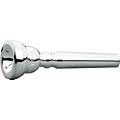 12A4a Silver
$71.50
{
"name": "12A4a Silver",
"skuUrl":"/brass-instruments/schilke-standard-series-trumpet-mouthpiece-group-i/475220000909902",
"status": "instock",
"statusText": "In stock",
"pimStatus": "R1",
"inventoryText": "In Stock & Ready To Ship",
"inventoryKey": "in_stock",
"prop65": "WARNING: This product can expose you to chemicals including Lead, which is known to the State of California to cause cancer, and to cause birth defects or other reproductive harm. For more information go to www.P65Warnings.ca.gov.",
"availableDate": "06-16-2024",
"price": 71.50,
"formatedIntegerValue": "71",
"decimalValue": "50",
"isOnSale": false,
"easyPayOptions":"0,0,300003,6 Months Promotional Financing,12/31/2024,Special 6-month 6-month special,71.5,true,/pages/Gear-Card-Rewards.gc,false,106,,/Special-Financing-Offers.gc,{primaryMonths}-month special financing,with no minimum purchase ,{secondaryMonths}-month financing,available on purchase of ${eligibleOrderValue} or more. Limited time,Get Details.,+ ${backInRewardsNum} back in rewards,No Interest if paid in full within 6 Months* On qualifying purchases thru 12/31/2024 made with your Musician's Friend Platinum credit card. Interest will be charged to your account from the purchase date if the promotional purchase is not paid in full within 6 months. Minimum monthly payments required. *Qualifying purchase amount must be on one receipt|| excluding the following: Open box gear and gift certificates. Cannot be combined with promotional coupons. No interest will be charged on the promo balance if you pay it off|| in full|| within the promo period. If you do not|| interest will be charged on the promo balance from the purchase date. The required minimum monthly payments may or may not pay off the promo balance before the end of the promo period|| depending on purchase amount|| promo length and payment allocation. Regular account terms apply to non-promo purchases and|| after promo period ends|| to the promo balance. New Account APR is 29.99%/Minimum Interest Charge is $2. Existing cardholders: See your credit card agreement terms. Subject to credit approval. ",
"msrp": 107.00,
"salePrice": 71.50,
"listPrice": 71.50,
"isPriceDrop": false,
"priceDropPrice": "",
"savingPercent": "0.00",
"promos":["freeShipping","topRated","guarantee"],"freeWarrantyAvail": false,
"sku": "site1sku475220000909902",
"displaySku": "475220 000909902",
"serialized": false,
"downloadable":"false",
"shipsFree":true,
"condition": "New",
"priceVisibility": "",
"scene7SetID": "MMGS7/475220000909902_MEDIA_SET",
"inCheckoutPromo":"false",
"invMsgVendorDropShip":"false",
"invMsgOverSized":"false",
"invMsgBackOrdered":"false",
"invMsgPreOrder":"false",
"invMsgPromiseDate":"",
"fakeInvMsgPromiseDate":"",
"invMsgAvailability":"In Stock & Ready to Ship",
"invMsgDetail":"Estimated delivery 5-8 business days",
"invMsgAddOnText":"",
"invMsgCurrent":"In Stock & Ready to Ship",
"invMsgAfterCutoff":"",
"orderCutoffTime":"Wed Apr 17 08:00:00 PDT 2024",
"twoDayShippingSourceStatus":"",
"currencySymbol": "$",
"styleImgUrl": "https://media.musiciansfriend.com/is/image/MMGS7/Standard-Series-Trumpet-Mouthpiece-Group-I-12A4a-Silver/475220000909902-00-140x140.jpg",
"styleImgAlt": "Standard Series Trumpet Mouthpiece Group I 12A4a Silver",
"freeGiftWarning":false,
"freeGiftWarningTips":"",
"kitCarouselItems": [],
"pdpLoyaltyPoints":"576",
"pdpLoyaltyPointsMultiplier":"1.0",
"checksum":"40240744800",
"restrictionType":"",
"restrictionError":""
}
12A4a Silver
$71.50
{
"name": "12A4a Silver",
"skuUrl":"/brass-instruments/schilke-standard-series-trumpet-mouthpiece-group-i/475220000909902",
"status": "instock",
"statusText": "In stock",
"pimStatus": "R1",
"inventoryText": "In Stock & Ready To Ship",
"inventoryKey": "in_stock",
"prop65": "WARNING: This product can expose you to chemicals including Lead, which is known to the State of California to cause cancer, and to cause birth defects or other reproductive harm. For more information go to www.P65Warnings.ca.gov.",
"availableDate": "06-16-2024",
"price": 71.50,
"formatedIntegerValue": "71",
"decimalValue": "50",
"isOnSale": false,
"easyPayOptions":"0,0,300003,6 Months Promotional Financing,12/31/2024,Special 6-month 6-month special,71.5,true,/pages/Gear-Card-Rewards.gc,false,106,,/Special-Financing-Offers.gc,{primaryMonths}-month special financing,with no minimum purchase ,{secondaryMonths}-month financing,available on purchase of ${eligibleOrderValue} or more. Limited time,Get Details.,+ ${backInRewardsNum} back in rewards,No Interest if paid in full within 6 Months* On qualifying purchases thru 12/31/2024 made with your Musician's Friend Platinum credit card. Interest will be charged to your account from the purchase date if the promotional purchase is not paid in full within 6 months. Minimum monthly payments required. *Qualifying purchase amount must be on one receipt|| excluding the following: Open box gear and gift certificates. Cannot be combined with promotional coupons. No interest will be charged on the promo balance if you pay it off|| in full|| within the promo period. If you do not|| interest will be charged on the promo balance from the purchase date. The required minimum monthly payments may or may not pay off the promo balance before the end of the promo period|| depending on purchase amount|| promo length and payment allocation. Regular account terms apply to non-promo purchases and|| after promo period ends|| to the promo balance. New Account APR is 29.99%/Minimum Interest Charge is $2. Existing cardholders: See your credit card agreement terms. Subject to credit approval. ",
"msrp": 107.00,
"salePrice": 71.50,
"listPrice": 71.50,
"isPriceDrop": false,
"priceDropPrice": "",
"savingPercent": "0.00",
"promos":["freeShipping","topRated","guarantee"],"freeWarrantyAvail": false,
"sku": "site1sku475220000909902",
"displaySku": "475220 000909902",
"serialized": false,
"downloadable":"false",
"shipsFree":true,
"condition": "New",
"priceVisibility": "",
"scene7SetID": "MMGS7/475220000909902_MEDIA_SET",
"inCheckoutPromo":"false",
"invMsgVendorDropShip":"false",
"invMsgOverSized":"false",
"invMsgBackOrdered":"false",
"invMsgPreOrder":"false",
"invMsgPromiseDate":"",
"fakeInvMsgPromiseDate":"",
"invMsgAvailability":"In Stock & Ready to Ship",
"invMsgDetail":"Estimated delivery 5-8 business days",
"invMsgAddOnText":"",
"invMsgCurrent":"In Stock & Ready to Ship",
"invMsgAfterCutoff":"",
"orderCutoffTime":"Wed Apr 17 08:00:00 PDT 2024",
"twoDayShippingSourceStatus":"",
"currencySymbol": "$",
"styleImgUrl": "https://media.musiciansfriend.com/is/image/MMGS7/Standard-Series-Trumpet-Mouthpiece-Group-I-12A4a-Silver/475220000909902-00-140x140.jpg",
"styleImgAlt": "Standard Series Trumpet Mouthpiece Group I 12A4a Silver",
"freeGiftWarning":false,
"freeGiftWarningTips":"",
"kitCarouselItems": [],
"pdpLoyaltyPoints":"576",
"pdpLoyaltyPointsMultiplier":"1.0",
"checksum":"40240744800",
"restrictionType":"",
"restrictionError":""
}
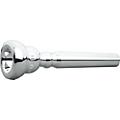 12A4 Silver
$71.50
{
"name": "12A4 Silver",
"skuUrl":"/brass-instruments/schilke-standard-series-trumpet-mouthpiece-group-i/475220000910902",
"status": "instock",
"statusText": "In stock",
"pimStatus": "R1",
"inventoryText": "In Stock & Ready To Ship",
"inventoryKey": "in_stock",
"prop65": "WARNING: This product can expose you to chemicals including Lead, which is known to the State of California to cause cancer, and to cause birth defects or other reproductive harm. For more information go to www.P65Warnings.ca.gov.",
"availableDate": "06-02-2024",
"price": 71.50,
"formatedIntegerValue": "71",
"decimalValue": "50",
"isOnSale": false,
"easyPayOptions":"0,0,300003,6 Months Promotional Financing,12/31/2024,Special 6-month 6-month special,71.5,true,/pages/Gear-Card-Rewards.gc,false,106,,/Special-Financing-Offers.gc,{primaryMonths}-month special financing,with no minimum purchase ,{secondaryMonths}-month financing,available on purchase of ${eligibleOrderValue} or more. Limited time,Get Details.,+ ${backInRewardsNum} back in rewards,No Interest if paid in full within 6 Months* On qualifying purchases thru 12/31/2024 made with your Musician's Friend Platinum credit card. Interest will be charged to your account from the purchase date if the promotional purchase is not paid in full within 6 months. Minimum monthly payments required. *Qualifying purchase amount must be on one receipt|| excluding the following: Open box gear and gift certificates. Cannot be combined with promotional coupons. No interest will be charged on the promo balance if you pay it off|| in full|| within the promo period. If you do not|| interest will be charged on the promo balance from the purchase date. The required minimum monthly payments may or may not pay off the promo balance before the end of the promo period|| depending on purchase amount|| promo length and payment allocation. Regular account terms apply to non-promo purchases and|| after promo period ends|| to the promo balance. New Account APR is 29.99%/Minimum Interest Charge is $2. Existing cardholders: See your credit card agreement terms. Subject to credit approval. ",
"msrp": 107.00,
"salePrice": 71.50,
"listPrice": 71.50,
"isPriceDrop": false,
"priceDropPrice": "",
"savingPercent": "0.00",
"promos":["freeShipping","topRated","topSeller","guarantee"],"freeWarrantyAvail": false,
"sku": "site1sku475220000910902",
"displaySku": "475220 000910902",
"serialized": false,
"downloadable":"false",
"shipsFree":true,
"condition": "New",
"priceVisibility": "",
"scene7SetID": "MMGS7/475220000910902_MEDIA_SET",
"inCheckoutPromo":"false",
"invMsgVendorDropShip":"false",
"invMsgOverSized":"false",
"invMsgBackOrdered":"false",
"invMsgPreOrder":"false",
"invMsgPromiseDate":"",
"fakeInvMsgPromiseDate":"",
"invMsgAvailability":"In Stock & Ready to Ship",
"invMsgDetail":"Estimated delivery 5-8 business days",
"invMsgAddOnText":"",
"invMsgCurrent":"In Stock & Ready to Ship",
"invMsgAfterCutoff":"",
"orderCutoffTime":"Wed Apr 17 08:00:00 PDT 2024",
"twoDayShippingSourceStatus":"",
"currencySymbol": "$",
"styleImgUrl": "https://media.musiciansfriend.com/is/image/MMGS7/Standard-Series-Trumpet-Mouthpiece-Group-I-12A4-Silver/475220000910902-00-140x140.jpg",
"styleImgAlt": "Standard Series Trumpet Mouthpiece Group I 12A4 Silver",
"freeGiftWarning":false,
"freeGiftWarningTips":"",
"kitCarouselItems": [],
"pdpLoyaltyPoints":"576",
"pdpLoyaltyPointsMultiplier":"1.0",
"checksum":"40240744800",
"restrictionType":"",
"restrictionError":""
}
12A4 Silver
$71.50
{
"name": "12A4 Silver",
"skuUrl":"/brass-instruments/schilke-standard-series-trumpet-mouthpiece-group-i/475220000910902",
"status": "instock",
"statusText": "In stock",
"pimStatus": "R1",
"inventoryText": "In Stock & Ready To Ship",
"inventoryKey": "in_stock",
"prop65": "WARNING: This product can expose you to chemicals including Lead, which is known to the State of California to cause cancer, and to cause birth defects or other reproductive harm. For more information go to www.P65Warnings.ca.gov.",
"availableDate": "06-02-2024",
"price": 71.50,
"formatedIntegerValue": "71",
"decimalValue": "50",
"isOnSale": false,
"easyPayOptions":"0,0,300003,6 Months Promotional Financing,12/31/2024,Special 6-month 6-month special,71.5,true,/pages/Gear-Card-Rewards.gc,false,106,,/Special-Financing-Offers.gc,{primaryMonths}-month special financing,with no minimum purchase ,{secondaryMonths}-month financing,available on purchase of ${eligibleOrderValue} or more. Limited time,Get Details.,+ ${backInRewardsNum} back in rewards,No Interest if paid in full within 6 Months* On qualifying purchases thru 12/31/2024 made with your Musician's Friend Platinum credit card. Interest will be charged to your account from the purchase date if the promotional purchase is not paid in full within 6 months. Minimum monthly payments required. *Qualifying purchase amount must be on one receipt|| excluding the following: Open box gear and gift certificates. Cannot be combined with promotional coupons. No interest will be charged on the promo balance if you pay it off|| in full|| within the promo period. If you do not|| interest will be charged on the promo balance from the purchase date. The required minimum monthly payments may or may not pay off the promo balance before the end of the promo period|| depending on purchase amount|| promo length and payment allocation. Regular account terms apply to non-promo purchases and|| after promo period ends|| to the promo balance. New Account APR is 29.99%/Minimum Interest Charge is $2. Existing cardholders: See your credit card agreement terms. Subject to credit approval. ",
"msrp": 107.00,
"salePrice": 71.50,
"listPrice": 71.50,
"isPriceDrop": false,
"priceDropPrice": "",
"savingPercent": "0.00",
"promos":["freeShipping","topRated","topSeller","guarantee"],"freeWarrantyAvail": false,
"sku": "site1sku475220000910902",
"displaySku": "475220 000910902",
"serialized": false,
"downloadable":"false",
"shipsFree":true,
"condition": "New",
"priceVisibility": "",
"scene7SetID": "MMGS7/475220000910902_MEDIA_SET",
"inCheckoutPromo":"false",
"invMsgVendorDropShip":"false",
"invMsgOverSized":"false",
"invMsgBackOrdered":"false",
"invMsgPreOrder":"false",
"invMsgPromiseDate":"",
"fakeInvMsgPromiseDate":"",
"invMsgAvailability":"In Stock & Ready to Ship",
"invMsgDetail":"Estimated delivery 5-8 business days",
"invMsgAddOnText":"",
"invMsgCurrent":"In Stock & Ready to Ship",
"invMsgAfterCutoff":"",
"orderCutoffTime":"Wed Apr 17 08:00:00 PDT 2024",
"twoDayShippingSourceStatus":"",
"currencySymbol": "$",
"styleImgUrl": "https://media.musiciansfriend.com/is/image/MMGS7/Standard-Series-Trumpet-Mouthpiece-Group-I-12A4-Silver/475220000910902-00-140x140.jpg",
"styleImgAlt": "Standard Series Trumpet Mouthpiece Group I 12A4 Silver",
"freeGiftWarning":false,
"freeGiftWarningTips":"",
"kitCarouselItems": [],
"pdpLoyaltyPoints":"576",
"pdpLoyaltyPointsMultiplier":"1.0",
"checksum":"40240744800",
"restrictionType":"",
"restrictionError":""
}
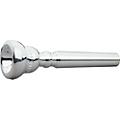 12B4 Silver
$71.50
{
"name": "12B4 Silver",
"skuUrl":"/brass-instruments/schilke-standard-series-trumpet-mouthpiece-group-i/475220000911902",
"status": "instock",
"statusText": "In stock",
"pimStatus": "R1",
"inventoryText": "In Stock & Ready To Ship",
"inventoryKey": "in_stock",
"prop65": "WARNING: This product can expose you to chemicals including Lead, which is known to the State of California to cause cancer, and to cause birth defects or other reproductive harm. For more information go to www.P65Warnings.ca.gov.",
"availableDate": "04-28-2024",
"price": 71.50,
"formatedIntegerValue": "71",
"decimalValue": "50",
"isOnSale": false,
"easyPayOptions":"0,0,300003,6 Months Promotional Financing,12/31/2024,Special 6-month 6-month special,71.5,true,/pages/Gear-Card-Rewards.gc,false,106,,/Special-Financing-Offers.gc,{primaryMonths}-month special financing,with no minimum purchase ,{secondaryMonths}-month financing,available on purchase of ${eligibleOrderValue} or more. Limited time,Get Details.,+ ${backInRewardsNum} back in rewards,No Interest if paid in full within 6 Months* On qualifying purchases thru 12/31/2024 made with your Musician's Friend Platinum credit card. Interest will be charged to your account from the purchase date if the promotional purchase is not paid in full within 6 months. Minimum monthly payments required. *Qualifying purchase amount must be on one receipt|| excluding the following: Open box gear and gift certificates. Cannot be combined with promotional coupons. No interest will be charged on the promo balance if you pay it off|| in full|| within the promo period. If you do not|| interest will be charged on the promo balance from the purchase date. The required minimum monthly payments may or may not pay off the promo balance before the end of the promo period|| depending on purchase amount|| promo length and payment allocation. Regular account terms apply to non-promo purchases and|| after promo period ends|| to the promo balance. New Account APR is 29.99%/Minimum Interest Charge is $2. Existing cardholders: See your credit card agreement terms. Subject to credit approval. ",
"msrp": 107.00,
"salePrice": 71.50,
"listPrice": 71.50,
"isPriceDrop": false,
"priceDropPrice": "",
"savingPercent": "0.00",
"promos":["freeShipping","topRated","topSeller","guarantee"],"freeWarrantyAvail": false,
"sku": "site1sku475220000911902",
"displaySku": "475220 000911902",
"serialized": false,
"downloadable":"false",
"shipsFree":true,
"condition": "New",
"priceVisibility": "",
"scene7SetID": "MMGS7/475220000911902_MEDIA_SET",
"inCheckoutPromo":"false",
"invMsgVendorDropShip":"false",
"invMsgOverSized":"false",
"invMsgBackOrdered":"false",
"invMsgPreOrder":"false",
"invMsgPromiseDate":"",
"fakeInvMsgPromiseDate":"",
"invMsgAvailability":"In Stock & Ready to Ship",
"invMsgDetail":"Estimated delivery 5-8 business days",
"invMsgAddOnText":"",
"invMsgCurrent":"In Stock & Ready to Ship",
"invMsgAfterCutoff":"",
"orderCutoffTime":"Wed Apr 17 08:00:00 PDT 2024",
"twoDayShippingSourceStatus":"",
"currencySymbol": "$",
"styleImgUrl": "https://media.musiciansfriend.com/is/image/MMGS7/Standard-Series-Trumpet-Mouthpiece-Group-I-12B4-Silver/475220000911902-00-140x140.jpg",
"styleImgAlt": "Standard Series Trumpet Mouthpiece Group I 12B4 Silver",
"freeGiftWarning":false,
"freeGiftWarningTips":"",
"kitCarouselItems": [],
"pdpLoyaltyPoints":"576",
"pdpLoyaltyPointsMultiplier":"1.0",
"checksum":"40240744800",
"restrictionType":"",
"restrictionError":""
}
12B4 Silver
$71.50
{
"name": "12B4 Silver",
"skuUrl":"/brass-instruments/schilke-standard-series-trumpet-mouthpiece-group-i/475220000911902",
"status": "instock",
"statusText": "In stock",
"pimStatus": "R1",
"inventoryText": "In Stock & Ready To Ship",
"inventoryKey": "in_stock",
"prop65": "WARNING: This product can expose you to chemicals including Lead, which is known to the State of California to cause cancer, and to cause birth defects or other reproductive harm. For more information go to www.P65Warnings.ca.gov.",
"availableDate": "04-28-2024",
"price": 71.50,
"formatedIntegerValue": "71",
"decimalValue": "50",
"isOnSale": false,
"easyPayOptions":"0,0,300003,6 Months Promotional Financing,12/31/2024,Special 6-month 6-month special,71.5,true,/pages/Gear-Card-Rewards.gc,false,106,,/Special-Financing-Offers.gc,{primaryMonths}-month special financing,with no minimum purchase ,{secondaryMonths}-month financing,available on purchase of ${eligibleOrderValue} or more. Limited time,Get Details.,+ ${backInRewardsNum} back in rewards,No Interest if paid in full within 6 Months* On qualifying purchases thru 12/31/2024 made with your Musician's Friend Platinum credit card. Interest will be charged to your account from the purchase date if the promotional purchase is not paid in full within 6 months. Minimum monthly payments required. *Qualifying purchase amount must be on one receipt|| excluding the following: Open box gear and gift certificates. Cannot be combined with promotional coupons. No interest will be charged on the promo balance if you pay it off|| in full|| within the promo period. If you do not|| interest will be charged on the promo balance from the purchase date. The required minimum monthly payments may or may not pay off the promo balance before the end of the promo period|| depending on purchase amount|| promo length and payment allocation. Regular account terms apply to non-promo purchases and|| after promo period ends|| to the promo balance. New Account APR is 29.99%/Minimum Interest Charge is $2. Existing cardholders: See your credit card agreement terms. Subject to credit approval. ",
"msrp": 107.00,
"salePrice": 71.50,
"listPrice": 71.50,
"isPriceDrop": false,
"priceDropPrice": "",
"savingPercent": "0.00",
"promos":["freeShipping","topRated","topSeller","guarantee"],"freeWarrantyAvail": false,
"sku": "site1sku475220000911902",
"displaySku": "475220 000911902",
"serialized": false,
"downloadable":"false",
"shipsFree":true,
"condition": "New",
"priceVisibility": "",
"scene7SetID": "MMGS7/475220000911902_MEDIA_SET",
"inCheckoutPromo":"false",
"invMsgVendorDropShip":"false",
"invMsgOverSized":"false",
"invMsgBackOrdered":"false",
"invMsgPreOrder":"false",
"invMsgPromiseDate":"",
"fakeInvMsgPromiseDate":"",
"invMsgAvailability":"In Stock & Ready to Ship",
"invMsgDetail":"Estimated delivery 5-8 business days",
"invMsgAddOnText":"",
"invMsgCurrent":"In Stock & Ready to Ship",
"invMsgAfterCutoff":"",
"orderCutoffTime":"Wed Apr 17 08:00:00 PDT 2024",
"twoDayShippingSourceStatus":"",
"currencySymbol": "$",
"styleImgUrl": "https://media.musiciansfriend.com/is/image/MMGS7/Standard-Series-Trumpet-Mouthpiece-Group-I-12B4-Silver/475220000911902-00-140x140.jpg",
"styleImgAlt": "Standard Series Trumpet Mouthpiece Group I 12B4 Silver",
"freeGiftWarning":false,
"freeGiftWarningTips":"",
"kitCarouselItems": [],
"pdpLoyaltyPoints":"576",
"pdpLoyaltyPointsMultiplier":"1.0",
"checksum":"40240744800",
"restrictionType":"",
"restrictionError":""
}
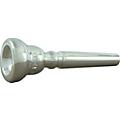 13A4a Silver
$71.50
{
"name": "13A4a Silver",
"skuUrl":"/brass-instruments/schilke-standard-series-trumpet-mouthpiece-group-i/475220000913902",
"status": "instock",
"statusText": "In stock",
"pimStatus": "R1",
"inventoryText": "In Stock & Ready To Ship",
"inventoryKey": "in_stock",
"prop65": "WARNING: This product can expose you to chemicals including Lead, which is known to the State of California to cause cancer, and to cause birth defects or other reproductive harm. For more information go to www.P65Warnings.ca.gov.",
"availableDate": "06-16-2024",
"price": 71.50,
"formatedIntegerValue": "71",
"decimalValue": "50",
"isOnSale": false,
"easyPayOptions":"0,0,300003,6 Months Promotional Financing,12/31/2024,Special 6-month 6-month special,71.5,true,/pages/Gear-Card-Rewards.gc,false,106,,/Special-Financing-Offers.gc,{primaryMonths}-month special financing,with no minimum purchase ,{secondaryMonths}-month financing,available on purchase of ${eligibleOrderValue} or more. Limited time,Get Details.,+ ${backInRewardsNum} back in rewards,No Interest if paid in full within 6 Months* On qualifying purchases thru 12/31/2024 made with your Musician's Friend Platinum credit card. Interest will be charged to your account from the purchase date if the promotional purchase is not paid in full within 6 months. Minimum monthly payments required. *Qualifying purchase amount must be on one receipt|| excluding the following: Open box gear and gift certificates. Cannot be combined with promotional coupons. No interest will be charged on the promo balance if you pay it off|| in full|| within the promo period. If you do not|| interest will be charged on the promo balance from the purchase date. The required minimum monthly payments may or may not pay off the promo balance before the end of the promo period|| depending on purchase amount|| promo length and payment allocation. Regular account terms apply to non-promo purchases and|| after promo period ends|| to the promo balance. New Account APR is 29.99%/Minimum Interest Charge is $2. Existing cardholders: See your credit card agreement terms. Subject to credit approval. ",
"msrp": 107.00,
"salePrice": 71.50,
"listPrice": 71.50,
"isPriceDrop": false,
"priceDropPrice": "",
"savingPercent": "0.00",
"promos":["freeShipping","topRated","guarantee"],"freeWarrantyAvail": false,
"sku": "site1sku475220000913902",
"displaySku": "475220 000913902",
"serialized": false,
"downloadable":"false",
"shipsFree":true,
"condition": "New",
"priceVisibility": "",
"scene7SetID": "MMGS7/475220000913902_MEDIA_SET",
"inCheckoutPromo":"false",
"invMsgVendorDropShip":"false",
"invMsgOverSized":"false",
"invMsgBackOrdered":"false",
"invMsgPreOrder":"false",
"invMsgPromiseDate":"",
"fakeInvMsgPromiseDate":"",
"invMsgAvailability":"In Stock & Ready to Ship",
"invMsgDetail":"Estimated delivery 5-8 business days",
"invMsgAddOnText":"",
"invMsgCurrent":"In Stock & Ready to Ship",
"invMsgAfterCutoff":"",
"orderCutoffTime":"Wed Apr 17 08:00:00 PDT 2024",
"twoDayShippingSourceStatus":"",
"currencySymbol": "$",
"styleImgUrl": "https://media.musiciansfriend.com/is/image/MMGS7/Standard-Series-Trumpet-Mouthpiece-Group-I-13A4a-Silver/475220000913902-00-140x140.jpg",
"styleImgAlt": "Standard Series Trumpet Mouthpiece Group I 13A4a Silver",
"freeGiftWarning":false,
"freeGiftWarningTips":"",
"kitCarouselItems": [],
"pdpLoyaltyPoints":"576",
"pdpLoyaltyPointsMultiplier":"1.0",
"checksum":"40240744800",
"restrictionType":"",
"restrictionError":""
}
13A4a Silver
$71.50
{
"name": "13A4a Silver",
"skuUrl":"/brass-instruments/schilke-standard-series-trumpet-mouthpiece-group-i/475220000913902",
"status": "instock",
"statusText": "In stock",
"pimStatus": "R1",
"inventoryText": "In Stock & Ready To Ship",
"inventoryKey": "in_stock",
"prop65": "WARNING: This product can expose you to chemicals including Lead, which is known to the State of California to cause cancer, and to cause birth defects or other reproductive harm. For more information go to www.P65Warnings.ca.gov.",
"availableDate": "06-16-2024",
"price": 71.50,
"formatedIntegerValue": "71",
"decimalValue": "50",
"isOnSale": false,
"easyPayOptions":"0,0,300003,6 Months Promotional Financing,12/31/2024,Special 6-month 6-month special,71.5,true,/pages/Gear-Card-Rewards.gc,false,106,,/Special-Financing-Offers.gc,{primaryMonths}-month special financing,with no minimum purchase ,{secondaryMonths}-month financing,available on purchase of ${eligibleOrderValue} or more. Limited time,Get Details.,+ ${backInRewardsNum} back in rewards,No Interest if paid in full within 6 Months* On qualifying purchases thru 12/31/2024 made with your Musician's Friend Platinum credit card. Interest will be charged to your account from the purchase date if the promotional purchase is not paid in full within 6 months. Minimum monthly payments required. *Qualifying purchase amount must be on one receipt|| excluding the following: Open box gear and gift certificates. Cannot be combined with promotional coupons. No interest will be charged on the promo balance if you pay it off|| in full|| within the promo period. If you do not|| interest will be charged on the promo balance from the purchase date. The required minimum monthly payments may or may not pay off the promo balance before the end of the promo period|| depending on purchase amount|| promo length and payment allocation. Regular account terms apply to non-promo purchases and|| after promo period ends|| to the promo balance. New Account APR is 29.99%/Minimum Interest Charge is $2. Existing cardholders: See your credit card agreement terms. Subject to credit approval. ",
"msrp": 107.00,
"salePrice": 71.50,
"listPrice": 71.50,
"isPriceDrop": false,
"priceDropPrice": "",
"savingPercent": "0.00",
"promos":["freeShipping","topRated","guarantee"],"freeWarrantyAvail": false,
"sku": "site1sku475220000913902",
"displaySku": "475220 000913902",
"serialized": false,
"downloadable":"false",
"shipsFree":true,
"condition": "New",
"priceVisibility": "",
"scene7SetID": "MMGS7/475220000913902_MEDIA_SET",
"inCheckoutPromo":"false",
"invMsgVendorDropShip":"false",
"invMsgOverSized":"false",
"invMsgBackOrdered":"false",
"invMsgPreOrder":"false",
"invMsgPromiseDate":"",
"fakeInvMsgPromiseDate":"",
"invMsgAvailability":"In Stock & Ready to Ship",
"invMsgDetail":"Estimated delivery 5-8 business days",
"invMsgAddOnText":"",
"invMsgCurrent":"In Stock & Ready to Ship",
"invMsgAfterCutoff":"",
"orderCutoffTime":"Wed Apr 17 08:00:00 PDT 2024",
"twoDayShippingSourceStatus":"",
"currencySymbol": "$",
"styleImgUrl": "https://media.musiciansfriend.com/is/image/MMGS7/Standard-Series-Trumpet-Mouthpiece-Group-I-13A4a-Silver/475220000913902-00-140x140.jpg",
"styleImgAlt": "Standard Series Trumpet Mouthpiece Group I 13A4a Silver",
"freeGiftWarning":false,
"freeGiftWarningTips":"",
"kitCarouselItems": [],
"pdpLoyaltyPoints":"576",
"pdpLoyaltyPointsMultiplier":"1.0",
"checksum":"40240744800",
"restrictionType":"",
"restrictionError":""
}
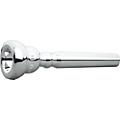 13A4 Silver
$71.50
{
"name": "13A4 Silver",
"skuUrl":"/brass-instruments/schilke-standard-series-trumpet-mouthpiece-group-i/475220000914902",
"status": "instock",
"statusText": "In stock",
"pimStatus": "R1",
"inventoryText": "In Stock & Ready To Ship",
"inventoryKey": "in_stock",
"prop65": "WARNING: This product can expose you to chemicals including Lead, which is known to the State of California to cause cancer, and to cause birth defects or other reproductive harm. For more information go to www.P65Warnings.ca.gov.",
"availableDate": "04-23-2024",
"price": 71.50,
"formatedIntegerValue": "71",
"decimalValue": "50",
"isOnSale": false,
"easyPayOptions":"0,0,300003,6 Months Promotional Financing,12/31/2024,Special 6-month 6-month special,71.5,true,/pages/Gear-Card-Rewards.gc,false,106,,/Special-Financing-Offers.gc,{primaryMonths}-month special financing,with no minimum purchase ,{secondaryMonths}-month financing,available on purchase of ${eligibleOrderValue} or more. Limited time,Get Details.,+ ${backInRewardsNum} back in rewards,No Interest if paid in full within 6 Months* On qualifying purchases thru 12/31/2024 made with your Musician's Friend Platinum credit card. Interest will be charged to your account from the purchase date if the promotional purchase is not paid in full within 6 months. Minimum monthly payments required. *Qualifying purchase amount must be on one receipt|| excluding the following: Open box gear and gift certificates. Cannot be combined with promotional coupons. No interest will be charged on the promo balance if you pay it off|| in full|| within the promo period. If you do not|| interest will be charged on the promo balance from the purchase date. The required minimum monthly payments may or may not pay off the promo balance before the end of the promo period|| depending on purchase amount|| promo length and payment allocation. Regular account terms apply to non-promo purchases and|| after promo period ends|| to the promo balance. New Account APR is 29.99%/Minimum Interest Charge is $2. Existing cardholders: See your credit card agreement terms. Subject to credit approval. ",
"msrp": 107.00,
"salePrice": 71.50,
"listPrice": 71.50,
"isPriceDrop": false,
"priceDropPrice": "",
"savingPercent": "0.00",
"promos":["freeShipping","topRated","topSeller","guarantee"],"freeWarrantyAvail": false,
"sku": "site1sku475220000914902",
"displaySku": "475220 000914902",
"serialized": false,
"downloadable":"false",
"shipsFree":true,
"condition": "New",
"priceVisibility": "",
"scene7SetID": "MMGS7/475220000914902_MEDIA_SET",
"inCheckoutPromo":"false",
"invMsgVendorDropShip":"false",
"invMsgOverSized":"false",
"invMsgBackOrdered":"false",
"invMsgPreOrder":"false",
"invMsgPromiseDate":"",
"fakeInvMsgPromiseDate":"",
"invMsgAvailability":"In Stock & Ready to Ship",
"invMsgDetail":"Estimated delivery 5-8 business days",
"invMsgAddOnText":"",
"invMsgCurrent":"In Stock & Ready to Ship",
"invMsgAfterCutoff":"",
"orderCutoffTime":"Wed Apr 17 08:00:00 PDT 2024",
"twoDayShippingSourceStatus":"",
"currencySymbol": "$",
"styleImgUrl": "https://media.musiciansfriend.com/is/image/MMGS7/Standard-Series-Trumpet-Mouthpiece-Group-I-13A4-Silver/475220000914902-00-140x140.jpg",
"styleImgAlt": "Standard Series Trumpet Mouthpiece Group I 13A4 Silver",
"freeGiftWarning":false,
"freeGiftWarningTips":"",
"kitCarouselItems": [],
"pdpLoyaltyPoints":"576",
"pdpLoyaltyPointsMultiplier":"1.0",
"checksum":"40240744800",
"restrictionType":"",
"restrictionError":""
}
13A4 Silver
$71.50
{
"name": "13A4 Silver",
"skuUrl":"/brass-instruments/schilke-standard-series-trumpet-mouthpiece-group-i/475220000914902",
"status": "instock",
"statusText": "In stock",
"pimStatus": "R1",
"inventoryText": "In Stock & Ready To Ship",
"inventoryKey": "in_stock",
"prop65": "WARNING: This product can expose you to chemicals including Lead, which is known to the State of California to cause cancer, and to cause birth defects or other reproductive harm. For more information go to www.P65Warnings.ca.gov.",
"availableDate": "04-23-2024",
"price": 71.50,
"formatedIntegerValue": "71",
"decimalValue": "50",
"isOnSale": false,
"easyPayOptions":"0,0,300003,6 Months Promotional Financing,12/31/2024,Special 6-month 6-month special,71.5,true,/pages/Gear-Card-Rewards.gc,false,106,,/Special-Financing-Offers.gc,{primaryMonths}-month special financing,with no minimum purchase ,{secondaryMonths}-month financing,available on purchase of ${eligibleOrderValue} or more. Limited time,Get Details.,+ ${backInRewardsNum} back in rewards,No Interest if paid in full within 6 Months* On qualifying purchases thru 12/31/2024 made with your Musician's Friend Platinum credit card. Interest will be charged to your account from the purchase date if the promotional purchase is not paid in full within 6 months. Minimum monthly payments required. *Qualifying purchase amount must be on one receipt|| excluding the following: Open box gear and gift certificates. Cannot be combined with promotional coupons. No interest will be charged on the promo balance if you pay it off|| in full|| within the promo period. If you do not|| interest will be charged on the promo balance from the purchase date. The required minimum monthly payments may or may not pay off the promo balance before the end of the promo period|| depending on purchase amount|| promo length and payment allocation. Regular account terms apply to non-promo purchases and|| after promo period ends|| to the promo balance. New Account APR is 29.99%/Minimum Interest Charge is $2. Existing cardholders: See your credit card agreement terms. Subject to credit approval. ",
"msrp": 107.00,
"salePrice": 71.50,
"listPrice": 71.50,
"isPriceDrop": false,
"priceDropPrice": "",
"savingPercent": "0.00",
"promos":["freeShipping","topRated","topSeller","guarantee"],"freeWarrantyAvail": false,
"sku": "site1sku475220000914902",
"displaySku": "475220 000914902",
"serialized": false,
"downloadable":"false",
"shipsFree":true,
"condition": "New",
"priceVisibility": "",
"scene7SetID": "MMGS7/475220000914902_MEDIA_SET",
"inCheckoutPromo":"false",
"invMsgVendorDropShip":"false",
"invMsgOverSized":"false",
"invMsgBackOrdered":"false",
"invMsgPreOrder":"false",
"invMsgPromiseDate":"",
"fakeInvMsgPromiseDate":"",
"invMsgAvailability":"In Stock & Ready to Ship",
"invMsgDetail":"Estimated delivery 5-8 business days",
"invMsgAddOnText":"",
"invMsgCurrent":"In Stock & Ready to Ship",
"invMsgAfterCutoff":"",
"orderCutoffTime":"Wed Apr 17 08:00:00 PDT 2024",
"twoDayShippingSourceStatus":"",
"currencySymbol": "$",
"styleImgUrl": "https://media.musiciansfriend.com/is/image/MMGS7/Standard-Series-Trumpet-Mouthpiece-Group-I-13A4-Silver/475220000914902-00-140x140.jpg",
"styleImgAlt": "Standard Series Trumpet Mouthpiece Group I 13A4 Silver",
"freeGiftWarning":false,
"freeGiftWarningTips":"",
"kitCarouselItems": [],
"pdpLoyaltyPoints":"576",
"pdpLoyaltyPointsMultiplier":"1.0",
"checksum":"40240744800",
"restrictionType":"",
"restrictionError":""
}
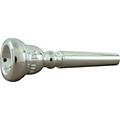 13B Silver
$71.50
{
"name": "13B Silver",
"skuUrl":"/brass-instruments/schilke-standard-series-trumpet-mouthpiece-group-i/475220000915902",
"status": "instock",
"statusText": "In stock",
"pimStatus": "R1",
"inventoryText": "In Stock & Ready To Ship",
"inventoryKey": "in_stock",
"prop65": "WARNING: This product can expose you to chemicals including Lead, which is known to the State of California to cause cancer, and to cause birth defects or other reproductive harm. For more information go to www.P65Warnings.ca.gov.",
"availableDate": "06-12-2024",
"price": 71.50,
"formatedIntegerValue": "71",
"decimalValue": "50",
"isOnSale": false,
"easyPayOptions":"0,0,300003,6 Months Promotional Financing,12/31/2024,Special 6-month 6-month special,71.5,true,/pages/Gear-Card-Rewards.gc,false,106,,/Special-Financing-Offers.gc,{primaryMonths}-month special financing,with no minimum purchase ,{secondaryMonths}-month financing,available on purchase of ${eligibleOrderValue} or more. Limited time,Get Details.,+ ${backInRewardsNum} back in rewards,No Interest if paid in full within 6 Months* On qualifying purchases thru 12/31/2024 made with your Musician's Friend Platinum credit card. Interest will be charged to your account from the purchase date if the promotional purchase is not paid in full within 6 months. Minimum monthly payments required. *Qualifying purchase amount must be on one receipt|| excluding the following: Open box gear and gift certificates. Cannot be combined with promotional coupons. No interest will be charged on the promo balance if you pay it off|| in full|| within the promo period. If you do not|| interest will be charged on the promo balance from the purchase date. The required minimum monthly payments may or may not pay off the promo balance before the end of the promo period|| depending on purchase amount|| promo length and payment allocation. Regular account terms apply to non-promo purchases and|| after promo period ends|| to the promo balance. New Account APR is 29.99%/Minimum Interest Charge is $2. Existing cardholders: See your credit card agreement terms. Subject to credit approval. ",
"msrp": 107.00,
"salePrice": 71.50,
"listPrice": 71.50,
"isPriceDrop": false,
"priceDropPrice": "",
"savingPercent": "0.00",
"promos":["freeShipping","topRated","guarantee"],"freeWarrantyAvail": false,
"sku": "site1sku475220000915902",
"displaySku": "475220 000915902",
"serialized": false,
"downloadable":"false",
"shipsFree":true,
"condition": "New",
"priceVisibility": "",
"scene7SetID": "MMGS7/475220000915902_MEDIA_SET",
"inCheckoutPromo":"false",
"invMsgVendorDropShip":"false",
"invMsgOverSized":"false",
"invMsgBackOrdered":"false",
"invMsgPreOrder":"false",
"invMsgPromiseDate":"",
"fakeInvMsgPromiseDate":"",
"invMsgAvailability":"In Stock & Ready to Ship",
"invMsgDetail":"Estimated delivery 5-8 business days",
"invMsgAddOnText":"",
"invMsgCurrent":"In Stock & Ready to Ship",
"invMsgAfterCutoff":"",
"orderCutoffTime":"Wed Apr 17 08:00:00 PDT 2024",
"twoDayShippingSourceStatus":"",
"currencySymbol": "$",
"styleImgUrl": "https://media.musiciansfriend.com/is/image/MMGS7/Standard-Series-Trumpet-Mouthpiece-Group-I-13B-Silver/475220000915902-00-140x140.jpg",
"styleImgAlt": "Standard Series Trumpet Mouthpiece Group I 13B Silver",
"freeGiftWarning":false,
"freeGiftWarningTips":"",
"kitCarouselItems": [],
"pdpLoyaltyPoints":"576",
"pdpLoyaltyPointsMultiplier":"1.0",
"checksum":"40240744800",
"restrictionType":"",
"restrictionError":""
}
13B Silver
$71.50
{
"name": "13B Silver",
"skuUrl":"/brass-instruments/schilke-standard-series-trumpet-mouthpiece-group-i/475220000915902",
"status": "instock",
"statusText": "In stock",
"pimStatus": "R1",
"inventoryText": "In Stock & Ready To Ship",
"inventoryKey": "in_stock",
"prop65": "WARNING: This product can expose you to chemicals including Lead, which is known to the State of California to cause cancer, and to cause birth defects or other reproductive harm. For more information go to www.P65Warnings.ca.gov.",
"availableDate": "06-12-2024",
"price": 71.50,
"formatedIntegerValue": "71",
"decimalValue": "50",
"isOnSale": false,
"easyPayOptions":"0,0,300003,6 Months Promotional Financing,12/31/2024,Special 6-month 6-month special,71.5,true,/pages/Gear-Card-Rewards.gc,false,106,,/Special-Financing-Offers.gc,{primaryMonths}-month special financing,with no minimum purchase ,{secondaryMonths}-month financing,available on purchase of ${eligibleOrderValue} or more. Limited time,Get Details.,+ ${backInRewardsNum} back in rewards,No Interest if paid in full within 6 Months* On qualifying purchases thru 12/31/2024 made with your Musician's Friend Platinum credit card. Interest will be charged to your account from the purchase date if the promotional purchase is not paid in full within 6 months. Minimum monthly payments required. *Qualifying purchase amount must be on one receipt|| excluding the following: Open box gear and gift certificates. Cannot be combined with promotional coupons. No interest will be charged on the promo balance if you pay it off|| in full|| within the promo period. If you do not|| interest will be charged on the promo balance from the purchase date. The required minimum monthly payments may or may not pay off the promo balance before the end of the promo period|| depending on purchase amount|| promo length and payment allocation. Regular account terms apply to non-promo purchases and|| after promo period ends|| to the promo balance. New Account APR is 29.99%/Minimum Interest Charge is $2. Existing cardholders: See your credit card agreement terms. Subject to credit approval. ",
"msrp": 107.00,
"salePrice": 71.50,
"listPrice": 71.50,
"isPriceDrop": false,
"priceDropPrice": "",
"savingPercent": "0.00",
"promos":["freeShipping","topRated","guarantee"],"freeWarrantyAvail": false,
"sku": "site1sku475220000915902",
"displaySku": "475220 000915902",
"serialized": false,
"downloadable":"false",
"shipsFree":true,
"condition": "New",
"priceVisibility": "",
"scene7SetID": "MMGS7/475220000915902_MEDIA_SET",
"inCheckoutPromo":"false",
"invMsgVendorDropShip":"false",
"invMsgOverSized":"false",
"invMsgBackOrdered":"false",
"invMsgPreOrder":"false",
"invMsgPromiseDate":"",
"fakeInvMsgPromiseDate":"",
"invMsgAvailability":"In Stock & Ready to Ship",
"invMsgDetail":"Estimated delivery 5-8 business days",
"invMsgAddOnText":"",
"invMsgCurrent":"In Stock & Ready to Ship",
"invMsgAfterCutoff":"",
"orderCutoffTime":"Wed Apr 17 08:00:00 PDT 2024",
"twoDayShippingSourceStatus":"",
"currencySymbol": "$",
"styleImgUrl": "https://media.musiciansfriend.com/is/image/MMGS7/Standard-Series-Trumpet-Mouthpiece-Group-I-13B-Silver/475220000915902-00-140x140.jpg",
"styleImgAlt": "Standard Series Trumpet Mouthpiece Group I 13B Silver",
"freeGiftWarning":false,
"freeGiftWarningTips":"",
"kitCarouselItems": [],
"pdpLoyaltyPoints":"576",
"pdpLoyaltyPointsMultiplier":"1.0",
"checksum":"40240744800",
"restrictionType":"",
"restrictionError":""
}
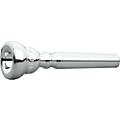 13C4 Silver
$71.50
{
"name": "13C4 Silver",
"skuUrl":"/brass-instruments/schilke-standard-series-trumpet-mouthpiece-group-i/475220000916902",
"status": "instock",
"statusText": "In stock",
"pimStatus": "R1",
"inventoryText": "In Stock & Ready To Ship",
"inventoryKey": "in_stock",
"prop65": "WARNING: This product can expose you to chemicals including Lead, which is known to the State of California to cause cancer, and to cause birth defects or other reproductive harm. For more information go to www.P65Warnings.ca.gov.",
"availableDate": "06-16-2024",
"price": 71.50,
"formatedIntegerValue": "71",
"decimalValue": "50",
"isOnSale": false,
"easyPayOptions":"0,0,300003,6 Months Promotional Financing,12/31/2024,Special 6-month 6-month special,71.5,true,/pages/Gear-Card-Rewards.gc,false,106,,/Special-Financing-Offers.gc,{primaryMonths}-month special financing,with no minimum purchase ,{secondaryMonths}-month financing,available on purchase of ${eligibleOrderValue} or more. Limited time,Get Details.,+ ${backInRewardsNum} back in rewards,No Interest if paid in full within 6 Months* On qualifying purchases thru 12/31/2024 made with your Musician's Friend Platinum credit card. Interest will be charged to your account from the purchase date if the promotional purchase is not paid in full within 6 months. Minimum monthly payments required. *Qualifying purchase amount must be on one receipt|| excluding the following: Open box gear and gift certificates. Cannot be combined with promotional coupons. No interest will be charged on the promo balance if you pay it off|| in full|| within the promo period. If you do not|| interest will be charged on the promo balance from the purchase date. The required minimum monthly payments may or may not pay off the promo balance before the end of the promo period|| depending on purchase amount|| promo length and payment allocation. Regular account terms apply to non-promo purchases and|| after promo period ends|| to the promo balance. New Account APR is 29.99%/Minimum Interest Charge is $2. Existing cardholders: See your credit card agreement terms. Subject to credit approval. ",
"msrp": 107.00,
"salePrice": 71.50,
"listPrice": 71.50,
"isPriceDrop": false,
"priceDropPrice": "",
"savingPercent": "0.00",
"promos":["freeShipping","topRated","guarantee"],"freeWarrantyAvail": false,
"sku": "site1sku475220000916902",
"displaySku": "475220 000916902",
"serialized": false,
"downloadable":"false",
"shipsFree":true,
"condition": "New",
"priceVisibility": "",
"scene7SetID": "MMGS7/475220000916902_MEDIA_SET",
"inCheckoutPromo":"false",
"invMsgVendorDropShip":"false",
"invMsgOverSized":"false",
"invMsgBackOrdered":"false",
"invMsgPreOrder":"false",
"invMsgPromiseDate":"",
"fakeInvMsgPromiseDate":"",
"invMsgAvailability":"In Stock & Ready to Ship",
"invMsgDetail":"Estimated delivery 5-8 business days",
"invMsgAddOnText":"",
"invMsgCurrent":"In Stock & Ready to Ship",
"invMsgAfterCutoff":"",
"orderCutoffTime":"Wed Apr 17 08:00:00 PDT 2024",
"twoDayShippingSourceStatus":"",
"currencySymbol": "$",
"styleImgUrl": "https://media.musiciansfriend.com/is/image/MMGS7/Standard-Series-Trumpet-Mouthpiece-Group-I-13C4-Silver/475220000916902-00-140x140.jpg",
"styleImgAlt": "Standard Series Trumpet Mouthpiece Group I 13C4 Silver",
"freeGiftWarning":false,
"freeGiftWarningTips":"",
"kitCarouselItems": [],
"pdpLoyaltyPoints":"576",
"pdpLoyaltyPointsMultiplier":"1.0",
"checksum":"40240744800",
"restrictionType":"",
"restrictionError":""
}
13C4 Silver
$71.50
{
"name": "13C4 Silver",
"skuUrl":"/brass-instruments/schilke-standard-series-trumpet-mouthpiece-group-i/475220000916902",
"status": "instock",
"statusText": "In stock",
"pimStatus": "R1",
"inventoryText": "In Stock & Ready To Ship",
"inventoryKey": "in_stock",
"prop65": "WARNING: This product can expose you to chemicals including Lead, which is known to the State of California to cause cancer, and to cause birth defects or other reproductive harm. For more information go to www.P65Warnings.ca.gov.",
"availableDate": "06-16-2024",
"price": 71.50,
"formatedIntegerValue": "71",
"decimalValue": "50",
"isOnSale": false,
"easyPayOptions":"0,0,300003,6 Months Promotional Financing,12/31/2024,Special 6-month 6-month special,71.5,true,/pages/Gear-Card-Rewards.gc,false,106,,/Special-Financing-Offers.gc,{primaryMonths}-month special financing,with no minimum purchase ,{secondaryMonths}-month financing,available on purchase of ${eligibleOrderValue} or more. Limited time,Get Details.,+ ${backInRewardsNum} back in rewards,No Interest if paid in full within 6 Months* On qualifying purchases thru 12/31/2024 made with your Musician's Friend Platinum credit card. Interest will be charged to your account from the purchase date if the promotional purchase is not paid in full within 6 months. Minimum monthly payments required. *Qualifying purchase amount must be on one receipt|| excluding the following: Open box gear and gift certificates. Cannot be combined with promotional coupons. No interest will be charged on the promo balance if you pay it off|| in full|| within the promo period. If you do not|| interest will be charged on the promo balance from the purchase date. The required minimum monthly payments may or may not pay off the promo balance before the end of the promo period|| depending on purchase amount|| promo length and payment allocation. Regular account terms apply to non-promo purchases and|| after promo period ends|| to the promo balance. New Account APR is 29.99%/Minimum Interest Charge is $2. Existing cardholders: See your credit card agreement terms. Subject to credit approval. ",
"msrp": 107.00,
"salePrice": 71.50,
"listPrice": 71.50,
"isPriceDrop": false,
"priceDropPrice": "",
"savingPercent": "0.00",
"promos":["freeShipping","topRated","guarantee"],"freeWarrantyAvail": false,
"sku": "site1sku475220000916902",
"displaySku": "475220 000916902",
"serialized": false,
"downloadable":"false",
"shipsFree":true,
"condition": "New",
"priceVisibility": "",
"scene7SetID": "MMGS7/475220000916902_MEDIA_SET",
"inCheckoutPromo":"false",
"invMsgVendorDropShip":"false",
"invMsgOverSized":"false",
"invMsgBackOrdered":"false",
"invMsgPreOrder":"false",
"invMsgPromiseDate":"",
"fakeInvMsgPromiseDate":"",
"invMsgAvailability":"In Stock & Ready to Ship",
"invMsgDetail":"Estimated delivery 5-8 business days",
"invMsgAddOnText":"",
"invMsgCurrent":"In Stock & Ready to Ship",
"invMsgAfterCutoff":"",
"orderCutoffTime":"Wed Apr 17 08:00:00 PDT 2024",
"twoDayShippingSourceStatus":"",
"currencySymbol": "$",
"styleImgUrl": "https://media.musiciansfriend.com/is/image/MMGS7/Standard-Series-Trumpet-Mouthpiece-Group-I-13C4-Silver/475220000916902-00-140x140.jpg",
"styleImgAlt": "Standard Series Trumpet Mouthpiece Group I 13C4 Silver",
"freeGiftWarning":false,
"freeGiftWarningTips":"",
"kitCarouselItems": [],
"pdpLoyaltyPoints":"576",
"pdpLoyaltyPointsMultiplier":"1.0",
"checksum":"40240744800",
"restrictionType":"",
"restrictionError":""
}
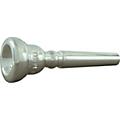 14A4a Silver
$71.50
{
"name": "14A4a Silver",
"skuUrl":"/brass-instruments/schilke-standard-series-trumpet-mouthpiece-group-i/475220000917902",
"status": "instock",
"statusText": "In stock",
"pimStatus": "R1",
"inventoryText": "In Stock & Ready To Ship",
"inventoryKey": "in_stock",
"prop65": "WARNING: This product can expose you to chemicals including Lead, which is known to the State of California to cause cancer, and to cause birth defects or other reproductive harm. For more information go to www.P65Warnings.ca.gov.",
"availableDate": "06-16-2024",
"price": 71.50,
"formatedIntegerValue": "71",
"decimalValue": "50",
"isOnSale": false,
"easyPayOptions":"0,0,300003,6 Months Promotional Financing,12/31/2024,Special 6-month 6-month special,71.5,true,/pages/Gear-Card-Rewards.gc,false,106,,/Special-Financing-Offers.gc,{primaryMonths}-month special financing,with no minimum purchase ,{secondaryMonths}-month financing,available on purchase of ${eligibleOrderValue} or more. Limited time,Get Details.,+ ${backInRewardsNum} back in rewards,No Interest if paid in full within 6 Months* On qualifying purchases thru 12/31/2024 made with your Musician's Friend Platinum credit card. Interest will be charged to your account from the purchase date if the promotional purchase is not paid in full within 6 months. Minimum monthly payments required. *Qualifying purchase amount must be on one receipt|| excluding the following: Open box gear and gift certificates. Cannot be combined with promotional coupons. No interest will be charged on the promo balance if you pay it off|| in full|| within the promo period. If you do not|| interest will be charged on the promo balance from the purchase date. The required minimum monthly payments may or may not pay off the promo balance before the end of the promo period|| depending on purchase amount|| promo length and payment allocation. Regular account terms apply to non-promo purchases and|| after promo period ends|| to the promo balance. New Account APR is 29.99%/Minimum Interest Charge is $2. Existing cardholders: See your credit card agreement terms. Subject to credit approval. ",
"msrp": 107.00,
"salePrice": 71.50,
"listPrice": 71.50,
"isPriceDrop": false,
"priceDropPrice": "",
"savingPercent": "0.00",
"promos":["freeShipping","topRated","topSeller","guarantee"],"freeWarrantyAvail": false,
"sku": "site1sku475220000917902",
"displaySku": "475220 000917902",
"serialized": false,
"downloadable":"false",
"shipsFree":true,
"condition": "New",
"priceVisibility": "",
"scene7SetID": "MMGS7/475220000917902_MEDIA_SET",
"inCheckoutPromo":"false",
"invMsgVendorDropShip":"false",
"invMsgOverSized":"false",
"invMsgBackOrdered":"false",
"invMsgPreOrder":"false",
"invMsgPromiseDate":"",
"fakeInvMsgPromiseDate":"",
"invMsgAvailability":"In Stock & Ready to Ship",
"invMsgDetail":"Estimated delivery 5-8 business days",
"invMsgAddOnText":"",
"invMsgCurrent":"In Stock & Ready to Ship",
"invMsgAfterCutoff":"",
"orderCutoffTime":"Wed Apr 17 08:00:00 PDT 2024",
"twoDayShippingSourceStatus":"",
"currencySymbol": "$",
"styleImgUrl": "https://media.musiciansfriend.com/is/image/MMGS7/Standard-Series-Trumpet-Mouthpiece-Group-I-14A4a-Silver/475220000917902-00-140x140.jpg",
"styleImgAlt": "Standard Series Trumpet Mouthpiece Group I 14A4a Silver",
"freeGiftWarning":false,
"freeGiftWarningTips":"",
"kitCarouselItems": [],
"pdpLoyaltyPoints":"576",
"pdpLoyaltyPointsMultiplier":"1.0",
"checksum":"40240744800",
"restrictionType":"",
"restrictionError":""
}
14A4a Silver
$71.50
{
"name": "14A4a Silver",
"skuUrl":"/brass-instruments/schilke-standard-series-trumpet-mouthpiece-group-i/475220000917902",
"status": "instock",
"statusText": "In stock",
"pimStatus": "R1",
"inventoryText": "In Stock & Ready To Ship",
"inventoryKey": "in_stock",
"prop65": "WARNING: This product can expose you to chemicals including Lead, which is known to the State of California to cause cancer, and to cause birth defects or other reproductive harm. For more information go to www.P65Warnings.ca.gov.",
"availableDate": "06-16-2024",
"price": 71.50,
"formatedIntegerValue": "71",
"decimalValue": "50",
"isOnSale": false,
"easyPayOptions":"0,0,300003,6 Months Promotional Financing,12/31/2024,Special 6-month 6-month special,71.5,true,/pages/Gear-Card-Rewards.gc,false,106,,/Special-Financing-Offers.gc,{primaryMonths}-month special financing,with no minimum purchase ,{secondaryMonths}-month financing,available on purchase of ${eligibleOrderValue} or more. Limited time,Get Details.,+ ${backInRewardsNum} back in rewards,No Interest if paid in full within 6 Months* On qualifying purchases thru 12/31/2024 made with your Musician's Friend Platinum credit card. Interest will be charged to your account from the purchase date if the promotional purchase is not paid in full within 6 months. Minimum monthly payments required. *Qualifying purchase amount must be on one receipt|| excluding the following: Open box gear and gift certificates. Cannot be combined with promotional coupons. No interest will be charged on the promo balance if you pay it off|| in full|| within the promo period. If you do not|| interest will be charged on the promo balance from the purchase date. The required minimum monthly payments may or may not pay off the promo balance before the end of the promo period|| depending on purchase amount|| promo length and payment allocation. Regular account terms apply to non-promo purchases and|| after promo period ends|| to the promo balance. New Account APR is 29.99%/Minimum Interest Charge is $2. Existing cardholders: See your credit card agreement terms. Subject to credit approval. ",
"msrp": 107.00,
"salePrice": 71.50,
"listPrice": 71.50,
"isPriceDrop": false,
"priceDropPrice": "",
"savingPercent": "0.00",
"promos":["freeShipping","topRated","topSeller","guarantee"],"freeWarrantyAvail": false,
"sku": "site1sku475220000917902",
"displaySku": "475220 000917902",
"serialized": false,
"downloadable":"false",
"shipsFree":true,
"condition": "New",
"priceVisibility": "",
"scene7SetID": "MMGS7/475220000917902_MEDIA_SET",
"inCheckoutPromo":"false",
"invMsgVendorDropShip":"false",
"invMsgOverSized":"false",
"invMsgBackOrdered":"false",
"invMsgPreOrder":"false",
"invMsgPromiseDate":"",
"fakeInvMsgPromiseDate":"",
"invMsgAvailability":"In Stock & Ready to Ship",
"invMsgDetail":"Estimated delivery 5-8 business days",
"invMsgAddOnText":"",
"invMsgCurrent":"In Stock & Ready to Ship",
"invMsgAfterCutoff":"",
"orderCutoffTime":"Wed Apr 17 08:00:00 PDT 2024",
"twoDayShippingSourceStatus":"",
"currencySymbol": "$",
"styleImgUrl": "https://media.musiciansfriend.com/is/image/MMGS7/Standard-Series-Trumpet-Mouthpiece-Group-I-14A4a-Silver/475220000917902-00-140x140.jpg",
"styleImgAlt": "Standard Series Trumpet Mouthpiece Group I 14A4a Silver",
"freeGiftWarning":false,
"freeGiftWarningTips":"",
"kitCarouselItems": [],
"pdpLoyaltyPoints":"576",
"pdpLoyaltyPointsMultiplier":"1.0",
"checksum":"40240744800",
"restrictionType":"",
"restrictionError":""
}
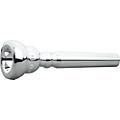 14A4 Silver
$71.50
{
"name": "14A4 Silver",
"skuUrl":"/brass-instruments/schilke-standard-series-trumpet-mouthpiece-group-i/475220000918902",
"status": "instock",
"statusText": "In stock",
"pimStatus": "R1",
"inventoryText": "In Stock & Ready To Ship",
"inventoryKey": "in_stock",
"prop65": "WARNING: This product can expose you to chemicals including Lead, which is known to the State of California to cause cancer, and to cause birth defects or other reproductive harm. For more information go to www.P65Warnings.ca.gov.",
"availableDate": "06-14-2024",
"price": 71.50,
"formatedIntegerValue": "71",
"decimalValue": "50",
"isOnSale": false,
"easyPayOptions":"0,0,300003,6 Months Promotional Financing,12/31/2024,Special 6-month 6-month special,71.5,true,/pages/Gear-Card-Rewards.gc,false,106,,/Special-Financing-Offers.gc,{primaryMonths}-month special financing,with no minimum purchase ,{secondaryMonths}-month financing,available on purchase of ${eligibleOrderValue} or more. Limited time,Get Details.,+ ${backInRewardsNum} back in rewards,No Interest if paid in full within 6 Months* On qualifying purchases thru 12/31/2024 made with your Musician's Friend Platinum credit card. Interest will be charged to your account from the purchase date if the promotional purchase is not paid in full within 6 months. Minimum monthly payments required. *Qualifying purchase amount must be on one receipt|| excluding the following: Open box gear and gift certificates. Cannot be combined with promotional coupons. No interest will be charged on the promo balance if you pay it off|| in full|| within the promo period. If you do not|| interest will be charged on the promo balance from the purchase date. The required minimum monthly payments may or may not pay off the promo balance before the end of the promo period|| depending on purchase amount|| promo length and payment allocation. Regular account terms apply to non-promo purchases and|| after promo period ends|| to the promo balance. New Account APR is 29.99%/Minimum Interest Charge is $2. Existing cardholders: See your credit card agreement terms. Subject to credit approval. ",
"msrp": 107.00,
"salePrice": 71.50,
"listPrice": 71.50,
"isPriceDrop": false,
"priceDropPrice": "",
"savingPercent": "0.00",
"promos":["freeShipping","topRated","guarantee"],"freeWarrantyAvail": false,
"sku": "site1sku475220000918902",
"displaySku": "475220 000918902",
"serialized": false,
"downloadable":"false",
"shipsFree":true,
"condition": "New",
"priceVisibility": "",
"scene7SetID": "MMGS7/475220000918902_MEDIA_SET",
"inCheckoutPromo":"false",
"invMsgVendorDropShip":"false",
"invMsgOverSized":"false",
"invMsgBackOrdered":"false",
"invMsgPreOrder":"false",
"invMsgPromiseDate":"",
"fakeInvMsgPromiseDate":"",
"invMsgAvailability":"In Stock & Ready to Ship",
"invMsgDetail":"Estimated delivery 5-8 business days",
"invMsgAddOnText":"",
"invMsgCurrent":"In Stock & Ready to Ship",
"invMsgAfterCutoff":"",
"orderCutoffTime":"Wed Apr 17 08:00:00 PDT 2024",
"twoDayShippingSourceStatus":"",
"currencySymbol": "$",
"styleImgUrl": "https://media.musiciansfriend.com/is/image/MMGS7/Standard-Series-Trumpet-Mouthpiece-Group-I-14A4-Silver/475220000918902-00-140x140.jpg",
"styleImgAlt": "Standard Series Trumpet Mouthpiece Group I 14A4 Silver",
"freeGiftWarning":false,
"freeGiftWarningTips":"",
"kitCarouselItems": [],
"pdpLoyaltyPoints":"576",
"pdpLoyaltyPointsMultiplier":"1.0",
"checksum":"40240744800",
"restrictionType":"",
"restrictionError":""
}
14A4 Silver
$71.50
{
"name": "14A4 Silver",
"skuUrl":"/brass-instruments/schilke-standard-series-trumpet-mouthpiece-group-i/475220000918902",
"status": "instock",
"statusText": "In stock",
"pimStatus": "R1",
"inventoryText": "In Stock & Ready To Ship",
"inventoryKey": "in_stock",
"prop65": "WARNING: This product can expose you to chemicals including Lead, which is known to the State of California to cause cancer, and to cause birth defects or other reproductive harm. For more information go to www.P65Warnings.ca.gov.",
"availableDate": "06-14-2024",
"price": 71.50,
"formatedIntegerValue": "71",
"decimalValue": "50",
"isOnSale": false,
"easyPayOptions":"0,0,300003,6 Months Promotional Financing,12/31/2024,Special 6-month 6-month special,71.5,true,/pages/Gear-Card-Rewards.gc,false,106,,/Special-Financing-Offers.gc,{primaryMonths}-month special financing,with no minimum purchase ,{secondaryMonths}-month financing,available on purchase of ${eligibleOrderValue} or more. Limited time,Get Details.,+ ${backInRewardsNum} back in rewards,No Interest if paid in full within 6 Months* On qualifying purchases thru 12/31/2024 made with your Musician's Friend Platinum credit card. Interest will be charged to your account from the purchase date if the promotional purchase is not paid in full within 6 months. Minimum monthly payments required. *Qualifying purchase amount must be on one receipt|| excluding the following: Open box gear and gift certificates. Cannot be combined with promotional coupons. No interest will be charged on the promo balance if you pay it off|| in full|| within the promo period. If you do not|| interest will be charged on the promo balance from the purchase date. The required minimum monthly payments may or may not pay off the promo balance before the end of the promo period|| depending on purchase amount|| promo length and payment allocation. Regular account terms apply to non-promo purchases and|| after promo period ends|| to the promo balance. New Account APR is 29.99%/Minimum Interest Charge is $2. Existing cardholders: See your credit card agreement terms. Subject to credit approval. ",
"msrp": 107.00,
"salePrice": 71.50,
"listPrice": 71.50,
"isPriceDrop": false,
"priceDropPrice": "",
"savingPercent": "0.00",
"promos":["freeShipping","topRated","guarantee"],"freeWarrantyAvail": false,
"sku": "site1sku475220000918902",
"displaySku": "475220 000918902",
"serialized": false,
"downloadable":"false",
"shipsFree":true,
"condition": "New",
"priceVisibility": "",
"scene7SetID": "MMGS7/475220000918902_MEDIA_SET",
"inCheckoutPromo":"false",
"invMsgVendorDropShip":"false",
"invMsgOverSized":"false",
"invMsgBackOrdered":"false",
"invMsgPreOrder":"false",
"invMsgPromiseDate":"",
"fakeInvMsgPromiseDate":"",
"invMsgAvailability":"In Stock & Ready to Ship",
"invMsgDetail":"Estimated delivery 5-8 business days",
"invMsgAddOnText":"",
"invMsgCurrent":"In Stock & Ready to Ship",
"invMsgAfterCutoff":"",
"orderCutoffTime":"Wed Apr 17 08:00:00 PDT 2024",
"twoDayShippingSourceStatus":"",
"currencySymbol": "$",
"styleImgUrl": "https://media.musiciansfriend.com/is/image/MMGS7/Standard-Series-Trumpet-Mouthpiece-Group-I-14A4-Silver/475220000918902-00-140x140.jpg",
"styleImgAlt": "Standard Series Trumpet Mouthpiece Group I 14A4 Silver",
"freeGiftWarning":false,
"freeGiftWarningTips":"",
"kitCarouselItems": [],
"pdpLoyaltyPoints":"576",
"pdpLoyaltyPointsMultiplier":"1.0",
"checksum":"40240744800",
"restrictionType":"",
"restrictionError":""
}
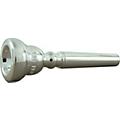 14B Silver
$71.50
{
"name": "14B Silver",
"skuUrl":"/brass-instruments/schilke-standard-series-trumpet-mouthpiece-group-i/475220000920902",
"status": "instock",
"statusText": "In stock",
"pimStatus": "R1",
"inventoryText": "In Stock & Ready To Ship",
"inventoryKey": "in_stock",
"prop65": "WARNING: This product can expose you to chemicals including Lead, which is known to the State of California to cause cancer, and to cause birth defects or other reproductive harm. For more information go to www.P65Warnings.ca.gov.",
"availableDate": "04-28-2024",
"price": 71.50,
"formatedIntegerValue": "71",
"decimalValue": "50",
"isOnSale": false,
"easyPayOptions":"0,0,300003,6 Months Promotional Financing,12/31/2024,Special 6-month 6-month special,71.5,true,/pages/Gear-Card-Rewards.gc,false,106,,/Special-Financing-Offers.gc,{primaryMonths}-month special financing,with no minimum purchase ,{secondaryMonths}-month financing,available on purchase of ${eligibleOrderValue} or more. Limited time,Get Details.,+ ${backInRewardsNum} back in rewards,No Interest if paid in full within 6 Months* On qualifying purchases thru 12/31/2024 made with your Musician's Friend Platinum credit card. Interest will be charged to your account from the purchase date if the promotional purchase is not paid in full within 6 months. Minimum monthly payments required. *Qualifying purchase amount must be on one receipt|| excluding the following: Open box gear and gift certificates. Cannot be combined with promotional coupons. No interest will be charged on the promo balance if you pay it off|| in full|| within the promo period. If you do not|| interest will be charged on the promo balance from the purchase date. The required minimum monthly payments may or may not pay off the promo balance before the end of the promo period|| depending on purchase amount|| promo length and payment allocation. Regular account terms apply to non-promo purchases and|| after promo period ends|| to the promo balance. New Account APR is 29.99%/Minimum Interest Charge is $2. Existing cardholders: See your credit card agreement terms. Subject to credit approval. ",
"msrp": 107.00,
"salePrice": 71.50,
"listPrice": 71.50,
"isPriceDrop": false,
"priceDropPrice": "",
"savingPercent": "0.00",
"promos":["freeShipping","topRated","guarantee"],"freeWarrantyAvail": false,
"sku": "site1sku475220000920902",
"displaySku": "475220 000920902",
"serialized": false,
"downloadable":"false",
"shipsFree":true,
"condition": "New",
"priceVisibility": "",
"scene7SetID": "MMGS7/475220000920902_MEDIA_SET",
"inCheckoutPromo":"false",
"invMsgVendorDropShip":"false",
"invMsgOverSized":"false",
"invMsgBackOrdered":"false",
"invMsgPreOrder":"false",
"invMsgPromiseDate":"",
"fakeInvMsgPromiseDate":"",
"invMsgAvailability":"In Stock & Ready to Ship",
"invMsgDetail":"Estimated delivery 5-8 business days",
"invMsgAddOnText":"",
"invMsgCurrent":"In Stock & Ready to Ship",
"invMsgAfterCutoff":"",
"orderCutoffTime":"Wed Apr 17 08:00:00 PDT 2024",
"twoDayShippingSourceStatus":"",
"currencySymbol": "$",
"styleImgUrl": "https://media.musiciansfriend.com/is/image/MMGS7/Standard-Series-Trumpet-Mouthpiece-Group-I-14B-Silver/475220000920902-00-140x140.jpg",
"styleImgAlt": "Standard Series Trumpet Mouthpiece Group I 14B Silver",
"freeGiftWarning":false,
"freeGiftWarningTips":"",
"kitCarouselItems": [],
"pdpLoyaltyPoints":"576",
"pdpLoyaltyPointsMultiplier":"1.0",
"checksum":"40240744800",
"restrictionType":"",
"restrictionError":""
}
14B Silver
$71.50
{
"name": "14B Silver",
"skuUrl":"/brass-instruments/schilke-standard-series-trumpet-mouthpiece-group-i/475220000920902",
"status": "instock",
"statusText": "In stock",
"pimStatus": "R1",
"inventoryText": "In Stock & Ready To Ship",
"inventoryKey": "in_stock",
"prop65": "WARNING: This product can expose you to chemicals including Lead, which is known to the State of California to cause cancer, and to cause birth defects or other reproductive harm. For more information go to www.P65Warnings.ca.gov.",
"availableDate": "04-28-2024",
"price": 71.50,
"formatedIntegerValue": "71",
"decimalValue": "50",
"isOnSale": false,
"easyPayOptions":"0,0,300003,6 Months Promotional Financing,12/31/2024,Special 6-month 6-month special,71.5,true,/pages/Gear-Card-Rewards.gc,false,106,,/Special-Financing-Offers.gc,{primaryMonths}-month special financing,with no minimum purchase ,{secondaryMonths}-month financing,available on purchase of ${eligibleOrderValue} or more. Limited time,Get Details.,+ ${backInRewardsNum} back in rewards,No Interest if paid in full within 6 Months* On qualifying purchases thru 12/31/2024 made with your Musician's Friend Platinum credit card. Interest will be charged to your account from the purchase date if the promotional purchase is not paid in full within 6 months. Minimum monthly payments required. *Qualifying purchase amount must be on one receipt|| excluding the following: Open box gear and gift certificates. Cannot be combined with promotional coupons. No interest will be charged on the promo balance if you pay it off|| in full|| within the promo period. If you do not|| interest will be charged on the promo balance from the purchase date. The required minimum monthly payments may or may not pay off the promo balance before the end of the promo period|| depending on purchase amount|| promo length and payment allocation. Regular account terms apply to non-promo purchases and|| after promo period ends|| to the promo balance. New Account APR is 29.99%/Minimum Interest Charge is $2. Existing cardholders: See your credit card agreement terms. Subject to credit approval. ",
"msrp": 107.00,
"salePrice": 71.50,
"listPrice": 71.50,
"isPriceDrop": false,
"priceDropPrice": "",
"savingPercent": "0.00",
"promos":["freeShipping","topRated","guarantee"],"freeWarrantyAvail": false,
"sku": "site1sku475220000920902",
"displaySku": "475220 000920902",
"serialized": false,
"downloadable":"false",
"shipsFree":true,
"condition": "New",
"priceVisibility": "",
"scene7SetID": "MMGS7/475220000920902_MEDIA_SET",
"inCheckoutPromo":"false",
"invMsgVendorDropShip":"false",
"invMsgOverSized":"false",
"invMsgBackOrdered":"false",
"invMsgPreOrder":"false",
"invMsgPromiseDate":"",
"fakeInvMsgPromiseDate":"",
"invMsgAvailability":"In Stock & Ready to Ship",
"invMsgDetail":"Estimated delivery 5-8 business days",
"invMsgAddOnText":"",
"invMsgCurrent":"In Stock & Ready to Ship",
"invMsgAfterCutoff":"",
"orderCutoffTime":"Wed Apr 17 08:00:00 PDT 2024",
"twoDayShippingSourceStatus":"",
"currencySymbol": "$",
"styleImgUrl": "https://media.musiciansfriend.com/is/image/MMGS7/Standard-Series-Trumpet-Mouthpiece-Group-I-14B-Silver/475220000920902-00-140x140.jpg",
"styleImgAlt": "Standard Series Trumpet Mouthpiece Group I 14B Silver",
"freeGiftWarning":false,
"freeGiftWarningTips":"",
"kitCarouselItems": [],
"pdpLoyaltyPoints":"576",
"pdpLoyaltyPointsMultiplier":"1.0",
"checksum":"40240744800",
"restrictionType":"",
"restrictionError":""
}
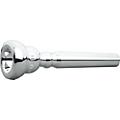 14C2 Silver
$71.50
{
"name": "14C2 Silver",
"skuUrl":"/brass-instruments/schilke-standard-series-trumpet-mouthpiece-group-i/475220000921902",
"status": "instock",
"statusText": "In stock",
"pimStatus": "R1",
"inventoryText": "In Stock & Ready To Ship",
"inventoryKey": "in_stock",
"prop65": "WARNING: This product can expose you to chemicals including Lead, which is known to the State of California to cause cancer, and to cause birth defects or other reproductive harm. For more information go to www.P65Warnings.ca.gov.",
"availableDate": "06-15-2024",
"price": 71.50,
"formatedIntegerValue": "71",
"decimalValue": "50",
"isOnSale": false,
"easyPayOptions":"0,0,300003,6 Months Promotional Financing,12/31/2024,Special 6-month 6-month special,71.5,true,/pages/Gear-Card-Rewards.gc,false,106,,/Special-Financing-Offers.gc,{primaryMonths}-month special financing,with no minimum purchase ,{secondaryMonths}-month financing,available on purchase of ${eligibleOrderValue} or more. Limited time,Get Details.,+ ${backInRewardsNum} back in rewards,No Interest if paid in full within 6 Months* On qualifying purchases thru 12/31/2024 made with your Musician's Friend Platinum credit card. Interest will be charged to your account from the purchase date if the promotional purchase is not paid in full within 6 months. Minimum monthly payments required. *Qualifying purchase amount must be on one receipt|| excluding the following: Open box gear and gift certificates. Cannot be combined with promotional coupons. No interest will be charged on the promo balance if you pay it off|| in full|| within the promo period. If you do not|| interest will be charged on the promo balance from the purchase date. The required minimum monthly payments may or may not pay off the promo balance before the end of the promo period|| depending on purchase amount|| promo length and payment allocation. Regular account terms apply to non-promo purchases and|| after promo period ends|| to the promo balance. New Account APR is 29.99%/Minimum Interest Charge is $2. Existing cardholders: See your credit card agreement terms. Subject to credit approval. ",
"msrp": 107.00,
"salePrice": 71.50,
"listPrice": 71.50,
"isPriceDrop": false,
"priceDropPrice": "",
"savingPercent": "0.00",
"promos":["freeShipping","topRated","guarantee"],"freeWarrantyAvail": false,
"sku": "site1sku475220000921902",
"displaySku": "475220 000921902",
"serialized": false,
"downloadable":"false",
"shipsFree":true,
"condition": "New",
"priceVisibility": "",
"scene7SetID": "MMGS7/475220000921902_MEDIA_SET",
"inCheckoutPromo":"false",
"invMsgVendorDropShip":"false",
"invMsgOverSized":"false",
"invMsgBackOrdered":"false",
"invMsgPreOrder":"false",
"invMsgPromiseDate":"",
"fakeInvMsgPromiseDate":"",
"invMsgAvailability":"In Stock & Ready to Ship",
"invMsgDetail":"Estimated delivery 5-8 business days",
"invMsgAddOnText":"",
"invMsgCurrent":"In Stock & Ready to Ship",
"invMsgAfterCutoff":"",
"orderCutoffTime":"Wed Apr 17 08:00:00 PDT 2024",
"twoDayShippingSourceStatus":"",
"currencySymbol": "$",
"styleImgUrl": "https://media.musiciansfriend.com/is/image/MMGS7/Standard-Series-Trumpet-Mouthpiece-Group-I-14C2-Silver/475220000921902-00-140x140.jpg",
"styleImgAlt": "Standard Series Trumpet Mouthpiece Group I 14C2 Silver",
"freeGiftWarning":false,
"freeGiftWarningTips":"",
"kitCarouselItems": [],
"pdpLoyaltyPoints":"576",
"pdpLoyaltyPointsMultiplier":"1.0",
"checksum":"40240744800",
"restrictionType":"",
"restrictionError":""
}
14C2 Silver
$71.50
{
"name": "14C2 Silver",
"skuUrl":"/brass-instruments/schilke-standard-series-trumpet-mouthpiece-group-i/475220000921902",
"status": "instock",
"statusText": "In stock",
"pimStatus": "R1",
"inventoryText": "In Stock & Ready To Ship",
"inventoryKey": "in_stock",
"prop65": "WARNING: This product can expose you to chemicals including Lead, which is known to the State of California to cause cancer, and to cause birth defects or other reproductive harm. For more information go to www.P65Warnings.ca.gov.",
"availableDate": "06-15-2024",
"price": 71.50,
"formatedIntegerValue": "71",
"decimalValue": "50",
"isOnSale": false,
"easyPayOptions":"0,0,300003,6 Months Promotional Financing,12/31/2024,Special 6-month 6-month special,71.5,true,/pages/Gear-Card-Rewards.gc,false,106,,/Special-Financing-Offers.gc,{primaryMonths}-month special financing,with no minimum purchase ,{secondaryMonths}-month financing,available on purchase of ${eligibleOrderValue} or more. Limited time,Get Details.,+ ${backInRewardsNum} back in rewards,No Interest if paid in full within 6 Months* On qualifying purchases thru 12/31/2024 made with your Musician's Friend Platinum credit card. Interest will be charged to your account from the purchase date if the promotional purchase is not paid in full within 6 months. Minimum monthly payments required. *Qualifying purchase amount must be on one receipt|| excluding the following: Open box gear and gift certificates. Cannot be combined with promotional coupons. No interest will be charged on the promo balance if you pay it off|| in full|| within the promo period. If you do not|| interest will be charged on the promo balance from the purchase date. The required minimum monthly payments may or may not pay off the promo balance before the end of the promo period|| depending on purchase amount|| promo length and payment allocation. Regular account terms apply to non-promo purchases and|| after promo period ends|| to the promo balance. New Account APR is 29.99%/Minimum Interest Charge is $2. Existing cardholders: See your credit card agreement terms. Subject to credit approval. ",
"msrp": 107.00,
"salePrice": 71.50,
"listPrice": 71.50,
"isPriceDrop": false,
"priceDropPrice": "",
"savingPercent": "0.00",
"promos":["freeShipping","topRated","guarantee"],"freeWarrantyAvail": false,
"sku": "site1sku475220000921902",
"displaySku": "475220 000921902",
"serialized": false,
"downloadable":"false",
"shipsFree":true,
"condition": "New",
"priceVisibility": "",
"scene7SetID": "MMGS7/475220000921902_MEDIA_SET",
"inCheckoutPromo":"false",
"invMsgVendorDropShip":"false",
"invMsgOverSized":"false",
"invMsgBackOrdered":"false",
"invMsgPreOrder":"false",
"invMsgPromiseDate":"",
"fakeInvMsgPromiseDate":"",
"invMsgAvailability":"In Stock & Ready to Ship",
"invMsgDetail":"Estimated delivery 5-8 business days",
"invMsgAddOnText":"",
"invMsgCurrent":"In Stock & Ready to Ship",
"invMsgAfterCutoff":"",
"orderCutoffTime":"Wed Apr 17 08:00:00 PDT 2024",
"twoDayShippingSourceStatus":"",
"currencySymbol": "$",
"styleImgUrl": "https://media.musiciansfriend.com/is/image/MMGS7/Standard-Series-Trumpet-Mouthpiece-Group-I-14C2-Silver/475220000921902-00-140x140.jpg",
"styleImgAlt": "Standard Series Trumpet Mouthpiece Group I 14C2 Silver",
"freeGiftWarning":false,
"freeGiftWarningTips":"",
"kitCarouselItems": [],
"pdpLoyaltyPoints":"576",
"pdpLoyaltyPointsMultiplier":"1.0",
"checksum":"40240744800",
"restrictionType":"",
"restrictionError":""
}
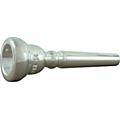 14 Silver
$71.50
{
"name": "14 Silver",
"skuUrl":"/brass-instruments/schilke-standard-series-trumpet-mouthpiece-group-i/475220000922902",
"status": "instock",
"statusText": "In stock",
"pimStatus": "R1",
"inventoryText": "In Stock & Ready To Ship",
"inventoryKey": "in_stock",
"prop65": "WARNING: This product can expose you to chemicals including Lead, which is known to the State of California to cause cancer, and to cause birth defects or other reproductive harm. For more information go to www.P65Warnings.ca.gov.",
"availableDate": "04-28-2024",
"price": 71.50,
"formatedIntegerValue": "71",
"decimalValue": "50",
"isOnSale": false,
"easyPayOptions":"0,0,300003,6 Months Promotional Financing,12/31/2024,Special 6-month 6-month special,71.5,true,/pages/Gear-Card-Rewards.gc,false,106,,/Special-Financing-Offers.gc,{primaryMonths}-month special financing,with no minimum purchase ,{secondaryMonths}-month financing,available on purchase of ${eligibleOrderValue} or more. Limited time,Get Details.,+ ${backInRewardsNum} back in rewards,No Interest if paid in full within 6 Months* On qualifying purchases thru 12/31/2024 made with your Musician's Friend Platinum credit card. Interest will be charged to your account from the purchase date if the promotional purchase is not paid in full within 6 months. Minimum monthly payments required. *Qualifying purchase amount must be on one receipt|| excluding the following: Open box gear and gift certificates. Cannot be combined with promotional coupons. No interest will be charged on the promo balance if you pay it off|| in full|| within the promo period. If you do not|| interest will be charged on the promo balance from the purchase date. The required minimum monthly payments may or may not pay off the promo balance before the end of the promo period|| depending on purchase amount|| promo length and payment allocation. Regular account terms apply to non-promo purchases and|| after promo period ends|| to the promo balance. New Account APR is 29.99%/Minimum Interest Charge is $2. Existing cardholders: See your credit card agreement terms. Subject to credit approval. ",
"msrp": 107.00,
"salePrice": 71.50,
"listPrice": 71.50,
"isPriceDrop": false,
"priceDropPrice": "",
"savingPercent": "0.00",
"promos":["freeShipping","topRated","guarantee"],"freeWarrantyAvail": false,
"sku": "site1sku475220000922902",
"displaySku": "475220 000922902",
"serialized": false,
"downloadable":"false",
"shipsFree":true,
"condition": "New",
"priceVisibility": "",
"scene7SetID": "MMGS7/475220000922902_MEDIA_SET",
"inCheckoutPromo":"false",
"invMsgVendorDropShip":"false",
"invMsgOverSized":"false",
"invMsgBackOrdered":"false",
"invMsgPreOrder":"false",
"invMsgPromiseDate":"",
"fakeInvMsgPromiseDate":"",
"invMsgAvailability":"In Stock & Ready to Ship",
"invMsgDetail":"Estimated delivery 5-8 business days",
"invMsgAddOnText":"",
"invMsgCurrent":"In Stock & Ready to Ship",
"invMsgAfterCutoff":"",
"orderCutoffTime":"Wed Apr 17 08:00:00 PDT 2024",
"twoDayShippingSourceStatus":"",
"currencySymbol": "$",
"styleImgUrl": "https://media.musiciansfriend.com/is/image/MMGS7/Standard-Series-Trumpet-Mouthpiece-Group-I-14-Silver/475220000922902-00-140x140.jpg",
"styleImgAlt": "Standard Series Trumpet Mouthpiece Group I 14 Silver",
"freeGiftWarning":false,
"freeGiftWarningTips":"",
"kitCarouselItems": [],
"pdpLoyaltyPoints":"576",
"pdpLoyaltyPointsMultiplier":"1.0",
"checksum":"40240744800",
"restrictionType":"",
"restrictionError":""
}
14 Silver
$71.50
{
"name": "14 Silver",
"skuUrl":"/brass-instruments/schilke-standard-series-trumpet-mouthpiece-group-i/475220000922902",
"status": "instock",
"statusText": "In stock",
"pimStatus": "R1",
"inventoryText": "In Stock & Ready To Ship",
"inventoryKey": "in_stock",
"prop65": "WARNING: This product can expose you to chemicals including Lead, which is known to the State of California to cause cancer, and to cause birth defects or other reproductive harm. For more information go to www.P65Warnings.ca.gov.",
"availableDate": "04-28-2024",
"price": 71.50,
"formatedIntegerValue": "71",
"decimalValue": "50",
"isOnSale": false,
"easyPayOptions":"0,0,300003,6 Months Promotional Financing,12/31/2024,Special 6-month 6-month special,71.5,true,/pages/Gear-Card-Rewards.gc,false,106,,/Special-Financing-Offers.gc,{primaryMonths}-month special financing,with no minimum purchase ,{secondaryMonths}-month financing,available on purchase of ${eligibleOrderValue} or more. Limited time,Get Details.,+ ${backInRewardsNum} back in rewards,No Interest if paid in full within 6 Months* On qualifying purchases thru 12/31/2024 made with your Musician's Friend Platinum credit card. Interest will be charged to your account from the purchase date if the promotional purchase is not paid in full within 6 months. Minimum monthly payments required. *Qualifying purchase amount must be on one receipt|| excluding the following: Open box gear and gift certificates. Cannot be combined with promotional coupons. No interest will be charged on the promo balance if you pay it off|| in full|| within the promo period. If you do not|| interest will be charged on the promo balance from the purchase date. The required minimum monthly payments may or may not pay off the promo balance before the end of the promo period|| depending on purchase amount|| promo length and payment allocation. Regular account terms apply to non-promo purchases and|| after promo period ends|| to the promo balance. New Account APR is 29.99%/Minimum Interest Charge is $2. Existing cardholders: See your credit card agreement terms. Subject to credit approval. ",
"msrp": 107.00,
"salePrice": 71.50,
"listPrice": 71.50,
"isPriceDrop": false,
"priceDropPrice": "",
"savingPercent": "0.00",
"promos":["freeShipping","topRated","guarantee"],"freeWarrantyAvail": false,
"sku": "site1sku475220000922902",
"displaySku": "475220 000922902",
"serialized": false,
"downloadable":"false",
"shipsFree":true,
"condition": "New",
"priceVisibility": "",
"scene7SetID": "MMGS7/475220000922902_MEDIA_SET",
"inCheckoutPromo":"false",
"invMsgVendorDropShip":"false",
"invMsgOverSized":"false",
"invMsgBackOrdered":"false",
"invMsgPreOrder":"false",
"invMsgPromiseDate":"",
"fakeInvMsgPromiseDate":"",
"invMsgAvailability":"In Stock & Ready to Ship",
"invMsgDetail":"Estimated delivery 5-8 business days",
"invMsgAddOnText":"",
"invMsgCurrent":"In Stock & Ready to Ship",
"invMsgAfterCutoff":"",
"orderCutoffTime":"Wed Apr 17 08:00:00 PDT 2024",
"twoDayShippingSourceStatus":"",
"currencySymbol": "$",
"styleImgUrl": "https://media.musiciansfriend.com/is/image/MMGS7/Standard-Series-Trumpet-Mouthpiece-Group-I-14-Silver/475220000922902-00-140x140.jpg",
"styleImgAlt": "Standard Series Trumpet Mouthpiece Group I 14 Silver",
"freeGiftWarning":false,
"freeGiftWarningTips":"",
"kitCarouselItems": [],
"pdpLoyaltyPoints":"576",
"pdpLoyaltyPointsMultiplier":"1.0",
"checksum":"40240744800",
"restrictionType":"",
"restrictionError":""
}
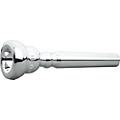 5A4 Silver
$71.50
{
"name": "5A4 Silver",
"skuUrl":"/brass-instruments/schilke-standard-series-trumpet-mouthpiece-group-i/475220000939902",
"status": "instock",
"statusText": "In stock",
"pimStatus": "R1",
"inventoryText": "In Stock & Ready To Ship",
"inventoryKey": "in_stock",
"prop65": "WARNING: This product can expose you to chemicals including Lead, which is known to the State of California to cause cancer, and to cause birth defects or other reproductive harm. For more information go to www.P65Warnings.ca.gov.",
"availableDate": "06-16-2024",
"price": 71.50,
"formatedIntegerValue": "71",
"decimalValue": "50",
"isOnSale": false,
"easyPayOptions":"0,0,300003,6 Months Promotional Financing,12/31/2024,Special 6-month 6-month special,71.5,true,/pages/Gear-Card-Rewards.gc,false,106,,/Special-Financing-Offers.gc,{primaryMonths}-month special financing,with no minimum purchase ,{secondaryMonths}-month financing,available on purchase of ${eligibleOrderValue} or more. Limited time,Get Details.,+ ${backInRewardsNum} back in rewards,No Interest if paid in full within 6 Months* On qualifying purchases thru 12/31/2024 made with your Musician's Friend Platinum credit card. Interest will be charged to your account from the purchase date if the promotional purchase is not paid in full within 6 months. Minimum monthly payments required. *Qualifying purchase amount must be on one receipt|| excluding the following: Open box gear and gift certificates. Cannot be combined with promotional coupons. No interest will be charged on the promo balance if you pay it off|| in full|| within the promo period. If you do not|| interest will be charged on the promo balance from the purchase date. The required minimum monthly payments may or may not pay off the promo balance before the end of the promo period|| depending on purchase amount|| promo length and payment allocation. Regular account terms apply to non-promo purchases and|| after promo period ends|| to the promo balance. New Account APR is 29.99%/Minimum Interest Charge is $2. Existing cardholders: See your credit card agreement terms. Subject to credit approval. ",
"msrp": 107.00,
"salePrice": 71.50,
"listPrice": 71.50,
"isPriceDrop": false,
"priceDropPrice": "",
"savingPercent": "0.00",
"promos":["freeShipping","topRated","guarantee"],"freeWarrantyAvail": false,
"sku": "site1sku475220000939902",
"displaySku": "475220 000939902",
"serialized": false,
"downloadable":"false",
"shipsFree":true,
"condition": "New",
"priceVisibility": "",
"scene7SetID": "MMGS7/475220000939902_MEDIA_SET",
"inCheckoutPromo":"false",
"invMsgVendorDropShip":"false",
"invMsgOverSized":"false",
"invMsgBackOrdered":"false",
"invMsgPreOrder":"false",
"invMsgPromiseDate":"",
"fakeInvMsgPromiseDate":"",
"invMsgAvailability":"In Stock & Ready to Ship",
"invMsgDetail":"Estimated delivery 5-8 business days",
"invMsgAddOnText":"",
"invMsgCurrent":"In Stock & Ready to Ship",
"invMsgAfterCutoff":"",
"orderCutoffTime":"Wed Apr 17 08:00:00 PDT 2024",
"twoDayShippingSourceStatus":"",
"currencySymbol": "$",
"styleImgUrl": "https://media.musiciansfriend.com/is/image/MMGS7/Standard-Series-Trumpet-Mouthpiece-Group-I-5A4-Silver/475220000939902-00-140x140.jpg",
"styleImgAlt": "Standard Series Trumpet Mouthpiece Group I 5A4 Silver",
"freeGiftWarning":false,
"freeGiftWarningTips":"",
"kitCarouselItems": [],
"pdpLoyaltyPoints":"576",
"pdpLoyaltyPointsMultiplier":"1.0",
"checksum":"40240744800",
"restrictionType":"",
"restrictionError":""
}
5A4 Silver
$71.50
{
"name": "5A4 Silver",
"skuUrl":"/brass-instruments/schilke-standard-series-trumpet-mouthpiece-group-i/475220000939902",
"status": "instock",
"statusText": "In stock",
"pimStatus": "R1",
"inventoryText": "In Stock & Ready To Ship",
"inventoryKey": "in_stock",
"prop65": "WARNING: This product can expose you to chemicals including Lead, which is known to the State of California to cause cancer, and to cause birth defects or other reproductive harm. For more information go to www.P65Warnings.ca.gov.",
"availableDate": "06-16-2024",
"price": 71.50,
"formatedIntegerValue": "71",
"decimalValue": "50",
"isOnSale": false,
"easyPayOptions":"0,0,300003,6 Months Promotional Financing,12/31/2024,Special 6-month 6-month special,71.5,true,/pages/Gear-Card-Rewards.gc,false,106,,/Special-Financing-Offers.gc,{primaryMonths}-month special financing,with no minimum purchase ,{secondaryMonths}-month financing,available on purchase of ${eligibleOrderValue} or more. Limited time,Get Details.,+ ${backInRewardsNum} back in rewards,No Interest if paid in full within 6 Months* On qualifying purchases thru 12/31/2024 made with your Musician's Friend Platinum credit card. Interest will be charged to your account from the purchase date if the promotional purchase is not paid in full within 6 months. Minimum monthly payments required. *Qualifying purchase amount must be on one receipt|| excluding the following: Open box gear and gift certificates. Cannot be combined with promotional coupons. No interest will be charged on the promo balance if you pay it off|| in full|| within the promo period. If you do not|| interest will be charged on the promo balance from the purchase date. The required minimum monthly payments may or may not pay off the promo balance before the end of the promo period|| depending on purchase amount|| promo length and payment allocation. Regular account terms apply to non-promo purchases and|| after promo period ends|| to the promo balance. New Account APR is 29.99%/Minimum Interest Charge is $2. Existing cardholders: See your credit card agreement terms. Subject to credit approval. ",
"msrp": 107.00,
"salePrice": 71.50,
"listPrice": 71.50,
"isPriceDrop": false,
"priceDropPrice": "",
"savingPercent": "0.00",
"promos":["freeShipping","topRated","guarantee"],"freeWarrantyAvail": false,
"sku": "site1sku475220000939902",
"displaySku": "475220 000939902",
"serialized": false,
"downloadable":"false",
"shipsFree":true,
"condition": "New",
"priceVisibility": "",
"scene7SetID": "MMGS7/475220000939902_MEDIA_SET",
"inCheckoutPromo":"false",
"invMsgVendorDropShip":"false",
"invMsgOverSized":"false",
"invMsgBackOrdered":"false",
"invMsgPreOrder":"false",
"invMsgPromiseDate":"",
"fakeInvMsgPromiseDate":"",
"invMsgAvailability":"In Stock & Ready to Ship",
"invMsgDetail":"Estimated delivery 5-8 business days",
"invMsgAddOnText":"",
"invMsgCurrent":"In Stock & Ready to Ship",
"invMsgAfterCutoff":"",
"orderCutoffTime":"Wed Apr 17 08:00:00 PDT 2024",
"twoDayShippingSourceStatus":"",
"currencySymbol": "$",
"styleImgUrl": "https://media.musiciansfriend.com/is/image/MMGS7/Standard-Series-Trumpet-Mouthpiece-Group-I-5A4-Silver/475220000939902-00-140x140.jpg",
"styleImgAlt": "Standard Series Trumpet Mouthpiece Group I 5A4 Silver",
"freeGiftWarning":false,
"freeGiftWarningTips":"",
"kitCarouselItems": [],
"pdpLoyaltyPoints":"576",
"pdpLoyaltyPointsMultiplier":"1.0",
"checksum":"40240744800",
"restrictionType":"",
"restrictionError":""
}
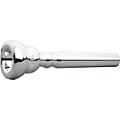 13 Silver
$71.50
{
"name": "13 Silver",
"skuUrl":"/brass-instruments/schilke-standard-series-trumpet-mouthpiece-group-i/475220000941902",
"status": "instock",
"statusText": "In stock",
"pimStatus": "R1",
"inventoryText": "In Stock & Ready To Ship",
"inventoryKey": "in_stock",
"prop65": "WARNING: This product can expose you to chemicals including Lead, which is known to the State of California to cause cancer, and to cause birth defects or other reproductive harm. For more information go to www.P65Warnings.ca.gov.",
"availableDate": "01-25-2024",
"price": 71.50,
"formatedIntegerValue": "71",
"decimalValue": "50",
"isOnSale": false,
"easyPayOptions":"0,0,300003,6 Months Promotional Financing,12/31/2024,Special 6-month 6-month special,71.5,true,/pages/Gear-Card-Rewards.gc,false,106,,/Special-Financing-Offers.gc,{primaryMonths}-month special financing,with no minimum purchase ,{secondaryMonths}-month financing,available on purchase of ${eligibleOrderValue} or more. Limited time,Get Details.,+ ${backInRewardsNum} back in rewards,No Interest if paid in full within 6 Months* On qualifying purchases thru 12/31/2024 made with your Musician's Friend Platinum credit card. Interest will be charged to your account from the purchase date if the promotional purchase is not paid in full within 6 months. Minimum monthly payments required. *Qualifying purchase amount must be on one receipt|| excluding the following: Open box gear and gift certificates. Cannot be combined with promotional coupons. No interest will be charged on the promo balance if you pay it off|| in full|| within the promo period. If you do not|| interest will be charged on the promo balance from the purchase date. The required minimum monthly payments may or may not pay off the promo balance before the end of the promo period|| depending on purchase amount|| promo length and payment allocation. Regular account terms apply to non-promo purchases and|| after promo period ends|| to the promo balance. New Account APR is 29.99%/Minimum Interest Charge is $2. Existing cardholders: See your credit card agreement terms. Subject to credit approval. ",
"msrp": 107.00,
"salePrice": 71.50,
"listPrice": 71.50,
"isPriceDrop": false,
"priceDropPrice": "",
"savingPercent": "0.00",
"promos":["freeShipping","topRated","guarantee"],"freeWarrantyAvail": false,
"sku": "site1sku475220000941902",
"displaySku": "475220 000941902",
"serialized": false,
"downloadable":"false",
"shipsFree":true,
"condition": "New",
"priceVisibility": "",
"scene7SetID": "MMGS7/475220000941902_MEDIA_SET",
"inCheckoutPromo":"false",
"invMsgVendorDropShip":"false",
"invMsgOverSized":"false",
"invMsgBackOrdered":"false",
"invMsgPreOrder":"false",
"invMsgPromiseDate":"",
"fakeInvMsgPromiseDate":"",
"invMsgAvailability":"In Stock & Ready to Ship",
"invMsgDetail":"Estimated delivery 5-8 business days",
"invMsgAddOnText":"",
"invMsgCurrent":"In Stock & Ready to Ship",
"invMsgAfterCutoff":"",
"orderCutoffTime":"Wed Apr 17 08:00:00 PDT 2024",
"twoDayShippingSourceStatus":"",
"currencySymbol": "$",
"styleImgUrl": "https://media.musiciansfriend.com/is/image/MMGS7/Standard-Series-Trumpet-Mouthpiece-Group-I-13-Silver/475220000941902-00-140x140.jpg",
"styleImgAlt": "Standard Series Trumpet Mouthpiece Group I 13 Silver",
"freeGiftWarning":false,
"freeGiftWarningTips":"",
"kitCarouselItems": [],
"pdpLoyaltyPoints":"576",
"pdpLoyaltyPointsMultiplier":"1.0",
"checksum":"40240744800",
"restrictionType":"",
"restrictionError":""
}
13 Silver
$71.50
{
"name": "13 Silver",
"skuUrl":"/brass-instruments/schilke-standard-series-trumpet-mouthpiece-group-i/475220000941902",
"status": "instock",
"statusText": "In stock",
"pimStatus": "R1",
"inventoryText": "In Stock & Ready To Ship",
"inventoryKey": "in_stock",
"prop65": "WARNING: This product can expose you to chemicals including Lead, which is known to the State of California to cause cancer, and to cause birth defects or other reproductive harm. For more information go to www.P65Warnings.ca.gov.",
"availableDate": "01-25-2024",
"price": 71.50,
"formatedIntegerValue": "71",
"decimalValue": "50",
"isOnSale": false,
"easyPayOptions":"0,0,300003,6 Months Promotional Financing,12/31/2024,Special 6-month 6-month special,71.5,true,/pages/Gear-Card-Rewards.gc,false,106,,/Special-Financing-Offers.gc,{primaryMonths}-month special financing,with no minimum purchase ,{secondaryMonths}-month financing,available on purchase of ${eligibleOrderValue} or more. Limited time,Get Details.,+ ${backInRewardsNum} back in rewards,No Interest if paid in full within 6 Months* On qualifying purchases thru 12/31/2024 made with your Musician's Friend Platinum credit card. Interest will be charged to your account from the purchase date if the promotional purchase is not paid in full within 6 months. Minimum monthly payments required. *Qualifying purchase amount must be on one receipt|| excluding the following: Open box gear and gift certificates. Cannot be combined with promotional coupons. No interest will be charged on the promo balance if you pay it off|| in full|| within the promo period. If you do not|| interest will be charged on the promo balance from the purchase date. The required minimum monthly payments may or may not pay off the promo balance before the end of the promo period|| depending on purchase amount|| promo length and payment allocation. Regular account terms apply to non-promo purchases and|| after promo period ends|| to the promo balance. New Account APR is 29.99%/Minimum Interest Charge is $2. Existing cardholders: See your credit card agreement terms. Subject to credit approval. ",
"msrp": 107.00,
"salePrice": 71.50,
"listPrice": 71.50,
"isPriceDrop": false,
"priceDropPrice": "",
"savingPercent": "0.00",
"promos":["freeShipping","topRated","guarantee"],"freeWarrantyAvail": false,
"sku": "site1sku475220000941902",
"displaySku": "475220 000941902",
"serialized": false,
"downloadable":"false",
"shipsFree":true,
"condition": "New",
"priceVisibility": "",
"scene7SetID": "MMGS7/475220000941902_MEDIA_SET",
"inCheckoutPromo":"false",
"invMsgVendorDropShip":"false",
"invMsgOverSized":"false",
"invMsgBackOrdered":"false",
"invMsgPreOrder":"false",
"invMsgPromiseDate":"",
"fakeInvMsgPromiseDate":"",
"invMsgAvailability":"In Stock & Ready to Ship",
"invMsgDetail":"Estimated delivery 5-8 business days",
"invMsgAddOnText":"",
"invMsgCurrent":"In Stock & Ready to Ship",
"invMsgAfterCutoff":"",
"orderCutoffTime":"Wed Apr 17 08:00:00 PDT 2024",
"twoDayShippingSourceStatus":"",
"currencySymbol": "$",
"styleImgUrl": "https://media.musiciansfriend.com/is/image/MMGS7/Standard-Series-Trumpet-Mouthpiece-Group-I-13-Silver/475220000941902-00-140x140.jpg",
"styleImgAlt": "Standard Series Trumpet Mouthpiece Group I 13 Silver",
"freeGiftWarning":false,
"freeGiftWarningTips":"",
"kitCarouselItems": [],
"pdpLoyaltyPoints":"576",
"pdpLoyaltyPointsMultiplier":"1.0",
"checksum":"40240744800",
"restrictionType":"",
"restrictionError":""
}
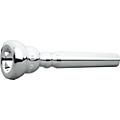 10A4a Silver
$71.50
{
"name": "10A4a Silver",
"skuUrl":"/brass-instruments/schilke-standard-series-trumpet-mouthpiece-group-i/475220000978902",
"status": "instock",
"statusText": "In stock",
"pimStatus": "R1",
"inventoryText": "In Stock & Ready To Ship",
"inventoryKey": "in_stock",
"prop65": "WARNING: This product can expose you to chemicals including Lead, which is known to the State of California to cause cancer, and to cause birth defects or other reproductive harm. For more information go to www.P65Warnings.ca.gov.",
"availableDate": "06-12-2024",
"price": 71.50,
"formatedIntegerValue": "71",
"decimalValue": "50",
"isOnSale": false,
"easyPayOptions":"0,0,300003,6 Months Promotional Financing,12/31/2024,Special 6-month 6-month special,71.5,true,/pages/Gear-Card-Rewards.gc,false,106,,/Special-Financing-Offers.gc,{primaryMonths}-month special financing,with no minimum purchase ,{secondaryMonths}-month financing,available on purchase of ${eligibleOrderValue} or more. Limited time,Get Details.,+ ${backInRewardsNum} back in rewards,No Interest if paid in full within 6 Months* On qualifying purchases thru 12/31/2024 made with your Musician's Friend Platinum credit card. Interest will be charged to your account from the purchase date if the promotional purchase is not paid in full within 6 months. Minimum monthly payments required. *Qualifying purchase amount must be on one receipt|| excluding the following: Open box gear and gift certificates. Cannot be combined with promotional coupons. No interest will be charged on the promo balance if you pay it off|| in full|| within the promo period. If you do not|| interest will be charged on the promo balance from the purchase date. The required minimum monthly payments may or may not pay off the promo balance before the end of the promo period|| depending on purchase amount|| promo length and payment allocation. Regular account terms apply to non-promo purchases and|| after promo period ends|| to the promo balance. New Account APR is 29.99%/Minimum Interest Charge is $2. Existing cardholders: See your credit card agreement terms. Subject to credit approval. ",
"msrp": 107.00,
"salePrice": 71.50,
"listPrice": 71.50,
"isPriceDrop": false,
"priceDropPrice": "",
"savingPercent": "0.00",
"promos":["freeShipping","topRated","guarantee"],"freeWarrantyAvail": false,
"sku": "site1sku475220000978902",
"displaySku": "475220 000978902",
"serialized": false,
"downloadable":"false",
"shipsFree":true,
"condition": "New",
"priceVisibility": "",
"scene7SetID": "MMGS7/475220000978902_MEDIA_SET",
"inCheckoutPromo":"false",
"invMsgVendorDropShip":"false",
"invMsgOverSized":"false",
"invMsgBackOrdered":"false",
"invMsgPreOrder":"false",
"invMsgPromiseDate":"",
"fakeInvMsgPromiseDate":"",
"invMsgAvailability":"In Stock & Ready to Ship",
"invMsgDetail":"Estimated delivery 5-8 business days",
"invMsgAddOnText":"",
"invMsgCurrent":"In Stock & Ready to Ship",
"invMsgAfterCutoff":"",
"orderCutoffTime":"Wed Apr 17 08:00:00 PDT 2024",
"twoDayShippingSourceStatus":"",
"currencySymbol": "$",
"styleImgUrl": "https://media.musiciansfriend.com/is/image/MMGS7/Standard-Series-Trumpet-Mouthpiece-Group-I-10A4a-Silver/475220000978902-00-140x140.jpg",
"styleImgAlt": "Standard Series Trumpet Mouthpiece Group I 10A4a Silver",
"freeGiftWarning":false,
"freeGiftWarningTips":"",
"kitCarouselItems": [],
"pdpLoyaltyPoints":"576",
"pdpLoyaltyPointsMultiplier":"1.0",
"checksum":"40240744800",
"restrictionType":"",
"restrictionError":""
}
10A4a Silver
$71.50
{
"name": "10A4a Silver",
"skuUrl":"/brass-instruments/schilke-standard-series-trumpet-mouthpiece-group-i/475220000978902",
"status": "instock",
"statusText": "In stock",
"pimStatus": "R1",
"inventoryText": "In Stock & Ready To Ship",
"inventoryKey": "in_stock",
"prop65": "WARNING: This product can expose you to chemicals including Lead, which is known to the State of California to cause cancer, and to cause birth defects or other reproductive harm. For more information go to www.P65Warnings.ca.gov.",
"availableDate": "06-12-2024",
"price": 71.50,
"formatedIntegerValue": "71",
"decimalValue": "50",
"isOnSale": false,
"easyPayOptions":"0,0,300003,6 Months Promotional Financing,12/31/2024,Special 6-month 6-month special,71.5,true,/pages/Gear-Card-Rewards.gc,false,106,,/Special-Financing-Offers.gc,{primaryMonths}-month special financing,with no minimum purchase ,{secondaryMonths}-month financing,available on purchase of ${eligibleOrderValue} or more. Limited time,Get Details.,+ ${backInRewardsNum} back in rewards,No Interest if paid in full within 6 Months* On qualifying purchases thru 12/31/2024 made with your Musician's Friend Platinum credit card. Interest will be charged to your account from the purchase date if the promotional purchase is not paid in full within 6 months. Minimum monthly payments required. *Qualifying purchase amount must be on one receipt|| excluding the following: Open box gear and gift certificates. Cannot be combined with promotional coupons. No interest will be charged on the promo balance if you pay it off|| in full|| within the promo period. If you do not|| interest will be charged on the promo balance from the purchase date. The required minimum monthly payments may or may not pay off the promo balance before the end of the promo period|| depending on purchase amount|| promo length and payment allocation. Regular account terms apply to non-promo purchases and|| after promo period ends|| to the promo balance. New Account APR is 29.99%/Minimum Interest Charge is $2. Existing cardholders: See your credit card agreement terms. Subject to credit approval. ",
"msrp": 107.00,
"salePrice": 71.50,
"listPrice": 71.50,
"isPriceDrop": false,
"priceDropPrice": "",
"savingPercent": "0.00",
"promos":["freeShipping","topRated","guarantee"],"freeWarrantyAvail": false,
"sku": "site1sku475220000978902",
"displaySku": "475220 000978902",
"serialized": false,
"downloadable":"false",
"shipsFree":true,
"condition": "New",
"priceVisibility": "",
"scene7SetID": "MMGS7/475220000978902_MEDIA_SET",
"inCheckoutPromo":"false",
"invMsgVendorDropShip":"false",
"invMsgOverSized":"false",
"invMsgBackOrdered":"false",
"invMsgPreOrder":"false",
"invMsgPromiseDate":"",
"fakeInvMsgPromiseDate":"",
"invMsgAvailability":"In Stock & Ready to Ship",
"invMsgDetail":"Estimated delivery 5-8 business days",
"invMsgAddOnText":"",
"invMsgCurrent":"In Stock & Ready to Ship",
"invMsgAfterCutoff":"",
"orderCutoffTime":"Wed Apr 17 08:00:00 PDT 2024",
"twoDayShippingSourceStatus":"",
"currencySymbol": "$",
"styleImgUrl": "https://media.musiciansfriend.com/is/image/MMGS7/Standard-Series-Trumpet-Mouthpiece-Group-I-10A4a-Silver/475220000978902-00-140x140.jpg",
"styleImgAlt": "Standard Series Trumpet Mouthpiece Group I 10A4a Silver",
"freeGiftWarning":false,
"freeGiftWarningTips":"",
"kitCarouselItems": [],
"pdpLoyaltyPoints":"576",
"pdpLoyaltyPointsMultiplier":"1.0",
"checksum":"40240744800",
"restrictionType":"",
"restrictionError":""
}
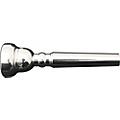 10A4 Silver
$71.50
{
"name": "10A4 Silver",
"skuUrl":"/brass-instruments/schilke-standard-series-trumpet-mouthpiece-group-i/475220000980902",
"status": "instock",
"statusText": "In stock",
"pimStatus": "R1",
"inventoryText": "In Stock & Ready To Ship",
"inventoryKey": "in_stock",
"prop65": "WARNING: This product can expose you to chemicals including Lead, which is known to the State of California to cause cancer, and to cause birth defects or other reproductive harm. For more information go to www.P65Warnings.ca.gov.",
"availableDate": "03-29-2024",
"price": 71.50,
"formatedIntegerValue": "71",
"decimalValue": "50",
"isOnSale": false,
"easyPayOptions":"0,0,300003,6 Months Promotional Financing,12/31/2024,Special 6-month 6-month special,71.5,true,/pages/Gear-Card-Rewards.gc,false,106,,/Special-Financing-Offers.gc,{primaryMonths}-month special financing,with no minimum purchase ,{secondaryMonths}-month financing,available on purchase of ${eligibleOrderValue} or more. Limited time,Get Details.,+ ${backInRewardsNum} back in rewards,No Interest if paid in full within 6 Months* On qualifying purchases thru 12/31/2024 made with your Musician's Friend Platinum credit card. Interest will be charged to your account from the purchase date if the promotional purchase is not paid in full within 6 months. Minimum monthly payments required. *Qualifying purchase amount must be on one receipt|| excluding the following: Open box gear and gift certificates. Cannot be combined with promotional coupons. No interest will be charged on the promo balance if you pay it off|| in full|| within the promo period. If you do not|| interest will be charged on the promo balance from the purchase date. The required minimum monthly payments may or may not pay off the promo balance before the end of the promo period|| depending on purchase amount|| promo length and payment allocation. Regular account terms apply to non-promo purchases and|| after promo period ends|| to the promo balance. New Account APR is 29.99%/Minimum Interest Charge is $2. Existing cardholders: See your credit card agreement terms. Subject to credit approval. ",
"msrp": 107.00,
"salePrice": 71.50,
"listPrice": 71.50,
"isPriceDrop": false,
"priceDropPrice": "",
"savingPercent": "0.00",
"promos":["freeShipping","topRated","guarantee"],"freeWarrantyAvail": false,
"sku": "site1sku475220000980902",
"displaySku": "475220 000980902",
"serialized": false,
"downloadable":"false",
"shipsFree":true,
"condition": "New",
"priceVisibility": "",
"scene7SetID": "MMGS7/475220000980902_MEDIA_SET",
"inCheckoutPromo":"false",
"invMsgVendorDropShip":"false",
"invMsgOverSized":"false",
"invMsgBackOrdered":"false",
"invMsgPreOrder":"false",
"invMsgPromiseDate":"",
"fakeInvMsgPromiseDate":"",
"invMsgAvailability":"In Stock & Ready to Ship",
"invMsgDetail":"Estimated delivery 5-8 business days",
"invMsgAddOnText":"",
"invMsgCurrent":"In Stock & Ready to Ship",
"invMsgAfterCutoff":"",
"orderCutoffTime":"Wed Apr 17 08:00:00 PDT 2024",
"twoDayShippingSourceStatus":"",
"currencySymbol": "$",
"styleImgUrl": "https://media.musiciansfriend.com/is/image/MMGS7/Standard-Series-Trumpet-Mouthpiece-Group-I-10A4-Silver/475220000980902-00-140x140.jpg",
"styleImgAlt": "Standard Series Trumpet Mouthpiece Group I 10A4 Silver",
"freeGiftWarning":false,
"freeGiftWarningTips":"",
"kitCarouselItems": [],
"pdpLoyaltyPoints":"576",
"pdpLoyaltyPointsMultiplier":"1.0",
"checksum":"40240744800",
"restrictionType":"",
"restrictionError":""
}
10A4 Silver
$71.50
{
"name": "10A4 Silver",
"skuUrl":"/brass-instruments/schilke-standard-series-trumpet-mouthpiece-group-i/475220000980902",
"status": "instock",
"statusText": "In stock",
"pimStatus": "R1",
"inventoryText": "In Stock & Ready To Ship",
"inventoryKey": "in_stock",
"prop65": "WARNING: This product can expose you to chemicals including Lead, which is known to the State of California to cause cancer, and to cause birth defects or other reproductive harm. For more information go to www.P65Warnings.ca.gov.",
"availableDate": "03-29-2024",
"price": 71.50,
"formatedIntegerValue": "71",
"decimalValue": "50",
"isOnSale": false,
"easyPayOptions":"0,0,300003,6 Months Promotional Financing,12/31/2024,Special 6-month 6-month special,71.5,true,/pages/Gear-Card-Rewards.gc,false,106,,/Special-Financing-Offers.gc,{primaryMonths}-month special financing,with no minimum purchase ,{secondaryMonths}-month financing,available on purchase of ${eligibleOrderValue} or more. Limited time,Get Details.,+ ${backInRewardsNum} back in rewards,No Interest if paid in full within 6 Months* On qualifying purchases thru 12/31/2024 made with your Musician's Friend Platinum credit card. Interest will be charged to your account from the purchase date if the promotional purchase is not paid in full within 6 months. Minimum monthly payments required. *Qualifying purchase amount must be on one receipt|| excluding the following: Open box gear and gift certificates. Cannot be combined with promotional coupons. No interest will be charged on the promo balance if you pay it off|| in full|| within the promo period. If you do not|| interest will be charged on the promo balance from the purchase date. The required minimum monthly payments may or may not pay off the promo balance before the end of the promo period|| depending on purchase amount|| promo length and payment allocation. Regular account terms apply to non-promo purchases and|| after promo period ends|| to the promo balance. New Account APR is 29.99%/Minimum Interest Charge is $2. Existing cardholders: See your credit card agreement terms. Subject to credit approval. ",
"msrp": 107.00,
"salePrice": 71.50,
"listPrice": 71.50,
"isPriceDrop": false,
"priceDropPrice": "",
"savingPercent": "0.00",
"promos":["freeShipping","topRated","guarantee"],"freeWarrantyAvail": false,
"sku": "site1sku475220000980902",
"displaySku": "475220 000980902",
"serialized": false,
"downloadable":"false",
"shipsFree":true,
"condition": "New",
"priceVisibility": "",
"scene7SetID": "MMGS7/475220000980902_MEDIA_SET",
"inCheckoutPromo":"false",
"invMsgVendorDropShip":"false",
"invMsgOverSized":"false",
"invMsgBackOrdered":"false",
"invMsgPreOrder":"false",
"invMsgPromiseDate":"",
"fakeInvMsgPromiseDate":"",
"invMsgAvailability":"In Stock & Ready to Ship",
"invMsgDetail":"Estimated delivery 5-8 business days",
"invMsgAddOnText":"",
"invMsgCurrent":"In Stock & Ready to Ship",
"invMsgAfterCutoff":"",
"orderCutoffTime":"Wed Apr 17 08:00:00 PDT 2024",
"twoDayShippingSourceStatus":"",
"currencySymbol": "$",
"styleImgUrl": "https://media.musiciansfriend.com/is/image/MMGS7/Standard-Series-Trumpet-Mouthpiece-Group-I-10A4-Silver/475220000980902-00-140x140.jpg",
"styleImgAlt": "Standard Series Trumpet Mouthpiece Group I 10A4 Silver",
"freeGiftWarning":false,
"freeGiftWarningTips":"",
"kitCarouselItems": [],
"pdpLoyaltyPoints":"576",
"pdpLoyaltyPointsMultiplier":"1.0",
"checksum":"40240744800",
"restrictionType":"",
"restrictionError":""
}
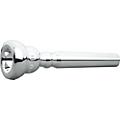 11 Silver
$71.50
{
"name": "11 Silver",
"skuUrl":"/brass-instruments/schilke-standard-series-trumpet-mouthpiece-group-i/475220000981902",
"status": "instock",
"statusText": "In stock",
"pimStatus": "R1",
"inventoryText": "In Stock & Ready To Ship",
"inventoryKey": "in_stock",
"prop65": "WARNING: This product can expose you to chemicals including Lead, which is known to the State of California to cause cancer, and to cause birth defects or other reproductive harm. For more information go to www.P65Warnings.ca.gov.",
"availableDate": "04-28-2024",
"price": 71.50,
"formatedIntegerValue": "71",
"decimalValue": "50",
"isOnSale": false,
"easyPayOptions":"0,0,300003,6 Months Promotional Financing,12/31/2024,Special 6-month 6-month special,71.5,true,/pages/Gear-Card-Rewards.gc,false,106,,/Special-Financing-Offers.gc,{primaryMonths}-month special financing,with no minimum purchase ,{secondaryMonths}-month financing,available on purchase of ${eligibleOrderValue} or more. Limited time,Get Details.,+ ${backInRewardsNum} back in rewards,No Interest if paid in full within 6 Months* On qualifying purchases thru 12/31/2024 made with your Musician's Friend Platinum credit card. Interest will be charged to your account from the purchase date if the promotional purchase is not paid in full within 6 months. Minimum monthly payments required. *Qualifying purchase amount must be on one receipt|| excluding the following: Open box gear and gift certificates. Cannot be combined with promotional coupons. No interest will be charged on the promo balance if you pay it off|| in full|| within the promo period. If you do not|| interest will be charged on the promo balance from the purchase date. The required minimum monthly payments may or may not pay off the promo balance before the end of the promo period|| depending on purchase amount|| promo length and payment allocation. Regular account terms apply to non-promo purchases and|| after promo period ends|| to the promo balance. New Account APR is 29.99%/Minimum Interest Charge is $2. Existing cardholders: See your credit card agreement terms. Subject to credit approval. ",
"msrp": 107.00,
"salePrice": 71.50,
"listPrice": 71.50,
"isPriceDrop": false,
"priceDropPrice": "",
"savingPercent": "0.00",
"promos":["freeShipping","topRated","guarantee"],"freeWarrantyAvail": false,
"sku": "site1sku475220000981902",
"displaySku": "475220 000981902",
"serialized": false,
"downloadable":"false",
"shipsFree":true,
"condition": "New",
"priceVisibility": "",
"scene7SetID": "MMGS7/475220000981902_MEDIA_SET",
"inCheckoutPromo":"false",
"invMsgVendorDropShip":"false",
"invMsgOverSized":"false",
"invMsgBackOrdered":"false",
"invMsgPreOrder":"false",
"invMsgPromiseDate":"",
"fakeInvMsgPromiseDate":"",
"invMsgAvailability":"In Stock & Ready to Ship",
"invMsgDetail":"Estimated delivery 5-8 business days",
"invMsgAddOnText":"",
"invMsgCurrent":"In Stock & Ready to Ship",
"invMsgAfterCutoff":"",
"orderCutoffTime":"Wed Apr 17 08:00:00 PDT 2024",
"twoDayShippingSourceStatus":"",
"currencySymbol": "$",
"styleImgUrl": "https://media.musiciansfriend.com/is/image/MMGS7/Standard-Series-Trumpet-Mouthpiece-Group-I-11-Silver/475220000981902-00-140x140.jpg",
"styleImgAlt": "Standard Series Trumpet Mouthpiece Group I 11 Silver",
"freeGiftWarning":false,
"freeGiftWarningTips":"",
"kitCarouselItems": [],
"pdpLoyaltyPoints":"576",
"pdpLoyaltyPointsMultiplier":"1.0",
"checksum":"40240744800",
"restrictionType":"",
"restrictionError":""
}
11 Silver
$71.50
{
"name": "11 Silver",
"skuUrl":"/brass-instruments/schilke-standard-series-trumpet-mouthpiece-group-i/475220000981902",
"status": "instock",
"statusText": "In stock",
"pimStatus": "R1",
"inventoryText": "In Stock & Ready To Ship",
"inventoryKey": "in_stock",
"prop65": "WARNING: This product can expose you to chemicals including Lead, which is known to the State of California to cause cancer, and to cause birth defects or other reproductive harm. For more information go to www.P65Warnings.ca.gov.",
"availableDate": "04-28-2024",
"price": 71.50,
"formatedIntegerValue": "71",
"decimalValue": "50",
"isOnSale": false,
"easyPayOptions":"0,0,300003,6 Months Promotional Financing,12/31/2024,Special 6-month 6-month special,71.5,true,/pages/Gear-Card-Rewards.gc,false,106,,/Special-Financing-Offers.gc,{primaryMonths}-month special financing,with no minimum purchase ,{secondaryMonths}-month financing,available on purchase of ${eligibleOrderValue} or more. Limited time,Get Details.,+ ${backInRewardsNum} back in rewards,No Interest if paid in full within 6 Months* On qualifying purchases thru 12/31/2024 made with your Musician's Friend Platinum credit card. Interest will be charged to your account from the purchase date if the promotional purchase is not paid in full within 6 months. Minimum monthly payments required. *Qualifying purchase amount must be on one receipt|| excluding the following: Open box gear and gift certificates. Cannot be combined with promotional coupons. No interest will be charged on the promo balance if you pay it off|| in full|| within the promo period. If you do not|| interest will be charged on the promo balance from the purchase date. The required minimum monthly payments may or may not pay off the promo balance before the end of the promo period|| depending on purchase amount|| promo length and payment allocation. Regular account terms apply to non-promo purchases and|| after promo period ends|| to the promo balance. New Account APR is 29.99%/Minimum Interest Charge is $2. Existing cardholders: See your credit card agreement terms. Subject to credit approval. ",
"msrp": 107.00,
"salePrice": 71.50,
"listPrice": 71.50,
"isPriceDrop": false,
"priceDropPrice": "",
"savingPercent": "0.00",
"promos":["freeShipping","topRated","guarantee"],"freeWarrantyAvail": false,
"sku": "site1sku475220000981902",
"displaySku": "475220 000981902",
"serialized": false,
"downloadable":"false",
"shipsFree":true,
"condition": "New",
"priceVisibility": "",
"scene7SetID": "MMGS7/475220000981902_MEDIA_SET",
"inCheckoutPromo":"false",
"invMsgVendorDropShip":"false",
"invMsgOverSized":"false",
"invMsgBackOrdered":"false",
"invMsgPreOrder":"false",
"invMsgPromiseDate":"",
"fakeInvMsgPromiseDate":"",
"invMsgAvailability":"In Stock & Ready to Ship",
"invMsgDetail":"Estimated delivery 5-8 business days",
"invMsgAddOnText":"",
"invMsgCurrent":"In Stock & Ready to Ship",
"invMsgAfterCutoff":"",
"orderCutoffTime":"Wed Apr 17 08:00:00 PDT 2024",
"twoDayShippingSourceStatus":"",
"currencySymbol": "$",
"styleImgUrl": "https://media.musiciansfriend.com/is/image/MMGS7/Standard-Series-Trumpet-Mouthpiece-Group-I-11-Silver/475220000981902-00-140x140.jpg",
"styleImgAlt": "Standard Series Trumpet Mouthpiece Group I 11 Silver",
"freeGiftWarning":false,
"freeGiftWarningTips":"",
"kitCarouselItems": [],
"pdpLoyaltyPoints":"576",
"pdpLoyaltyPointsMultiplier":"1.0",
"checksum":"40240744800",
"restrictionType":"",
"restrictionError":""
}
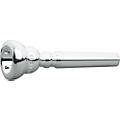 12 Silver
$71.50
{
"name": "12 Silver",
"skuUrl":"/brass-instruments/schilke-standard-series-trumpet-mouthpiece-group-i/475220000982902",
"status": "instock",
"statusText": "In stock",
"pimStatus": "R1",
"inventoryText": "In Stock & Ready To Ship",
"inventoryKey": "in_stock",
"prop65": "WARNING: This product can expose you to chemicals including Lead, which is known to the State of California to cause cancer, and to cause birth defects or other reproductive harm. For more information go to www.P65Warnings.ca.gov.",
"availableDate": "04-24-2024",
"price": 71.50,
"formatedIntegerValue": "71",
"decimalValue": "50",
"isOnSale": false,
"easyPayOptions":"0,0,300003,6 Months Promotional Financing,12/31/2024,Special 6-month 6-month special,71.5,true,/pages/Gear-Card-Rewards.gc,false,106,,/Special-Financing-Offers.gc,{primaryMonths}-month special financing,with no minimum purchase ,{secondaryMonths}-month financing,available on purchase of ${eligibleOrderValue} or more. Limited time,Get Details.,+ ${backInRewardsNum} back in rewards,No Interest if paid in full within 6 Months* On qualifying purchases thru 12/31/2024 made with your Musician's Friend Platinum credit card. Interest will be charged to your account from the purchase date if the promotional purchase is not paid in full within 6 months. Minimum monthly payments required. *Qualifying purchase amount must be on one receipt|| excluding the following: Open box gear and gift certificates. Cannot be combined with promotional coupons. No interest will be charged on the promo balance if you pay it off|| in full|| within the promo period. If you do not|| interest will be charged on the promo balance from the purchase date. The required minimum monthly payments may or may not pay off the promo balance before the end of the promo period|| depending on purchase amount|| promo length and payment allocation. Regular account terms apply to non-promo purchases and|| after promo period ends|| to the promo balance. New Account APR is 29.99%/Minimum Interest Charge is $2. Existing cardholders: See your credit card agreement terms. Subject to credit approval. ",
"msrp": 107.00,
"salePrice": 71.50,
"listPrice": 71.50,
"isPriceDrop": false,
"priceDropPrice": "",
"savingPercent": "0.00",
"promos":["freeShipping","topRated","topSeller","guarantee"],"freeWarrantyAvail": false,
"sku": "site1sku475220000982902",
"displaySku": "475220 000982902",
"serialized": false,
"downloadable":"false",
"shipsFree":true,
"condition": "New",
"priceVisibility": "",
"scene7SetID": "MMGS7/475220000982902_MEDIA_SET",
"inCheckoutPromo":"false",
"invMsgVendorDropShip":"false",
"invMsgOverSized":"false",
"invMsgBackOrdered":"false",
"invMsgPreOrder":"false",
"invMsgPromiseDate":"",
"fakeInvMsgPromiseDate":"",
"invMsgAvailability":"In Stock & Ready to Ship",
"invMsgDetail":"Estimated delivery 5-8 business days",
"invMsgAddOnText":"",
"invMsgCurrent":"In Stock & Ready to Ship",
"invMsgAfterCutoff":"",
"orderCutoffTime":"Wed Apr 17 08:00:00 PDT 2024",
"twoDayShippingSourceStatus":"",
"currencySymbol": "$",
"styleImgUrl": "https://media.musiciansfriend.com/is/image/MMGS7/Standard-Series-Trumpet-Mouthpiece-Group-I-12-Silver/475220000982902-00-140x140.jpg",
"styleImgAlt": "Standard Series Trumpet Mouthpiece Group I 12 Silver",
"freeGiftWarning":false,
"freeGiftWarningTips":"",
"kitCarouselItems": [],
"pdpLoyaltyPoints":"576",
"pdpLoyaltyPointsMultiplier":"1.0",
"checksum":"40240744800",
"restrictionType":"",
"restrictionError":""
}
12 Silver
$71.50
{
"name": "12 Silver",
"skuUrl":"/brass-instruments/schilke-standard-series-trumpet-mouthpiece-group-i/475220000982902",
"status": "instock",
"statusText": "In stock",
"pimStatus": "R1",
"inventoryText": "In Stock & Ready To Ship",
"inventoryKey": "in_stock",
"prop65": "WARNING: This product can expose you to chemicals including Lead, which is known to the State of California to cause cancer, and to cause birth defects or other reproductive harm. For more information go to www.P65Warnings.ca.gov.",
"availableDate": "04-24-2024",
"price": 71.50,
"formatedIntegerValue": "71",
"decimalValue": "50",
"isOnSale": false,
"easyPayOptions":"0,0,300003,6 Months Promotional Financing,12/31/2024,Special 6-month 6-month special,71.5,true,/pages/Gear-Card-Rewards.gc,false,106,,/Special-Financing-Offers.gc,{primaryMonths}-month special financing,with no minimum purchase ,{secondaryMonths}-month financing,available on purchase of ${eligibleOrderValue} or more. Limited time,Get Details.,+ ${backInRewardsNum} back in rewards,No Interest if paid in full within 6 Months* On qualifying purchases thru 12/31/2024 made with your Musician's Friend Platinum credit card. Interest will be charged to your account from the purchase date if the promotional purchase is not paid in full within 6 months. Minimum monthly payments required. *Qualifying purchase amount must be on one receipt|| excluding the following: Open box gear and gift certificates. Cannot be combined with promotional coupons. No interest will be charged on the promo balance if you pay it off|| in full|| within the promo period. If you do not|| interest will be charged on the promo balance from the purchase date. The required minimum monthly payments may or may not pay off the promo balance before the end of the promo period|| depending on purchase amount|| promo length and payment allocation. Regular account terms apply to non-promo purchases and|| after promo period ends|| to the promo balance. New Account APR is 29.99%/Minimum Interest Charge is $2. Existing cardholders: See your credit card agreement terms. Subject to credit approval. ",
"msrp": 107.00,
"salePrice": 71.50,
"listPrice": 71.50,
"isPriceDrop": false,
"priceDropPrice": "",
"savingPercent": "0.00",
"promos":["freeShipping","topRated","topSeller","guarantee"],"freeWarrantyAvail": false,
"sku": "site1sku475220000982902",
"displaySku": "475220 000982902",
"serialized": false,
"downloadable":"false",
"shipsFree":true,
"condition": "New",
"priceVisibility": "",
"scene7SetID": "MMGS7/475220000982902_MEDIA_SET",
"inCheckoutPromo":"false",
"invMsgVendorDropShip":"false",
"invMsgOverSized":"false",
"invMsgBackOrdered":"false",
"invMsgPreOrder":"false",
"invMsgPromiseDate":"",
"fakeInvMsgPromiseDate":"",
"invMsgAvailability":"In Stock & Ready to Ship",
"invMsgDetail":"Estimated delivery 5-8 business days",
"invMsgAddOnText":"",
"invMsgCurrent":"In Stock & Ready to Ship",
"invMsgAfterCutoff":"",
"orderCutoffTime":"Wed Apr 17 08:00:00 PDT 2024",
"twoDayShippingSourceStatus":"",
"currencySymbol": "$",
"styleImgUrl": "https://media.musiciansfriend.com/is/image/MMGS7/Standard-Series-Trumpet-Mouthpiece-Group-I-12-Silver/475220000982902-00-140x140.jpg",
"styleImgAlt": "Standard Series Trumpet Mouthpiece Group I 12 Silver",
"freeGiftWarning":false,
"freeGiftWarningTips":"",
"kitCarouselItems": [],
"pdpLoyaltyPoints":"576",
"pdpLoyaltyPointsMultiplier":"1.0",
"checksum":"40240744800",
"restrictionType":"",
"restrictionError":""
}
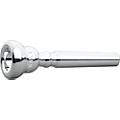 9 Silver
$71.50
{
"name": "9 Silver",
"skuUrl":"/brass-instruments/schilke-standard-series-trumpet-mouthpiece-group-i/475220000984902",
"status": "instock",
"statusText": "In stock",
"pimStatus": "R1",
"inventoryText": "In Stock & Ready To Ship",
"inventoryKey": "in_stock",
"prop65": "WARNING: This product can expose you to chemicals including Lead, which is known to the State of California to cause cancer, and to cause birth defects or other reproductive harm. For more information go to www.P65Warnings.ca.gov.",
"availableDate": "01-22-2024",
"price": 71.50,
"formatedIntegerValue": "71",
"decimalValue": "50",
"isOnSale": false,
"easyPayOptions":"0,0,300003,6 Months Promotional Financing,12/31/2024,Special 6-month 6-month special,71.5,true,/pages/Gear-Card-Rewards.gc,false,106,,/Special-Financing-Offers.gc,{primaryMonths}-month special financing,with no minimum purchase ,{secondaryMonths}-month financing,available on purchase of ${eligibleOrderValue} or more. Limited time,Get Details.,+ ${backInRewardsNum} back in rewards,No Interest if paid in full within 6 Months* On qualifying purchases thru 12/31/2024 made with your Musician's Friend Platinum credit card. Interest will be charged to your account from the purchase date if the promotional purchase is not paid in full within 6 months. Minimum monthly payments required. *Qualifying purchase amount must be on one receipt|| excluding the following: Open box gear and gift certificates. Cannot be combined with promotional coupons. No interest will be charged on the promo balance if you pay it off|| in full|| within the promo period. If you do not|| interest will be charged on the promo balance from the purchase date. The required minimum monthly payments may or may not pay off the promo balance before the end of the promo period|| depending on purchase amount|| promo length and payment allocation. Regular account terms apply to non-promo purchases and|| after promo period ends|| to the promo balance. New Account APR is 29.99%/Minimum Interest Charge is $2. Existing cardholders: See your credit card agreement terms. Subject to credit approval. ",
"msrp": 107.00,
"salePrice": 71.50,
"listPrice": 71.50,
"isPriceDrop": false,
"priceDropPrice": "",
"savingPercent": "0.00",
"promos":["freeShipping","topRated","guarantee"],"freeWarrantyAvail": false,
"sku": "site1sku475220000984902",
"displaySku": "475220 000984902",
"serialized": false,
"downloadable":"false",
"shipsFree":true,
"condition": "New",
"priceVisibility": "",
"scene7SetID": "MMGS7/475220000984902_MEDIA_SET",
"inCheckoutPromo":"false",
"invMsgVendorDropShip":"false",
"invMsgOverSized":"false",
"invMsgBackOrdered":"false",
"invMsgPreOrder":"false",
"invMsgPromiseDate":"",
"fakeInvMsgPromiseDate":"",
"invMsgAvailability":"In Stock & Ready to Ship",
"invMsgDetail":"Estimated delivery 5-8 business days",
"invMsgAddOnText":"",
"invMsgCurrent":"In Stock & Ready to Ship",
"invMsgAfterCutoff":"",
"orderCutoffTime":"Wed Apr 17 08:00:00 PDT 2024",
"twoDayShippingSourceStatus":"",
"currencySymbol": "$",
"styleImgUrl": "https://media.musiciansfriend.com/is/image/MMGS7/Standard-Series-Trumpet-Mouthpiece-Group-I-9-Silver/475220000984902-00-140x140.jpg",
"styleImgAlt": "Standard Series Trumpet Mouthpiece Group I 9 Silver",
"freeGiftWarning":false,
"freeGiftWarningTips":"",
"kitCarouselItems": [],
"pdpLoyaltyPoints":"576",
"pdpLoyaltyPointsMultiplier":"1.0",
"checksum":"40240744800",
"restrictionType":"",
"restrictionError":""
}
9 Silver
$71.50
{
"name": "9 Silver",
"skuUrl":"/brass-instruments/schilke-standard-series-trumpet-mouthpiece-group-i/475220000984902",
"status": "instock",
"statusText": "In stock",
"pimStatus": "R1",
"inventoryText": "In Stock & Ready To Ship",
"inventoryKey": "in_stock",
"prop65": "WARNING: This product can expose you to chemicals including Lead, which is known to the State of California to cause cancer, and to cause birth defects or other reproductive harm. For more information go to www.P65Warnings.ca.gov.",
"availableDate": "01-22-2024",
"price": 71.50,
"formatedIntegerValue": "71",
"decimalValue": "50",
"isOnSale": false,
"easyPayOptions":"0,0,300003,6 Months Promotional Financing,12/31/2024,Special 6-month 6-month special,71.5,true,/pages/Gear-Card-Rewards.gc,false,106,,/Special-Financing-Offers.gc,{primaryMonths}-month special financing,with no minimum purchase ,{secondaryMonths}-month financing,available on purchase of ${eligibleOrderValue} or more. Limited time,Get Details.,+ ${backInRewardsNum} back in rewards,No Interest if paid in full within 6 Months* On qualifying purchases thru 12/31/2024 made with your Musician's Friend Platinum credit card. Interest will be charged to your account from the purchase date if the promotional purchase is not paid in full within 6 months. Minimum monthly payments required. *Qualifying purchase amount must be on one receipt|| excluding the following: Open box gear and gift certificates. Cannot be combined with promotional coupons. No interest will be charged on the promo balance if you pay it off|| in full|| within the promo period. If you do not|| interest will be charged on the promo balance from the purchase date. The required minimum monthly payments may or may not pay off the promo balance before the end of the promo period|| depending on purchase amount|| promo length and payment allocation. Regular account terms apply to non-promo purchases and|| after promo period ends|| to the promo balance. New Account APR is 29.99%/Minimum Interest Charge is $2. Existing cardholders: See your credit card agreement terms. Subject to credit approval. ",
"msrp": 107.00,
"salePrice": 71.50,
"listPrice": 71.50,
"isPriceDrop": false,
"priceDropPrice": "",
"savingPercent": "0.00",
"promos":["freeShipping","topRated","guarantee"],"freeWarrantyAvail": false,
"sku": "site1sku475220000984902",
"displaySku": "475220 000984902",
"serialized": false,
"downloadable":"false",
"shipsFree":true,
"condition": "New",
"priceVisibility": "",
"scene7SetID": "MMGS7/475220000984902_MEDIA_SET",
"inCheckoutPromo":"false",
"invMsgVendorDropShip":"false",
"invMsgOverSized":"false",
"invMsgBackOrdered":"false",
"invMsgPreOrder":"false",
"invMsgPromiseDate":"",
"fakeInvMsgPromiseDate":"",
"invMsgAvailability":"In Stock & Ready to Ship",
"invMsgDetail":"Estimated delivery 5-8 business days",
"invMsgAddOnText":"",
"invMsgCurrent":"In Stock & Ready to Ship",
"invMsgAfterCutoff":"",
"orderCutoffTime":"Wed Apr 17 08:00:00 PDT 2024",
"twoDayShippingSourceStatus":"",
"currencySymbol": "$",
"styleImgUrl": "https://media.musiciansfriend.com/is/image/MMGS7/Standard-Series-Trumpet-Mouthpiece-Group-I-9-Silver/475220000984902-00-140x140.jpg",
"styleImgAlt": "Standard Series Trumpet Mouthpiece Group I 9 Silver",
"freeGiftWarning":false,
"freeGiftWarningTips":"",
"kitCarouselItems": [],
"pdpLoyaltyPoints":"576",
"pdpLoyaltyPointsMultiplier":"1.0",
"checksum":"40240744800",
"restrictionType":"",
"restrictionError":""
}
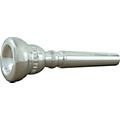 6A4a Silver
$71.50
{
"name": "6A4a Silver",
"skuUrl":"/brass-instruments/schilke-standard-series-trumpet-mouthpiece-group-i/475220000900902",
"status": "backorderable",
"statusText": "Back Order",
"pimStatus": "R1",
"inventoryText": "Order Now!",
"inventoryKey": "back_order",
"prop65": "WARNING: This product can expose you to chemicals including Lead, which is known to the State of California to cause cancer, and to cause birth defects or other reproductive harm. For more information go to www.P65Warnings.ca.gov.",
"availableDate": "04-23-2024",
"price": 71.50,
"formatedIntegerValue": "71",
"decimalValue": "50",
"isOnSale": false,
"easyPayOptions":"0,0,300003,6 Months Promotional Financing,12/31/2024,Special 6-month 6-month special,71.5,true,/pages/Gear-Card-Rewards.gc,false,106,,/Special-Financing-Offers.gc,{primaryMonths}-month special financing,with no minimum purchase ,{secondaryMonths}-month financing,available on purchase of ${eligibleOrderValue} or more. Limited time,Get Details.,+ ${backInRewardsNum} back in rewards,No Interest if paid in full within 6 Months* On qualifying purchases thru 12/31/2024 made with your Musician's Friend Platinum credit card. Interest will be charged to your account from the purchase date if the promotional purchase is not paid in full within 6 months. Minimum monthly payments required. *Qualifying purchase amount must be on one receipt|| excluding the following: Open box gear and gift certificates. Cannot be combined with promotional coupons. No interest will be charged on the promo balance if you pay it off|| in full|| within the promo period. If you do not|| interest will be charged on the promo balance from the purchase date. The required minimum monthly payments may or may not pay off the promo balance before the end of the promo period|| depending on purchase amount|| promo length and payment allocation. Regular account terms apply to non-promo purchases and|| after promo period ends|| to the promo balance. New Account APR is 29.99%/Minimum Interest Charge is $2. Existing cardholders: See your credit card agreement terms. Subject to credit approval. ",
"msrp": 107.00,
"salePrice": 71.50,
"listPrice": 71.50,
"isPriceDrop": false,
"priceDropPrice": "",
"savingPercent": "0.00",
"promos":["freeShipping","topRated","guarantee"],"freeWarrantyAvail": false,
"sku": "site1sku475220000900902",
"displaySku": "475220 000900902",
"serialized": false,
"downloadable":"false",
"shipsFree":true,
"condition": "New",
"priceVisibility": "",
"scene7SetID": "MMGS7/475220000900902_MEDIA_SET",
"inCheckoutPromo":"false",
"invMsgVendorDropShip":"false",
"invMsgOverSized":"false",
"invMsgBackOrdered":"true",
"invMsgPreOrder":"false",
"invMsgPromiseDate":"04-30-2024",
"fakeInvMsgPromiseDate":"",
"invMsgAvailability":"Order Now!",
"invMsgDetail":"This item is backordered but is available to reserve now. You will not be charged until the item ships.",
"invMsgAddOnText":"",
"invMsgCurrent":"Order Now!",
"invMsgAfterCutoff":"",
"orderCutoffTime":"Wed Apr 17 08:00:00 PDT 2024",
"twoDayShippingSourceStatus":"",
"currencySymbol": "$",
"styleImgUrl": "https://media.musiciansfriend.com/is/image/MMGS7/Standard-Series-Trumpet-Mouthpiece-Group-I-6A4a-Silver/475220000900902-00-140x140.jpg",
"styleImgAlt": "Standard Series Trumpet Mouthpiece Group I 6A4a Silver",
"freeGiftWarning":false,
"freeGiftWarningTips":"",
"kitCarouselItems": [],
"pdpLoyaltyPoints":"576",
"pdpLoyaltyPointsMultiplier":"1.0",
"checksum":"40240744800",
"restrictionType":"",
"restrictionError":""
}
6A4a Silver
$71.50
{
"name": "6A4a Silver",
"skuUrl":"/brass-instruments/schilke-standard-series-trumpet-mouthpiece-group-i/475220000900902",
"status": "backorderable",
"statusText": "Back Order",
"pimStatus": "R1",
"inventoryText": "Order Now!",
"inventoryKey": "back_order",
"prop65": "WARNING: This product can expose you to chemicals including Lead, which is known to the State of California to cause cancer, and to cause birth defects or other reproductive harm. For more information go to www.P65Warnings.ca.gov.",
"availableDate": "04-23-2024",
"price": 71.50,
"formatedIntegerValue": "71",
"decimalValue": "50",
"isOnSale": false,
"easyPayOptions":"0,0,300003,6 Months Promotional Financing,12/31/2024,Special 6-month 6-month special,71.5,true,/pages/Gear-Card-Rewards.gc,false,106,,/Special-Financing-Offers.gc,{primaryMonths}-month special financing,with no minimum purchase ,{secondaryMonths}-month financing,available on purchase of ${eligibleOrderValue} or more. Limited time,Get Details.,+ ${backInRewardsNum} back in rewards,No Interest if paid in full within 6 Months* On qualifying purchases thru 12/31/2024 made with your Musician's Friend Platinum credit card. Interest will be charged to your account from the purchase date if the promotional purchase is not paid in full within 6 months. Minimum monthly payments required. *Qualifying purchase amount must be on one receipt|| excluding the following: Open box gear and gift certificates. Cannot be combined with promotional coupons. No interest will be charged on the promo balance if you pay it off|| in full|| within the promo period. If you do not|| interest will be charged on the promo balance from the purchase date. The required minimum monthly payments may or may not pay off the promo balance before the end of the promo period|| depending on purchase amount|| promo length and payment allocation. Regular account terms apply to non-promo purchases and|| after promo period ends|| to the promo balance. New Account APR is 29.99%/Minimum Interest Charge is $2. Existing cardholders: See your credit card agreement terms. Subject to credit approval. ",
"msrp": 107.00,
"salePrice": 71.50,
"listPrice": 71.50,
"isPriceDrop": false,
"priceDropPrice": "",
"savingPercent": "0.00",
"promos":["freeShipping","topRated","guarantee"],"freeWarrantyAvail": false,
"sku": "site1sku475220000900902",
"displaySku": "475220 000900902",
"serialized": false,
"downloadable":"false",
"shipsFree":true,
"condition": "New",
"priceVisibility": "",
"scene7SetID": "MMGS7/475220000900902_MEDIA_SET",
"inCheckoutPromo":"false",
"invMsgVendorDropShip":"false",
"invMsgOverSized":"false",
"invMsgBackOrdered":"true",
"invMsgPreOrder":"false",
"invMsgPromiseDate":"04-30-2024",
"fakeInvMsgPromiseDate":"",
"invMsgAvailability":"Order Now!",
"invMsgDetail":"This item is backordered but is available to reserve now. You will not be charged until the item ships.",
"invMsgAddOnText":"",
"invMsgCurrent":"Order Now!",
"invMsgAfterCutoff":"",
"orderCutoffTime":"Wed Apr 17 08:00:00 PDT 2024",
"twoDayShippingSourceStatus":"",
"currencySymbol": "$",
"styleImgUrl": "https://media.musiciansfriend.com/is/image/MMGS7/Standard-Series-Trumpet-Mouthpiece-Group-I-6A4a-Silver/475220000900902-00-140x140.jpg",
"styleImgAlt": "Standard Series Trumpet Mouthpiece Group I 6A4a Silver",
"freeGiftWarning":false,
"freeGiftWarningTips":"",
"kitCarouselItems": [],
"pdpLoyaltyPoints":"576",
"pdpLoyaltyPointsMultiplier":"1.0",
"checksum":"40240744800",
"restrictionType":"",
"restrictionError":""
}
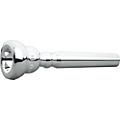 8A4 Silver
$71.50
{
"name": "8A4 Silver",
"skuUrl":"/brass-instruments/schilke-standard-series-trumpet-mouthpiece-group-i/475220000903902",
"status": "backorderable",
"statusText": "Back Order",
"pimStatus": "R1",
"inventoryText": "Order Now!",
"inventoryKey": "back_order",
"prop65": "WARNING: This product can expose you to chemicals including Lead, which is known to the State of California to cause cancer, and to cause birth defects or other reproductive harm. For more information go to www.P65Warnings.ca.gov.",
"availableDate": "04-23-2024",
"price": 71.50,
"formatedIntegerValue": "71",
"decimalValue": "50",
"isOnSale": false,
"easyPayOptions":"0,0,300003,6 Months Promotional Financing,12/31/2024,Special 6-month 6-month special,71.5,true,/pages/Gear-Card-Rewards.gc,false,106,,/Special-Financing-Offers.gc,{primaryMonths}-month special financing,with no minimum purchase ,{secondaryMonths}-month financing,available on purchase of ${eligibleOrderValue} or more. Limited time,Get Details.,+ ${backInRewardsNum} back in rewards,No Interest if paid in full within 6 Months* On qualifying purchases thru 12/31/2024 made with your Musician's Friend Platinum credit card. Interest will be charged to your account from the purchase date if the promotional purchase is not paid in full within 6 months. Minimum monthly payments required. *Qualifying purchase amount must be on one receipt|| excluding the following: Open box gear and gift certificates. Cannot be combined with promotional coupons. No interest will be charged on the promo balance if you pay it off|| in full|| within the promo period. If you do not|| interest will be charged on the promo balance from the purchase date. The required minimum monthly payments may or may not pay off the promo balance before the end of the promo period|| depending on purchase amount|| promo length and payment allocation. Regular account terms apply to non-promo purchases and|| after promo period ends|| to the promo balance. New Account APR is 29.99%/Minimum Interest Charge is $2. Existing cardholders: See your credit card agreement terms. Subject to credit approval. ",
"msrp": 107.00,
"salePrice": 71.50,
"listPrice": 71.50,
"isPriceDrop": false,
"priceDropPrice": "",
"savingPercent": "0.00",
"promos":["freeShipping","topRated","topSeller","guarantee"],"freeWarrantyAvail": false,
"sku": "site1sku475220000903902",
"displaySku": "475220 000903902",
"serialized": false,
"downloadable":"false",
"shipsFree":true,
"condition": "New",
"priceVisibility": "",
"scene7SetID": "MMGS7/475220000903902_MEDIA_SET",
"inCheckoutPromo":"false",
"invMsgVendorDropShip":"false",
"invMsgOverSized":"false",
"invMsgBackOrdered":"true",
"invMsgPreOrder":"false",
"invMsgPromiseDate":"04-30-2024",
"fakeInvMsgPromiseDate":"",
"invMsgAvailability":"Order Now!",
"invMsgDetail":"This item is backordered but is available to reserve now. You will not be charged until the item ships.",
"invMsgAddOnText":"",
"invMsgCurrent":"Order Now!",
"invMsgAfterCutoff":"",
"orderCutoffTime":"Wed Apr 17 08:00:00 PDT 2024",
"twoDayShippingSourceStatus":"",
"currencySymbol": "$",
"styleImgUrl": "https://media.musiciansfriend.com/is/image/MMGS7/Standard-Series-Trumpet-Mouthpiece-Group-I-8A4-Silver/475220000903902-00-140x140.jpg",
"styleImgAlt": "Standard Series Trumpet Mouthpiece Group I 8A4 Silver",
"freeGiftWarning":false,
"freeGiftWarningTips":"",
"kitCarouselItems": [],
"pdpLoyaltyPoints":"576",
"pdpLoyaltyPointsMultiplier":"1.0",
"checksum":"40240744800",
"restrictionType":"",
"restrictionError":""
}
8A4 Silver
$71.50
{
"name": "8A4 Silver",
"skuUrl":"/brass-instruments/schilke-standard-series-trumpet-mouthpiece-group-i/475220000903902",
"status": "backorderable",
"statusText": "Back Order",
"pimStatus": "R1",
"inventoryText": "Order Now!",
"inventoryKey": "back_order",
"prop65": "WARNING: This product can expose you to chemicals including Lead, which is known to the State of California to cause cancer, and to cause birth defects or other reproductive harm. For more information go to www.P65Warnings.ca.gov.",
"availableDate": "04-23-2024",
"price": 71.50,
"formatedIntegerValue": "71",
"decimalValue": "50",
"isOnSale": false,
"easyPayOptions":"0,0,300003,6 Months Promotional Financing,12/31/2024,Special 6-month 6-month special,71.5,true,/pages/Gear-Card-Rewards.gc,false,106,,/Special-Financing-Offers.gc,{primaryMonths}-month special financing,with no minimum purchase ,{secondaryMonths}-month financing,available on purchase of ${eligibleOrderValue} or more. Limited time,Get Details.,+ ${backInRewardsNum} back in rewards,No Interest if paid in full within 6 Months* On qualifying purchases thru 12/31/2024 made with your Musician's Friend Platinum credit card. Interest will be charged to your account from the purchase date if the promotional purchase is not paid in full within 6 months. Minimum monthly payments required. *Qualifying purchase amount must be on one receipt|| excluding the following: Open box gear and gift certificates. Cannot be combined with promotional coupons. No interest will be charged on the promo balance if you pay it off|| in full|| within the promo period. If you do not|| interest will be charged on the promo balance from the purchase date. The required minimum monthly payments may or may not pay off the promo balance before the end of the promo period|| depending on purchase amount|| promo length and payment allocation. Regular account terms apply to non-promo purchases and|| after promo period ends|| to the promo balance. New Account APR is 29.99%/Minimum Interest Charge is $2. Existing cardholders: See your credit card agreement terms. Subject to credit approval. ",
"msrp": 107.00,
"salePrice": 71.50,
"listPrice": 71.50,
"isPriceDrop": false,
"priceDropPrice": "",
"savingPercent": "0.00",
"promos":["freeShipping","topRated","topSeller","guarantee"],"freeWarrantyAvail": false,
"sku": "site1sku475220000903902",
"displaySku": "475220 000903902",
"serialized": false,
"downloadable":"false",
"shipsFree":true,
"condition": "New",
"priceVisibility": "",
"scene7SetID": "MMGS7/475220000903902_MEDIA_SET",
"inCheckoutPromo":"false",
"invMsgVendorDropShip":"false",
"invMsgOverSized":"false",
"invMsgBackOrdered":"true",
"invMsgPreOrder":"false",
"invMsgPromiseDate":"04-30-2024",
"fakeInvMsgPromiseDate":"",
"invMsgAvailability":"Order Now!",
"invMsgDetail":"This item is backordered but is available to reserve now. You will not be charged until the item ships.",
"invMsgAddOnText":"",
"invMsgCurrent":"Order Now!",
"invMsgAfterCutoff":"",
"orderCutoffTime":"Wed Apr 17 08:00:00 PDT 2024",
"twoDayShippingSourceStatus":"",
"currencySymbol": "$",
"styleImgUrl": "https://media.musiciansfriend.com/is/image/MMGS7/Standard-Series-Trumpet-Mouthpiece-Group-I-8A4-Silver/475220000903902-00-140x140.jpg",
"styleImgAlt": "Standard Series Trumpet Mouthpiece Group I 8A4 Silver",
"freeGiftWarning":false,
"freeGiftWarningTips":"",
"kitCarouselItems": [],
"pdpLoyaltyPoints":"576",
"pdpLoyaltyPointsMultiplier":"1.0",
"checksum":"40240744800",
"restrictionType":"",
"restrictionError":""
}
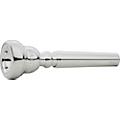 9C4 Silver
$71.50
{
"name": "9C4 Silver",
"skuUrl":"/brass-instruments/schilke-standard-series-trumpet-mouthpiece-group-i/475220000905902",
"status": "backorderable",
"statusText": "Back Order",
"pimStatus": "R1",
"inventoryText": "Order Now!",
"inventoryKey": "back_order",
"prop65": "WARNING: This product can expose you to chemicals including Lead, which is known to the State of California to cause cancer, and to cause birth defects or other reproductive harm. For more information go to www.P65Warnings.ca.gov.",
"availableDate": "05-22-2024",
"price": 71.50,
"formatedIntegerValue": "71",
"decimalValue": "50",
"isOnSale": false,
"easyPayOptions":"0,0,300003,6 Months Promotional Financing,12/31/2024,Special 6-month 6-month special,71.5,true,/pages/Gear-Card-Rewards.gc,false,106,,/Special-Financing-Offers.gc,{primaryMonths}-month special financing,with no minimum purchase ,{secondaryMonths}-month financing,available on purchase of ${eligibleOrderValue} or more. Limited time,Get Details.,+ ${backInRewardsNum} back in rewards,No Interest if paid in full within 6 Months* On qualifying purchases thru 12/31/2024 made with your Musician's Friend Platinum credit card. Interest will be charged to your account from the purchase date if the promotional purchase is not paid in full within 6 months. Minimum monthly payments required. *Qualifying purchase amount must be on one receipt|| excluding the following: Open box gear and gift certificates. Cannot be combined with promotional coupons. No interest will be charged on the promo balance if you pay it off|| in full|| within the promo period. If you do not|| interest will be charged on the promo balance from the purchase date. The required minimum monthly payments may or may not pay off the promo balance before the end of the promo period|| depending on purchase amount|| promo length and payment allocation. Regular account terms apply to non-promo purchases and|| after promo period ends|| to the promo balance. New Account APR is 29.99%/Minimum Interest Charge is $2. Existing cardholders: See your credit card agreement terms. Subject to credit approval. ",
"msrp": 107.00,
"salePrice": 71.50,
"listPrice": 71.50,
"isPriceDrop": false,
"priceDropPrice": "",
"savingPercent": "0.00",
"promos":["freeShipping","topRated","guarantee"],"freeWarrantyAvail": false,
"sku": "site1sku475220000905902",
"displaySku": "475220 000905902",
"serialized": false,
"downloadable":"false",
"shipsFree":true,
"condition": "New",
"priceVisibility": "",
"scene7SetID": "MMGS7/475220000905902_MEDIA_SET",
"inCheckoutPromo":"false",
"invMsgVendorDropShip":"false",
"invMsgOverSized":"false",
"invMsgBackOrdered":"false",
"invMsgPreOrder":"false",
"invMsgPromiseDate":"06-26-2024",
"fakeInvMsgPromiseDate":"",
"invMsgAvailability":"Order Now!",
"invMsgDetail":"This item is backordered but is available to reserve now. You will not be charged until the item ships.",
"invMsgAddOnText":"",
"invMsgCurrent":"Order Now!",
"invMsgAfterCutoff":"",
"orderCutoffTime":"Wed Apr 17 08:00:00 PDT 2024",
"twoDayShippingSourceStatus":"",
"currencySymbol": "$",
"styleImgUrl": "https://media.musiciansfriend.com/is/image/MMGS7/Standard-Series-Trumpet-Mouthpiece-Group-I-9C4-Silver/475220000905902-00-140x140.jpg",
"styleImgAlt": "Standard Series Trumpet Mouthpiece Group I 9C4 Silver",
"freeGiftWarning":false,
"freeGiftWarningTips":"",
"kitCarouselItems": [],
"pdpLoyaltyPoints":"576",
"pdpLoyaltyPointsMultiplier":"1.0",
"checksum":"40240744800",
"restrictionType":"",
"restrictionError":""
}
9C4 Silver
$71.50
{
"name": "9C4 Silver",
"skuUrl":"/brass-instruments/schilke-standard-series-trumpet-mouthpiece-group-i/475220000905902",
"status": "backorderable",
"statusText": "Back Order",
"pimStatus": "R1",
"inventoryText": "Order Now!",
"inventoryKey": "back_order",
"prop65": "WARNING: This product can expose you to chemicals including Lead, which is known to the State of California to cause cancer, and to cause birth defects or other reproductive harm. For more information go to www.P65Warnings.ca.gov.",
"availableDate": "05-22-2024",
"price": 71.50,
"formatedIntegerValue": "71",
"decimalValue": "50",
"isOnSale": false,
"easyPayOptions":"0,0,300003,6 Months Promotional Financing,12/31/2024,Special 6-month 6-month special,71.5,true,/pages/Gear-Card-Rewards.gc,false,106,,/Special-Financing-Offers.gc,{primaryMonths}-month special financing,with no minimum purchase ,{secondaryMonths}-month financing,available on purchase of ${eligibleOrderValue} or more. Limited time,Get Details.,+ ${backInRewardsNum} back in rewards,No Interest if paid in full within 6 Months* On qualifying purchases thru 12/31/2024 made with your Musician's Friend Platinum credit card. Interest will be charged to your account from the purchase date if the promotional purchase is not paid in full within 6 months. Minimum monthly payments required. *Qualifying purchase amount must be on one receipt|| excluding the following: Open box gear and gift certificates. Cannot be combined with promotional coupons. No interest will be charged on the promo balance if you pay it off|| in full|| within the promo period. If you do not|| interest will be charged on the promo balance from the purchase date. The required minimum monthly payments may or may not pay off the promo balance before the end of the promo period|| depending on purchase amount|| promo length and payment allocation. Regular account terms apply to non-promo purchases and|| after promo period ends|| to the promo balance. New Account APR is 29.99%/Minimum Interest Charge is $2. Existing cardholders: See your credit card agreement terms. Subject to credit approval. ",
"msrp": 107.00,
"salePrice": 71.50,
"listPrice": 71.50,
"isPriceDrop": false,
"priceDropPrice": "",
"savingPercent": "0.00",
"promos":["freeShipping","topRated","guarantee"],"freeWarrantyAvail": false,
"sku": "site1sku475220000905902",
"displaySku": "475220 000905902",
"serialized": false,
"downloadable":"false",
"shipsFree":true,
"condition": "New",
"priceVisibility": "",
"scene7SetID": "MMGS7/475220000905902_MEDIA_SET",
"inCheckoutPromo":"false",
"invMsgVendorDropShip":"false",
"invMsgOverSized":"false",
"invMsgBackOrdered":"false",
"invMsgPreOrder":"false",
"invMsgPromiseDate":"06-26-2024",
"fakeInvMsgPromiseDate":"",
"invMsgAvailability":"Order Now!",
"invMsgDetail":"This item is backordered but is available to reserve now. You will not be charged until the item ships.",
"invMsgAddOnText":"",
"invMsgCurrent":"Order Now!",
"invMsgAfterCutoff":"",
"orderCutoffTime":"Wed Apr 17 08:00:00 PDT 2024",
"twoDayShippingSourceStatus":"",
"currencySymbol": "$",
"styleImgUrl": "https://media.musiciansfriend.com/is/image/MMGS7/Standard-Series-Trumpet-Mouthpiece-Group-I-9C4-Silver/475220000905902-00-140x140.jpg",
"styleImgAlt": "Standard Series Trumpet Mouthpiece Group I 9C4 Silver",
"freeGiftWarning":false,
"freeGiftWarningTips":"",
"kitCarouselItems": [],
"pdpLoyaltyPoints":"576",
"pdpLoyaltyPointsMultiplier":"1.0",
"checksum":"40240744800",
"restrictionType":"",
"restrictionError":""
}
 14A4x Silver
$71.50
{
"name": "14A4x Silver",
"skuUrl":"/brass-instruments/schilke-standard-series-trumpet-mouthpiece-group-i/475220000919902",
"status": "backorderable",
"statusText": "Back Order",
"pimStatus": "R1",
"inventoryText": "Order Now!",
"inventoryKey": "back_order",
"prop65": "WARNING: This product can expose you to chemicals including Lead, which is known to the State of California to cause cancer, and to cause birth defects or other reproductive harm. For more information go to www.P65Warnings.ca.gov.",
"availableDate": "04-23-2024",
"price": 71.50,
"formatedIntegerValue": "71",
"decimalValue": "50",
"isOnSale": false,
"easyPayOptions":"0,0,300003,6 Months Promotional Financing,12/31/2024,Special 6-month 6-month special,71.5,true,/pages/Gear-Card-Rewards.gc,false,106,,/Special-Financing-Offers.gc,{primaryMonths}-month special financing,with no minimum purchase ,{secondaryMonths}-month financing,available on purchase of ${eligibleOrderValue} or more. Limited time,Get Details.,+ ${backInRewardsNum} back in rewards,No Interest if paid in full within 6 Months* On qualifying purchases thru 12/31/2024 made with your Musician's Friend Platinum credit card. Interest will be charged to your account from the purchase date if the promotional purchase is not paid in full within 6 months. Minimum monthly payments required. *Qualifying purchase amount must be on one receipt|| excluding the following: Open box gear and gift certificates. Cannot be combined with promotional coupons. No interest will be charged on the promo balance if you pay it off|| in full|| within the promo period. If you do not|| interest will be charged on the promo balance from the purchase date. The required minimum monthly payments may or may not pay off the promo balance before the end of the promo period|| depending on purchase amount|| promo length and payment allocation. Regular account terms apply to non-promo purchases and|| after promo period ends|| to the promo balance. New Account APR is 29.99%/Minimum Interest Charge is $2. Existing cardholders: See your credit card agreement terms. Subject to credit approval. ",
"msrp": 107.00,
"salePrice": 71.50,
"listPrice": 71.50,
"isPriceDrop": false,
"priceDropPrice": "",
"savingPercent": "0.00",
"promos":["freeShipping","topRated","guarantee"],"freeWarrantyAvail": false,
"sku": "site1sku475220000919902",
"displaySku": "475220 000919902",
"serialized": false,
"downloadable":"false",
"shipsFree":true,
"condition": "New",
"priceVisibility": "",
"scene7SetID": "MMGS7/475220000919902_MEDIA_SET",
"inCheckoutPromo":"false",
"invMsgVendorDropShip":"false",
"invMsgOverSized":"false",
"invMsgBackOrdered":"true",
"invMsgPreOrder":"false",
"invMsgPromiseDate":"04-30-2024",
"fakeInvMsgPromiseDate":"",
"invMsgAvailability":"Order Now!",
"invMsgDetail":"This item is backordered but is available to reserve now. You will not be charged until the item ships.",
"invMsgAddOnText":"",
"invMsgCurrent":"Order Now!",
"invMsgAfterCutoff":"",
"orderCutoffTime":"Wed Apr 17 08:00:00 PDT 2024",
"twoDayShippingSourceStatus":"",
"currencySymbol": "$",
"styleImgUrl": "https://media.musiciansfriend.com/is/image/MMGS7/Standard-Series-Trumpet-Mouthpiece-Group-I-14A4x-Silver/475220000919902-00-140x140.jpg",
"styleImgAlt": "Standard Series Trumpet Mouthpiece Group I 14A4x Silver",
"freeGiftWarning":false,
"freeGiftWarningTips":"",
"kitCarouselItems": [],
"pdpLoyaltyPoints":"576",
"pdpLoyaltyPointsMultiplier":"1.0",
"checksum":"40240744800",
"restrictionType":"",
"restrictionError":""
}
14A4x Silver
$71.50
{
"name": "14A4x Silver",
"skuUrl":"/brass-instruments/schilke-standard-series-trumpet-mouthpiece-group-i/475220000919902",
"status": "backorderable",
"statusText": "Back Order",
"pimStatus": "R1",
"inventoryText": "Order Now!",
"inventoryKey": "back_order",
"prop65": "WARNING: This product can expose you to chemicals including Lead, which is known to the State of California to cause cancer, and to cause birth defects or other reproductive harm. For more information go to www.P65Warnings.ca.gov.",
"availableDate": "04-23-2024",
"price": 71.50,
"formatedIntegerValue": "71",
"decimalValue": "50",
"isOnSale": false,
"easyPayOptions":"0,0,300003,6 Months Promotional Financing,12/31/2024,Special 6-month 6-month special,71.5,true,/pages/Gear-Card-Rewards.gc,false,106,,/Special-Financing-Offers.gc,{primaryMonths}-month special financing,with no minimum purchase ,{secondaryMonths}-month financing,available on purchase of ${eligibleOrderValue} or more. Limited time,Get Details.,+ ${backInRewardsNum} back in rewards,No Interest if paid in full within 6 Months* On qualifying purchases thru 12/31/2024 made with your Musician's Friend Platinum credit card. Interest will be charged to your account from the purchase date if the promotional purchase is not paid in full within 6 months. Minimum monthly payments required. *Qualifying purchase amount must be on one receipt|| excluding the following: Open box gear and gift certificates. Cannot be combined with promotional coupons. No interest will be charged on the promo balance if you pay it off|| in full|| within the promo period. If you do not|| interest will be charged on the promo balance from the purchase date. The required minimum monthly payments may or may not pay off the promo balance before the end of the promo period|| depending on purchase amount|| promo length and payment allocation. Regular account terms apply to non-promo purchases and|| after promo period ends|| to the promo balance. New Account APR is 29.99%/Minimum Interest Charge is $2. Existing cardholders: See your credit card agreement terms. Subject to credit approval. ",
"msrp": 107.00,
"salePrice": 71.50,
"listPrice": 71.50,
"isPriceDrop": false,
"priceDropPrice": "",
"savingPercent": "0.00",
"promos":["freeShipping","topRated","guarantee"],"freeWarrantyAvail": false,
"sku": "site1sku475220000919902",
"displaySku": "475220 000919902",
"serialized": false,
"downloadable":"false",
"shipsFree":true,
"condition": "New",
"priceVisibility": "",
"scene7SetID": "MMGS7/475220000919902_MEDIA_SET",
"inCheckoutPromo":"false",
"invMsgVendorDropShip":"false",
"invMsgOverSized":"false",
"invMsgBackOrdered":"true",
"invMsgPreOrder":"false",
"invMsgPromiseDate":"04-30-2024",
"fakeInvMsgPromiseDate":"",
"invMsgAvailability":"Order Now!",
"invMsgDetail":"This item is backordered but is available to reserve now. You will not be charged until the item ships.",
"invMsgAddOnText":"",
"invMsgCurrent":"Order Now!",
"invMsgAfterCutoff":"",
"orderCutoffTime":"Wed Apr 17 08:00:00 PDT 2024",
"twoDayShippingSourceStatus":"",
"currencySymbol": "$",
"styleImgUrl": "https://media.musiciansfriend.com/is/image/MMGS7/Standard-Series-Trumpet-Mouthpiece-Group-I-14A4x-Silver/475220000919902-00-140x140.jpg",
"styleImgAlt": "Standard Series Trumpet Mouthpiece Group I 14A4x Silver",
"freeGiftWarning":false,
"freeGiftWarningTips":"",
"kitCarouselItems": [],
"pdpLoyaltyPoints":"576",
"pdpLoyaltyPointsMultiplier":"1.0",
"checksum":"40240744800",
"restrictionType":"",
"restrictionError":""
}
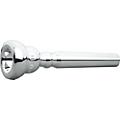 11Ax Silver
$71.50
{
"name": "11Ax Silver",
"skuUrl":"/brass-instruments/schilke-standard-series-trumpet-mouthpiece-group-i/475220000940902",
"status": "backorderable",
"statusText": "Back Order",
"pimStatus": "R1",
"inventoryText": "Order Now!",
"inventoryKey": "back_order",
"prop65": "WARNING: This product can expose you to chemicals including Lead, which is known to the State of California to cause cancer, and to cause birth defects or other reproductive harm. For more information go to www.P65Warnings.ca.gov.",
"availableDate": "04-23-2024",
"price": 71.50,
"formatedIntegerValue": "71",
"decimalValue": "50",
"isOnSale": false,
"easyPayOptions":"0,0,300003,6 Months Promotional Financing,12/31/2024,Special 6-month 6-month special,71.5,true,/pages/Gear-Card-Rewards.gc,false,106,,/Special-Financing-Offers.gc,{primaryMonths}-month special financing,with no minimum purchase ,{secondaryMonths}-month financing,available on purchase of ${eligibleOrderValue} or more. Limited time,Get Details.,+ ${backInRewardsNum} back in rewards,No Interest if paid in full within 6 Months* On qualifying purchases thru 12/31/2024 made with your Musician's Friend Platinum credit card. Interest will be charged to your account from the purchase date if the promotional purchase is not paid in full within 6 months. Minimum monthly payments required. *Qualifying purchase amount must be on one receipt|| excluding the following: Open box gear and gift certificates. Cannot be combined with promotional coupons. No interest will be charged on the promo balance if you pay it off|| in full|| within the promo period. If you do not|| interest will be charged on the promo balance from the purchase date. The required minimum monthly payments may or may not pay off the promo balance before the end of the promo period|| depending on purchase amount|| promo length and payment allocation. Regular account terms apply to non-promo purchases and|| after promo period ends|| to the promo balance. New Account APR is 29.99%/Minimum Interest Charge is $2. Existing cardholders: See your credit card agreement terms. Subject to credit approval. ",
"msrp": 107.00,
"salePrice": 71.50,
"listPrice": 71.50,
"isPriceDrop": false,
"priceDropPrice": "",
"savingPercent": "0.00",
"promos":["freeShipping","topRated","guarantee"],"freeWarrantyAvail": false,
"sku": "site1sku475220000940902",
"displaySku": "475220 000940902",
"serialized": false,
"downloadable":"false",
"shipsFree":true,
"condition": "New",
"priceVisibility": "",
"scene7SetID": "MMGS7/475220000940902_MEDIA_SET",
"inCheckoutPromo":"false",
"invMsgVendorDropShip":"false",
"invMsgOverSized":"false",
"invMsgBackOrdered":"true",
"invMsgPreOrder":"false",
"invMsgPromiseDate":"04-30-2024",
"fakeInvMsgPromiseDate":"",
"invMsgAvailability":"Order Now!",
"invMsgDetail":"This item is backordered but is available to reserve now. You will not be charged until the item ships.",
"invMsgAddOnText":"",
"invMsgCurrent":"Order Now!",
"invMsgAfterCutoff":"",
"orderCutoffTime":"Wed Apr 17 08:00:00 PDT 2024",
"twoDayShippingSourceStatus":"",
"currencySymbol": "$",
"styleImgUrl": "https://media.musiciansfriend.com/is/image/MMGS7/Standard-Series-Trumpet-Mouthpiece-Group-I-11Ax-Silver/475220000940902-00-140x140.jpg",
"styleImgAlt": "Standard Series Trumpet Mouthpiece Group I 11Ax Silver",
"freeGiftWarning":false,
"freeGiftWarningTips":"",
"kitCarouselItems": [],
"pdpLoyaltyPoints":"576",
"pdpLoyaltyPointsMultiplier":"1.0",
"checksum":"40240744800",
"restrictionType":"",
"restrictionError":""
}
11Ax Silver
$71.50
{
"name": "11Ax Silver",
"skuUrl":"/brass-instruments/schilke-standard-series-trumpet-mouthpiece-group-i/475220000940902",
"status": "backorderable",
"statusText": "Back Order",
"pimStatus": "R1",
"inventoryText": "Order Now!",
"inventoryKey": "back_order",
"prop65": "WARNING: This product can expose you to chemicals including Lead, which is known to the State of California to cause cancer, and to cause birth defects or other reproductive harm. For more information go to www.P65Warnings.ca.gov.",
"availableDate": "04-23-2024",
"price": 71.50,
"formatedIntegerValue": "71",
"decimalValue": "50",
"isOnSale": false,
"easyPayOptions":"0,0,300003,6 Months Promotional Financing,12/31/2024,Special 6-month 6-month special,71.5,true,/pages/Gear-Card-Rewards.gc,false,106,,/Special-Financing-Offers.gc,{primaryMonths}-month special financing,with no minimum purchase ,{secondaryMonths}-month financing,available on purchase of ${eligibleOrderValue} or more. Limited time,Get Details.,+ ${backInRewardsNum} back in rewards,No Interest if paid in full within 6 Months* On qualifying purchases thru 12/31/2024 made with your Musician's Friend Platinum credit card. Interest will be charged to your account from the purchase date if the promotional purchase is not paid in full within 6 months. Minimum monthly payments required. *Qualifying purchase amount must be on one receipt|| excluding the following: Open box gear and gift certificates. Cannot be combined with promotional coupons. No interest will be charged on the promo balance if you pay it off|| in full|| within the promo period. If you do not|| interest will be charged on the promo balance from the purchase date. The required minimum monthly payments may or may not pay off the promo balance before the end of the promo period|| depending on purchase amount|| promo length and payment allocation. Regular account terms apply to non-promo purchases and|| after promo period ends|| to the promo balance. New Account APR is 29.99%/Minimum Interest Charge is $2. Existing cardholders: See your credit card agreement terms. Subject to credit approval. ",
"msrp": 107.00,
"salePrice": 71.50,
"listPrice": 71.50,
"isPriceDrop": false,
"priceDropPrice": "",
"savingPercent": "0.00",
"promos":["freeShipping","topRated","guarantee"],"freeWarrantyAvail": false,
"sku": "site1sku475220000940902",
"displaySku": "475220 000940902",
"serialized": false,
"downloadable":"false",
"shipsFree":true,
"condition": "New",
"priceVisibility": "",
"scene7SetID": "MMGS7/475220000940902_MEDIA_SET",
"inCheckoutPromo":"false",
"invMsgVendorDropShip":"false",
"invMsgOverSized":"false",
"invMsgBackOrdered":"true",
"invMsgPreOrder":"false",
"invMsgPromiseDate":"04-30-2024",
"fakeInvMsgPromiseDate":"",
"invMsgAvailability":"Order Now!",
"invMsgDetail":"This item is backordered but is available to reserve now. You will not be charged until the item ships.",
"invMsgAddOnText":"",
"invMsgCurrent":"Order Now!",
"invMsgAfterCutoff":"",
"orderCutoffTime":"Wed Apr 17 08:00:00 PDT 2024",
"twoDayShippingSourceStatus":"",
"currencySymbol": "$",
"styleImgUrl": "https://media.musiciansfriend.com/is/image/MMGS7/Standard-Series-Trumpet-Mouthpiece-Group-I-11Ax-Silver/475220000940902-00-140x140.jpg",
"styleImgAlt": "Standard Series Trumpet Mouthpiece Group I 11Ax Silver",
"freeGiftWarning":false,
"freeGiftWarningTips":"",
"kitCarouselItems": [],
"pdpLoyaltyPoints":"576",
"pdpLoyaltyPointsMultiplier":"1.0",
"checksum":"40240744800",
"restrictionType":"",
"restrictionError":""
}
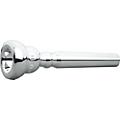 10B4 Silver
$71.50
{
"name": "10B4 Silver",
"skuUrl":"/brass-instruments/schilke-standard-series-trumpet-mouthpiece-group-i/475220000906902",
"status": "backorderable",
"statusText": "Back Order",
"pimStatus": "R1",
"inventoryText": "Order Now!",
"inventoryKey": "back_order",
"prop65": "WARNING: This product can expose you to chemicals including Lead, which is known to the State of California to cause cancer, and to cause birth defects or other reproductive harm. For more information go to www.P65Warnings.ca.gov.",
"price": 71.50,
"formatedIntegerValue": "71",
"decimalValue": "50",
"isOnSale": false,
"easyPayOptions":"0,0,300003,6 Months Promotional Financing,12/31/2024,Special 6-month 6-month special,71.5,true,/pages/Gear-Card-Rewards.gc,false,106,,/Special-Financing-Offers.gc,{primaryMonths}-month special financing,with no minimum purchase ,{secondaryMonths}-month financing,available on purchase of ${eligibleOrderValue} or more. Limited time,Get Details.,+ ${backInRewardsNum} back in rewards,No Interest if paid in full within 6 Months* On qualifying purchases thru 12/31/2024 made with your Musician's Friend Platinum credit card. Interest will be charged to your account from the purchase date if the promotional purchase is not paid in full within 6 months. Minimum monthly payments required. *Qualifying purchase amount must be on one receipt|| excluding the following: Open box gear and gift certificates. Cannot be combined with promotional coupons. No interest will be charged on the promo balance if you pay it off|| in full|| within the promo period. If you do not|| interest will be charged on the promo balance from the purchase date. The required minimum monthly payments may or may not pay off the promo balance before the end of the promo period|| depending on purchase amount|| promo length and payment allocation. Regular account terms apply to non-promo purchases and|| after promo period ends|| to the promo balance. New Account APR is 29.99%/Minimum Interest Charge is $2. Existing cardholders: See your credit card agreement terms. Subject to credit approval. ",
"msrp": 107.00,
"salePrice": 71.50,
"listPrice": 71.50,
"isPriceDrop": false,
"priceDropPrice": "",
"savingPercent": "0.00",
"promos":["freeShipping","topRated","guarantee"],
"warranty": false,
"freeWarrantyAvail": false,
"sku": "site1sku475220000906902",
"displaySku": "475220 000906902",
"serialized": false,
"downloadable":"false",
"shipsFree":true,
"condition": "New",
"priceVisibility": "",
"scene7SetID": "MMGS7/475220000906902_MEDIA_SET",
"inCheckoutPromo":"false",
"invMsgVendorDropShip":"false",
"invMsgOverSized":"false",
"invMsgBackOrdered":"true",
"invMsgPreOrder":"false",
"invMsgPromiseDate":"05-17-2024",
"fakeInvMsgPromiseDate":"",
"invMsgAvailability":"Order Now!",
"invMsgDetail":"This item is backordered but is available to reserve now. You will not be charged until the item ships.",
"invMsgAddOnText":"",
"invMsgCurrent":"Order Now!",
"invMsgAfterCutoff":"",
"orderCutoffTime":"Wed Apr 17 08:00:00 PDT 2024",
"twoDayShippingSourceStatus":"",
"currencySymbol": "$",
"styleImgUrl": "https://media.musiciansfriend.com/is/image/MMGS7/Standard-Series-Trumpet-Mouthpiece-Group-I-10B4-Silver/475220000906902-00-140x140.jpg",
"styleImgAlt": "Standard Series Trumpet Mouthpiece Group I 10B4 Silver",
"freeGiftWarning":false,
"freeGiftWarningTips":"",
"kitCarouselItems": [],
"pdpLoyaltyPoints":"576",
"pdpLoyaltyPointsMultiplier":"1.0",
"checksum":"40240744800",
"restrictionType":"",
"restrictionError":""
}
10B4 Silver
$71.50
{
"name": "10B4 Silver",
"skuUrl":"/brass-instruments/schilke-standard-series-trumpet-mouthpiece-group-i/475220000906902",
"status": "backorderable",
"statusText": "Back Order",
"pimStatus": "R1",
"inventoryText": "Order Now!",
"inventoryKey": "back_order",
"prop65": "WARNING: This product can expose you to chemicals including Lead, which is known to the State of California to cause cancer, and to cause birth defects or other reproductive harm. For more information go to www.P65Warnings.ca.gov.",
"price": 71.50,
"formatedIntegerValue": "71",
"decimalValue": "50",
"isOnSale": false,
"easyPayOptions":"0,0,300003,6 Months Promotional Financing,12/31/2024,Special 6-month 6-month special,71.5,true,/pages/Gear-Card-Rewards.gc,false,106,,/Special-Financing-Offers.gc,{primaryMonths}-month special financing,with no minimum purchase ,{secondaryMonths}-month financing,available on purchase of ${eligibleOrderValue} or more. Limited time,Get Details.,+ ${backInRewardsNum} back in rewards,No Interest if paid in full within 6 Months* On qualifying purchases thru 12/31/2024 made with your Musician's Friend Platinum credit card. Interest will be charged to your account from the purchase date if the promotional purchase is not paid in full within 6 months. Minimum monthly payments required. *Qualifying purchase amount must be on one receipt|| excluding the following: Open box gear and gift certificates. Cannot be combined with promotional coupons. No interest will be charged on the promo balance if you pay it off|| in full|| within the promo period. If you do not|| interest will be charged on the promo balance from the purchase date. The required minimum monthly payments may or may not pay off the promo balance before the end of the promo period|| depending on purchase amount|| promo length and payment allocation. Regular account terms apply to non-promo purchases and|| after promo period ends|| to the promo balance. New Account APR is 29.99%/Minimum Interest Charge is $2. Existing cardholders: See your credit card agreement terms. Subject to credit approval. ",
"msrp": 107.00,
"salePrice": 71.50,
"listPrice": 71.50,
"isPriceDrop": false,
"priceDropPrice": "",
"savingPercent": "0.00",
"promos":["freeShipping","topRated","guarantee"],
"warranty": false,
"freeWarrantyAvail": false,
"sku": "site1sku475220000906902",
"displaySku": "475220 000906902",
"serialized": false,
"downloadable":"false",
"shipsFree":true,
"condition": "New",
"priceVisibility": "",
"scene7SetID": "MMGS7/475220000906902_MEDIA_SET",
"inCheckoutPromo":"false",
"invMsgVendorDropShip":"false",
"invMsgOverSized":"false",
"invMsgBackOrdered":"true",
"invMsgPreOrder":"false",
"invMsgPromiseDate":"05-17-2024",
"fakeInvMsgPromiseDate":"",
"invMsgAvailability":"Order Now!",
"invMsgDetail":"This item is backordered but is available to reserve now. You will not be charged until the item ships.",
"invMsgAddOnText":"",
"invMsgCurrent":"Order Now!",
"invMsgAfterCutoff":"",
"orderCutoffTime":"Wed Apr 17 08:00:00 PDT 2024",
"twoDayShippingSourceStatus":"",
"currencySymbol": "$",
"styleImgUrl": "https://media.musiciansfriend.com/is/image/MMGS7/Standard-Series-Trumpet-Mouthpiece-Group-I-10B4-Silver/475220000906902-00-140x140.jpg",
"styleImgAlt": "Standard Series Trumpet Mouthpiece Group I 10B4 Silver",
"freeGiftWarning":false,
"freeGiftWarningTips":"",
"kitCarouselItems": [],
"pdpLoyaltyPoints":"576",
"pdpLoyaltyPointsMultiplier":"1.0",
"checksum":"40240744800",
"restrictionType":"",
"restrictionError":""
}
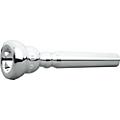 11D4 Silver
$71.50
{
"name": "11D4 Silver",
"skuUrl":"/brass-instruments/schilke-standard-series-trumpet-mouthpiece-group-i/475220000907902",
"status": "backorderable",
"statusText": "Back Order",
"pimStatus": "R1",
"inventoryText": "Order Now!",
"inventoryKey": "back_order",
"prop65": "WARNING: This product can expose you to chemicals including Lead, which is known to the State of California to cause cancer, and to cause birth defects or other reproductive harm. For more information go to www.P65Warnings.ca.gov.",
"price": 71.50,
"formatedIntegerValue": "71",
"decimalValue": "50",
"isOnSale": false,
"easyPayOptions":"0,0,300003,6 Months Promotional Financing,12/31/2024,Special 6-month 6-month special,71.5,true,/pages/Gear-Card-Rewards.gc,false,106,,/Special-Financing-Offers.gc,{primaryMonths}-month special financing,with no minimum purchase ,{secondaryMonths}-month financing,available on purchase of ${eligibleOrderValue} or more. Limited time,Get Details.,+ ${backInRewardsNum} back in rewards,No Interest if paid in full within 6 Months* On qualifying purchases thru 12/31/2024 made with your Musician's Friend Platinum credit card. Interest will be charged to your account from the purchase date if the promotional purchase is not paid in full within 6 months. Minimum monthly payments required. *Qualifying purchase amount must be on one receipt|| excluding the following: Open box gear and gift certificates. Cannot be combined with promotional coupons. No interest will be charged on the promo balance if you pay it off|| in full|| within the promo period. If you do not|| interest will be charged on the promo balance from the purchase date. The required minimum monthly payments may or may not pay off the promo balance before the end of the promo period|| depending on purchase amount|| promo length and payment allocation. Regular account terms apply to non-promo purchases and|| after promo period ends|| to the promo balance. New Account APR is 29.99%/Minimum Interest Charge is $2. Existing cardholders: See your credit card agreement terms. Subject to credit approval. ",
"msrp": 107.00,
"salePrice": 71.50,
"listPrice": 71.50,
"isPriceDrop": false,
"priceDropPrice": "",
"savingPercent": "0.00",
"promos":["freeShipping","topRated","guarantee"],"freeWarrantyAvail": false,
"sku": "site1sku475220000907902",
"displaySku": "475220 000907902",
"serialized": false,
"downloadable":"false",
"shipsFree":true,
"condition": "New",
"priceVisibility": "",
"scene7SetID": "MMGS7/475220000907902_MEDIA_SET",
"inCheckoutPromo":"false",
"invMsgVendorDropShip":"false",
"invMsgOverSized":"false",
"invMsgBackOrdered":"false",
"invMsgPreOrder":"false",
"invMsgPromiseDate":"06-26-2024",
"fakeInvMsgPromiseDate":"",
"invMsgAvailability":"Order Now!",
"invMsgDetail":"This item is backordered but is available to reserve now. You will not be charged until the item ships.",
"invMsgAddOnText":"",
"invMsgCurrent":"Order Now!",
"invMsgAfterCutoff":"",
"orderCutoffTime":"Wed Apr 17 08:00:00 PDT 2024",
"twoDayShippingSourceStatus":"",
"currencySymbol": "$",
"styleImgUrl": "https://media.musiciansfriend.com/is/image/MMGS7/Standard-Series-Trumpet-Mouthpiece-Group-I-11D4-Silver/475220000907902-00-140x140.jpg",
"styleImgAlt": "Standard Series Trumpet Mouthpiece Group I 11D4 Silver",
"freeGiftWarning":false,
"freeGiftWarningTips":"",
"kitCarouselItems": [],
"pdpLoyaltyPoints":"576",
"pdpLoyaltyPointsMultiplier":"1.0",
"checksum":"40240744800",
"restrictionType":"",
"restrictionError":""
}
11D4 Silver
$71.50
{
"name": "11D4 Silver",
"skuUrl":"/brass-instruments/schilke-standard-series-trumpet-mouthpiece-group-i/475220000907902",
"status": "backorderable",
"statusText": "Back Order",
"pimStatus": "R1",
"inventoryText": "Order Now!",
"inventoryKey": "back_order",
"prop65": "WARNING: This product can expose you to chemicals including Lead, which is known to the State of California to cause cancer, and to cause birth defects or other reproductive harm. For more information go to www.P65Warnings.ca.gov.",
"price": 71.50,
"formatedIntegerValue": "71",
"decimalValue": "50",
"isOnSale": false,
"easyPayOptions":"0,0,300003,6 Months Promotional Financing,12/31/2024,Special 6-month 6-month special,71.5,true,/pages/Gear-Card-Rewards.gc,false,106,,/Special-Financing-Offers.gc,{primaryMonths}-month special financing,with no minimum purchase ,{secondaryMonths}-month financing,available on purchase of ${eligibleOrderValue} or more. Limited time,Get Details.,+ ${backInRewardsNum} back in rewards,No Interest if paid in full within 6 Months* On qualifying purchases thru 12/31/2024 made with your Musician's Friend Platinum credit card. Interest will be charged to your account from the purchase date if the promotional purchase is not paid in full within 6 months. Minimum monthly payments required. *Qualifying purchase amount must be on one receipt|| excluding the following: Open box gear and gift certificates. Cannot be combined with promotional coupons. No interest will be charged on the promo balance if you pay it off|| in full|| within the promo period. If you do not|| interest will be charged on the promo balance from the purchase date. The required minimum monthly payments may or may not pay off the promo balance before the end of the promo period|| depending on purchase amount|| promo length and payment allocation. Regular account terms apply to non-promo purchases and|| after promo period ends|| to the promo balance. New Account APR is 29.99%/Minimum Interest Charge is $2. Existing cardholders: See your credit card agreement terms. Subject to credit approval. ",
"msrp": 107.00,
"salePrice": 71.50,
"listPrice": 71.50,
"isPriceDrop": false,
"priceDropPrice": "",
"savingPercent": "0.00",
"promos":["freeShipping","topRated","guarantee"],"freeWarrantyAvail": false,
"sku": "site1sku475220000907902",
"displaySku": "475220 000907902",
"serialized": false,
"downloadable":"false",
"shipsFree":true,
"condition": "New",
"priceVisibility": "",
"scene7SetID": "MMGS7/475220000907902_MEDIA_SET",
"inCheckoutPromo":"false",
"invMsgVendorDropShip":"false",
"invMsgOverSized":"false",
"invMsgBackOrdered":"false",
"invMsgPreOrder":"false",
"invMsgPromiseDate":"06-26-2024",
"fakeInvMsgPromiseDate":"",
"invMsgAvailability":"Order Now!",
"invMsgDetail":"This item is backordered but is available to reserve now. You will not be charged until the item ships.",
"invMsgAddOnText":"",
"invMsgCurrent":"Order Now!",
"invMsgAfterCutoff":"",
"orderCutoffTime":"Wed Apr 17 08:00:00 PDT 2024",
"twoDayShippingSourceStatus":"",
"currencySymbol": "$",
"styleImgUrl": "https://media.musiciansfriend.com/is/image/MMGS7/Standard-Series-Trumpet-Mouthpiece-Group-I-11D4-Silver/475220000907902-00-140x140.jpg",
"styleImgAlt": "Standard Series Trumpet Mouthpiece Group I 11D4 Silver",
"freeGiftWarning":false,
"freeGiftWarningTips":"",
"kitCarouselItems": [],
"pdpLoyaltyPoints":"576",
"pdpLoyaltyPointsMultiplier":"1.0",
"checksum":"40240744800",
"restrictionType":"",
"restrictionError":""
}
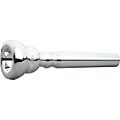 13D4 Silver
$71.50
{
"name": "13D4 Silver",
"skuUrl":"/brass-instruments/schilke-standard-series-trumpet-mouthpiece-group-i/475220000942902",
"status": "backorderable",
"statusText": "Back Order",
"pimStatus": "R1",
"inventoryText": "Order Now!",
"inventoryKey": "back_order",
"prop65": "WARNING: This product can expose you to chemicals including Lead, which is known to the State of California to cause cancer, and to cause birth defects or other reproductive harm. For more information go to www.P65Warnings.ca.gov.",
"price": 71.50,
"formatedIntegerValue": "71",
"decimalValue": "50",
"isOnSale": false,
"easyPayOptions":"0,0,300003,6 Months Promotional Financing,12/31/2024,Special 6-month 6-month special,71.5,true,/pages/Gear-Card-Rewards.gc,false,106,,/Special-Financing-Offers.gc,{primaryMonths}-month special financing,with no minimum purchase ,{secondaryMonths}-month financing,available on purchase of ${eligibleOrderValue} or more. Limited time,Get Details.,+ ${backInRewardsNum} back in rewards,No Interest if paid in full within 6 Months* On qualifying purchases thru 12/31/2024 made with your Musician's Friend Platinum credit card. Interest will be charged to your account from the purchase date if the promotional purchase is not paid in full within 6 months. Minimum monthly payments required. *Qualifying purchase amount must be on one receipt|| excluding the following: Open box gear and gift certificates. Cannot be combined with promotional coupons. No interest will be charged on the promo balance if you pay it off|| in full|| within the promo period. If you do not|| interest will be charged on the promo balance from the purchase date. The required minimum monthly payments may or may not pay off the promo balance before the end of the promo period|| depending on purchase amount|| promo length and payment allocation. Regular account terms apply to non-promo purchases and|| after promo period ends|| to the promo balance. New Account APR is 29.99%/Minimum Interest Charge is $2. Existing cardholders: See your credit card agreement terms. Subject to credit approval. ",
"msrp": 107.00,
"salePrice": 71.50,
"listPrice": 71.50,
"isPriceDrop": false,
"priceDropPrice": "",
"savingPercent": "0.00",
"promos":["freeShipping","topRated","guarantee"],"freeWarrantyAvail": false,
"sku": "site1sku475220000942902",
"displaySku": "475220 000942902",
"serialized": false,
"downloadable":"false",
"shipsFree":true,
"condition": "New",
"priceVisibility": "",
"scene7SetID": "MMGS7/475220000942902_MEDIA_SET",
"inCheckoutPromo":"false",
"invMsgVendorDropShip":"false",
"invMsgOverSized":"false",
"invMsgBackOrdered":"true",
"invMsgPreOrder":"false",
"invMsgPromiseDate":"05-17-2024",
"fakeInvMsgPromiseDate":"",
"invMsgAvailability":"Order Now!",
"invMsgDetail":"This item is backordered but is available to reserve now. You will not be charged until the item ships.",
"invMsgAddOnText":"",
"invMsgCurrent":"Order Now!",
"invMsgAfterCutoff":"",
"orderCutoffTime":"Wed Apr 17 08:00:00 PDT 2024",
"twoDayShippingSourceStatus":"",
"currencySymbol": "$",
"styleImgUrl": "https://media.musiciansfriend.com/is/image/MMGS7/Standard-Series-Trumpet-Mouthpiece-Group-I-13D4-Silver/475220000942902-00-140x140.jpg",
"styleImgAlt": "Standard Series Trumpet Mouthpiece Group I 13D4 Silver",
"freeGiftWarning":false,
"freeGiftWarningTips":"",
"kitCarouselItems": [],
"pdpLoyaltyPoints":"576",
"pdpLoyaltyPointsMultiplier":"1.0",
"checksum":"40240744800",
"restrictionType":"",
"restrictionError":""
}
13D4 Silver
$71.50
{
"name": "13D4 Silver",
"skuUrl":"/brass-instruments/schilke-standard-series-trumpet-mouthpiece-group-i/475220000942902",
"status": "backorderable",
"statusText": "Back Order",
"pimStatus": "R1",
"inventoryText": "Order Now!",
"inventoryKey": "back_order",
"prop65": "WARNING: This product can expose you to chemicals including Lead, which is known to the State of California to cause cancer, and to cause birth defects or other reproductive harm. For more information go to www.P65Warnings.ca.gov.",
"price": 71.50,
"formatedIntegerValue": "71",
"decimalValue": "50",
"isOnSale": false,
"easyPayOptions":"0,0,300003,6 Months Promotional Financing,12/31/2024,Special 6-month 6-month special,71.5,true,/pages/Gear-Card-Rewards.gc,false,106,,/Special-Financing-Offers.gc,{primaryMonths}-month special financing,with no minimum purchase ,{secondaryMonths}-month financing,available on purchase of ${eligibleOrderValue} or more. Limited time,Get Details.,+ ${backInRewardsNum} back in rewards,No Interest if paid in full within 6 Months* On qualifying purchases thru 12/31/2024 made with your Musician's Friend Platinum credit card. Interest will be charged to your account from the purchase date if the promotional purchase is not paid in full within 6 months. Minimum monthly payments required. *Qualifying purchase amount must be on one receipt|| excluding the following: Open box gear and gift certificates. Cannot be combined with promotional coupons. No interest will be charged on the promo balance if you pay it off|| in full|| within the promo period. If you do not|| interest will be charged on the promo balance from the purchase date. The required minimum monthly payments may or may not pay off the promo balance before the end of the promo period|| depending on purchase amount|| promo length and payment allocation. Regular account terms apply to non-promo purchases and|| after promo period ends|| to the promo balance. New Account APR is 29.99%/Minimum Interest Charge is $2. Existing cardholders: See your credit card agreement terms. Subject to credit approval. ",
"msrp": 107.00,
"salePrice": 71.50,
"listPrice": 71.50,
"isPriceDrop": false,
"priceDropPrice": "",
"savingPercent": "0.00",
"promos":["freeShipping","topRated","guarantee"],"freeWarrantyAvail": false,
"sku": "site1sku475220000942902",
"displaySku": "475220 000942902",
"serialized": false,
"downloadable":"false",
"shipsFree":true,
"condition": "New",
"priceVisibility": "",
"scene7SetID": "MMGS7/475220000942902_MEDIA_SET",
"inCheckoutPromo":"false",
"invMsgVendorDropShip":"false",
"invMsgOverSized":"false",
"invMsgBackOrdered":"true",
"invMsgPreOrder":"false",
"invMsgPromiseDate":"05-17-2024",
"fakeInvMsgPromiseDate":"",
"invMsgAvailability":"Order Now!",
"invMsgDetail":"This item is backordered but is available to reserve now. You will not be charged until the item ships.",
"invMsgAddOnText":"",
"invMsgCurrent":"Order Now!",
"invMsgAfterCutoff":"",
"orderCutoffTime":"Wed Apr 17 08:00:00 PDT 2024",
"twoDayShippingSourceStatus":"",
"currencySymbol": "$",
"styleImgUrl": "https://media.musiciansfriend.com/is/image/MMGS7/Standard-Series-Trumpet-Mouthpiece-Group-I-13D4-Silver/475220000942902-00-140x140.jpg",
"styleImgAlt": "Standard Series Trumpet Mouthpiece Group I 13D4 Silver",
"freeGiftWarning":false,
"freeGiftWarningTips":"",
"kitCarouselItems": [],
"pdpLoyaltyPoints":"576",
"pdpLoyaltyPointsMultiplier":"1.0",
"checksum":"40240744800",
"restrictionType":"",
"restrictionError":""
}
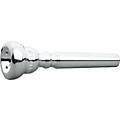 11A Silver
$71.50
{
"name": "11A Silver",
"skuUrl":"/brass-instruments/schilke-standard-series-trumpet-mouthpiece-group-i/475220000983902",
"status": "backorderable",
"statusText": "Back Order",
"pimStatus": "R1",
"inventoryText": "Order Now!",
"inventoryKey": "back_order",
"prop65": "WARNING: This product can expose you to chemicals including Lead, which is known to the State of California to cause cancer, and to cause birth defects or other reproductive harm. For more information go to www.P65Warnings.ca.gov.",
"price": 71.50,
"formatedIntegerValue": "71",
"decimalValue": "50",
"isOnSale": false,
"easyPayOptions":"0,0,300003,6 Months Promotional Financing,12/31/2024,Special 6-month 6-month special,71.5,true,/pages/Gear-Card-Rewards.gc,false,106,,/Special-Financing-Offers.gc,{primaryMonths}-month special financing,with no minimum purchase ,{secondaryMonths}-month financing,available on purchase of ${eligibleOrderValue} or more. Limited time,Get Details.,+ ${backInRewardsNum} back in rewards,No Interest if paid in full within 6 Months* On qualifying purchases thru 12/31/2024 made with your Musician's Friend Platinum credit card. Interest will be charged to your account from the purchase date if the promotional purchase is not paid in full within 6 months. Minimum monthly payments required. *Qualifying purchase amount must be on one receipt|| excluding the following: Open box gear and gift certificates. Cannot be combined with promotional coupons. No interest will be charged on the promo balance if you pay it off|| in full|| within the promo period. If you do not|| interest will be charged on the promo balance from the purchase date. The required minimum monthly payments may or may not pay off the promo balance before the end of the promo period|| depending on purchase amount|| promo length and payment allocation. Regular account terms apply to non-promo purchases and|| after promo period ends|| to the promo balance. New Account APR is 29.99%/Minimum Interest Charge is $2. Existing cardholders: See your credit card agreement terms. Subject to credit approval. ",
"msrp": 107.00,
"salePrice": 71.50,
"listPrice": 71.50,
"isPriceDrop": false,
"priceDropPrice": "",
"savingPercent": "0.00",
"promos":["freeShipping","topRated","guarantee"],"freeWarrantyAvail": false,
"sku": "site1sku475220000983902",
"displaySku": "475220 000983902",
"serialized": false,
"downloadable":"false",
"shipsFree":true,
"condition": "New",
"priceVisibility": "",
"scene7SetID": "MMGS7/475220000983902_MEDIA_SET",
"inCheckoutPromo":"false",
"invMsgVendorDropShip":"false",
"invMsgOverSized":"false",
"invMsgBackOrdered":"true",
"invMsgPreOrder":"false",
"invMsgPromiseDate":"05-17-2024",
"fakeInvMsgPromiseDate":"",
"invMsgAvailability":"Order Now!",
"invMsgDetail":"This item is backordered but is available to reserve now. You will not be charged until the item ships.",
"invMsgAddOnText":"",
"invMsgCurrent":"Order Now!",
"invMsgAfterCutoff":"",
"orderCutoffTime":"Wed Apr 17 08:00:00 PDT 2024",
"twoDayShippingSourceStatus":"",
"currencySymbol": "$",
"styleImgUrl": "https://media.musiciansfriend.com/is/image/MMGS7/Standard-Series-Trumpet-Mouthpiece-Group-I-11A-Silver/475220000983902-00-140x140.jpg",
"styleImgAlt": "Standard Series Trumpet Mouthpiece Group I 11A Silver",
"freeGiftWarning":false,
"freeGiftWarningTips":"",
"kitCarouselItems": [],
"pdpLoyaltyPoints":"576",
"pdpLoyaltyPointsMultiplier":"1.0",
"checksum":"40240744800",
"restrictionType":"",
"restrictionError":""
}
11A Silver
$71.50
{
"name": "11A Silver",
"skuUrl":"/brass-instruments/schilke-standard-series-trumpet-mouthpiece-group-i/475220000983902",
"status": "backorderable",
"statusText": "Back Order",
"pimStatus": "R1",
"inventoryText": "Order Now!",
"inventoryKey": "back_order",
"prop65": "WARNING: This product can expose you to chemicals including Lead, which is known to the State of California to cause cancer, and to cause birth defects or other reproductive harm. For more information go to www.P65Warnings.ca.gov.",
"price": 71.50,
"formatedIntegerValue": "71",
"decimalValue": "50",
"isOnSale": false,
"easyPayOptions":"0,0,300003,6 Months Promotional Financing,12/31/2024,Special 6-month 6-month special,71.5,true,/pages/Gear-Card-Rewards.gc,false,106,,/Special-Financing-Offers.gc,{primaryMonths}-month special financing,with no minimum purchase ,{secondaryMonths}-month financing,available on purchase of ${eligibleOrderValue} or more. Limited time,Get Details.,+ ${backInRewardsNum} back in rewards,No Interest if paid in full within 6 Months* On qualifying purchases thru 12/31/2024 made with your Musician's Friend Platinum credit card. Interest will be charged to your account from the purchase date if the promotional purchase is not paid in full within 6 months. Minimum monthly payments required. *Qualifying purchase amount must be on one receipt|| excluding the following: Open box gear and gift certificates. Cannot be combined with promotional coupons. No interest will be charged on the promo balance if you pay it off|| in full|| within the promo period. If you do not|| interest will be charged on the promo balance from the purchase date. The required minimum monthly payments may or may not pay off the promo balance before the end of the promo period|| depending on purchase amount|| promo length and payment allocation. Regular account terms apply to non-promo purchases and|| after promo period ends|| to the promo balance. New Account APR is 29.99%/Minimum Interest Charge is $2. Existing cardholders: See your credit card agreement terms. Subject to credit approval. ",
"msrp": 107.00,
"salePrice": 71.50,
"listPrice": 71.50,
"isPriceDrop": false,
"priceDropPrice": "",
"savingPercent": "0.00",
"promos":["freeShipping","topRated","guarantee"],"freeWarrantyAvail": false,
"sku": "site1sku475220000983902",
"displaySku": "475220 000983902",
"serialized": false,
"downloadable":"false",
"shipsFree":true,
"condition": "New",
"priceVisibility": "",
"scene7SetID": "MMGS7/475220000983902_MEDIA_SET",
"inCheckoutPromo":"false",
"invMsgVendorDropShip":"false",
"invMsgOverSized":"false",
"invMsgBackOrdered":"true",
"invMsgPreOrder":"false",
"invMsgPromiseDate":"05-17-2024",
"fakeInvMsgPromiseDate":"",
"invMsgAvailability":"Order Now!",
"invMsgDetail":"This item is backordered but is available to reserve now. You will not be charged until the item ships.",
"invMsgAddOnText":"",
"invMsgCurrent":"Order Now!",
"invMsgAfterCutoff":"",
"orderCutoffTime":"Wed Apr 17 08:00:00 PDT 2024",
"twoDayShippingSourceStatus":"",
"currencySymbol": "$",
"styleImgUrl": "https://media.musiciansfriend.com/is/image/MMGS7/Standard-Series-Trumpet-Mouthpiece-Group-I-11A-Silver/475220000983902-00-140x140.jpg",
"styleImgAlt": "Standard Series Trumpet Mouthpiece Group I 11A Silver",
"freeGiftWarning":false,
"freeGiftWarningTips":"",
"kitCarouselItems": [],
"pdpLoyaltyPoints":"576",
"pdpLoyaltyPointsMultiplier":"1.0",
"checksum":"40240744800",
"restrictionType":"",
"restrictionError":""
}
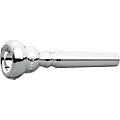 11C2 Silver
$71.50
{
"name": "11C2 Silver",
"skuUrl":"/brass-instruments/schilke-standard-series-trumpet-mouthpiece-group-i/475220000985902",
"status": "backorderable",
"statusText": "Back Order",
"pimStatus": "R1",
"inventoryText": "Order Now!",
"inventoryKey": "back_order",
"prop65": "WARNING: This product can expose you to chemicals including Lead, which is known to the State of California to cause cancer, and to cause birth defects or other reproductive harm. For more information go to www.P65Warnings.ca.gov.",
"price": 71.50,
"formatedIntegerValue": "71",
"decimalValue": "50",
"isOnSale": false,
"easyPayOptions":"0,0,300003,6 Months Promotional Financing,12/31/2024,Special 6-month 6-month special,71.5,true,/pages/Gear-Card-Rewards.gc,false,106,,/Special-Financing-Offers.gc,{primaryMonths}-month special financing,with no minimum purchase ,{secondaryMonths}-month financing,available on purchase of ${eligibleOrderValue} or more. Limited time,Get Details.,+ ${backInRewardsNum} back in rewards,No Interest if paid in full within 6 Months* On qualifying purchases thru 12/31/2024 made with your Musician's Friend Platinum credit card. Interest will be charged to your account from the purchase date if the promotional purchase is not paid in full within 6 months. Minimum monthly payments required. *Qualifying purchase amount must be on one receipt|| excluding the following: Open box gear and gift certificates. Cannot be combined with promotional coupons. No interest will be charged on the promo balance if you pay it off|| in full|| within the promo period. If you do not|| interest will be charged on the promo balance from the purchase date. The required minimum monthly payments may or may not pay off the promo balance before the end of the promo period|| depending on purchase amount|| promo length and payment allocation. Regular account terms apply to non-promo purchases and|| after promo period ends|| to the promo balance. New Account APR is 29.99%/Minimum Interest Charge is $2. Existing cardholders: See your credit card agreement terms. Subject to credit approval. ",
"msrp": 107.00,
"salePrice": 71.50,
"listPrice": 71.50,
"isPriceDrop": false,
"priceDropPrice": "",
"savingPercent": "0.00",
"promos":["freeShipping","topRated","guarantee"],"freeWarrantyAvail": false,
"sku": "site1sku475220000985902",
"displaySku": "475220 000985902",
"serialized": false,
"downloadable":"false",
"shipsFree":true,
"condition": "New",
"priceVisibility": "",
"scene7SetID": "MMGS7/475220000985902_MEDIA_SET",
"inCheckoutPromo":"false",
"invMsgVendorDropShip":"false",
"invMsgOverSized":"false",
"invMsgBackOrdered":"false",
"invMsgPreOrder":"false",
"invMsgPromiseDate":"06-26-2024",
"fakeInvMsgPromiseDate":"",
"invMsgAvailability":"Order Now!",
"invMsgDetail":"This item is backordered but is available to reserve now. You will not be charged until the item ships.",
"invMsgAddOnText":"",
"invMsgCurrent":"Order Now!",
"invMsgAfterCutoff":"",
"orderCutoffTime":"Wed Apr 17 08:00:00 PDT 2024",
"twoDayShippingSourceStatus":"",
"currencySymbol": "$",
"styleImgUrl": "https://media.musiciansfriend.com/is/image/MMGS7/Standard-Series-Trumpet-Mouthpiece-Group-I-11C2-Silver/475220000985902-00-140x140.jpg",
"styleImgAlt": "Standard Series Trumpet Mouthpiece Group I 11C2 Silver",
"freeGiftWarning":false,
"freeGiftWarningTips":"",
"kitCarouselItems": [],
"pdpLoyaltyPoints":"576",
"pdpLoyaltyPointsMultiplier":"1.0",
"checksum":"40240744800",
"restrictionType":"",
"restrictionError":""
}
11C2 Silver
$71.50
{
"name": "11C2 Silver",
"skuUrl":"/brass-instruments/schilke-standard-series-trumpet-mouthpiece-group-i/475220000985902",
"status": "backorderable",
"statusText": "Back Order",
"pimStatus": "R1",
"inventoryText": "Order Now!",
"inventoryKey": "back_order",
"prop65": "WARNING: This product can expose you to chemicals including Lead, which is known to the State of California to cause cancer, and to cause birth defects or other reproductive harm. For more information go to www.P65Warnings.ca.gov.",
"price": 71.50,
"formatedIntegerValue": "71",
"decimalValue": "50",
"isOnSale": false,
"easyPayOptions":"0,0,300003,6 Months Promotional Financing,12/31/2024,Special 6-month 6-month special,71.5,true,/pages/Gear-Card-Rewards.gc,false,106,,/Special-Financing-Offers.gc,{primaryMonths}-month special financing,with no minimum purchase ,{secondaryMonths}-month financing,available on purchase of ${eligibleOrderValue} or more. Limited time,Get Details.,+ ${backInRewardsNum} back in rewards,No Interest if paid in full within 6 Months* On qualifying purchases thru 12/31/2024 made with your Musician's Friend Platinum credit card. Interest will be charged to your account from the purchase date if the promotional purchase is not paid in full within 6 months. Minimum monthly payments required. *Qualifying purchase amount must be on one receipt|| excluding the following: Open box gear and gift certificates. Cannot be combined with promotional coupons. No interest will be charged on the promo balance if you pay it off|| in full|| within the promo period. If you do not|| interest will be charged on the promo balance from the purchase date. The required minimum monthly payments may or may not pay off the promo balance before the end of the promo period|| depending on purchase amount|| promo length and payment allocation. Regular account terms apply to non-promo purchases and|| after promo period ends|| to the promo balance. New Account APR is 29.99%/Minimum Interest Charge is $2. Existing cardholders: See your credit card agreement terms. Subject to credit approval. ",
"msrp": 107.00,
"salePrice": 71.50,
"listPrice": 71.50,
"isPriceDrop": false,
"priceDropPrice": "",
"savingPercent": "0.00",
"promos":["freeShipping","topRated","guarantee"],"freeWarrantyAvail": false,
"sku": "site1sku475220000985902",
"displaySku": "475220 000985902",
"serialized": false,
"downloadable":"false",
"shipsFree":true,
"condition": "New",
"priceVisibility": "",
"scene7SetID": "MMGS7/475220000985902_MEDIA_SET",
"inCheckoutPromo":"false",
"invMsgVendorDropShip":"false",
"invMsgOverSized":"false",
"invMsgBackOrdered":"false",
"invMsgPreOrder":"false",
"invMsgPromiseDate":"06-26-2024",
"fakeInvMsgPromiseDate":"",
"invMsgAvailability":"Order Now!",
"invMsgDetail":"This item is backordered but is available to reserve now. You will not be charged until the item ships.",
"invMsgAddOnText":"",
"invMsgCurrent":"Order Now!",
"invMsgAfterCutoff":"",
"orderCutoffTime":"Wed Apr 17 08:00:00 PDT 2024",
"twoDayShippingSourceStatus":"",
"currencySymbol": "$",
"styleImgUrl": "https://media.musiciansfriend.com/is/image/MMGS7/Standard-Series-Trumpet-Mouthpiece-Group-I-11C2-Silver/475220000985902-00-140x140.jpg",
"styleImgAlt": "Standard Series Trumpet Mouthpiece Group I 11C2 Silver",
"freeGiftWarning":false,
"freeGiftWarningTips":"",
"kitCarouselItems": [],
"pdpLoyaltyPoints":"576",
"pdpLoyaltyPointsMultiplier":"1.0",
"checksum":"40240744800",
"restrictionType":"",
"restrictionError":""
}
Oops!
- Free Shipping
- Top Rated
- Lowest Price
Solid mouthpiece from one of the most trusted names in the business.
Features
- Available sizes: 5A4, 6A4a, 7B4, 8A4, 8E2, 9, 9C4, 10A4a, 10A4, 10B4, 11A, 11Ax, 11C2, 11, 11D4, 1E, 12A4a, 12A4, 12B4, 12, 13A4a, 13B, 13, 13C4, 13D4, 14A4a, 14A4, 14A4x, 14B, 14C2, 14
- Model number: The model number references 4 areas—Cup Diameter, Cup Volume, Rim Contour, and Backbore
- Cup Diameter: Smallest numbers are the smallest diameter; diameter sizes increases as the number increases Cup Volume: A—Small, shallow; B—Medium Small; C—Standard, medium; D—Medium Large; E—Large
- Rim Contour: 1—Roundest; 2—Semi-Round; 3—Standard; 4—Semi-Flat; 5—Flattest
- Backbore: a—Tight; b—Straight, slightly more open; c—Standard; d—Medium-Large, slightly curved out; e—Large; x—Piccolo, Extra Large
- Finish: Silver plate
Get the right mouthpiece for you. Order today.
Standard Series Trumpet Mouthpiece Group I Specifications:
• 5A4: 15.84 mm, .624" cup diameter; 26 throat. Small cup diameter which aids upper register. Popular for use as a piccolo trumpet mouthpiece.
- • 6A4a: 15.99 mm, .630" cup diameter; 27 throat. Shallow A cup with cushion number 4 rim for extreme high register work.
- • 7B4: 16.08 mm, .633" cup diameter; 26 throat. Excellent for the player with thin lips. Number 4 rim provides good endurance with a brilliant tone.
- • 8 mmA4: 16.25 mm, .640" cup diameter; 26 throat. The slightly funnel-shape cup at the entrance to the throat provides a good tone and the number 4 semi-flat rim gives superior endurance.
- • 8 mmE2: 16.15 mm, .636" cup diameter; 26 throat. The deep funnel-shaped cup provides a smooth tone and is very flexible in all registers. Recommended for cornet players
- • 9: 16.33 mm, .643" cup diameter; 26 throat. Standard characteristics allow for a full penetrating tone quality.
- • 9C4: 16.36 mm, .644 in cup diameter; 26 throat. Like the 9 mouthpiece, however the 4 semi-flat rim provides excellent endurance.
- • 10A4a: 16.43 mm, .647" cup diameter; 27 throat. The combination of the shallow A cup, semi-flat number 4 rim and tight a-backbore assists with upper register work.
- • 10A4: 16.43 mm, .647" cup diameter; 27 throat. Same as the 10A4a but with a standard c-backbore, which offers less resistance.
- • 10B4: 16.43 mm, .643" cup diameter; 26 throat. A medium-small funnel-shaped B cup offers both a quality sound and support in the register.
- • 11A: 16.51 mm, .650" cup diameter; 26 throat. This rim size and contour is similar to the model 11 mouthpiece, but with a shallower A cup.
- • 11AX: 16.51 mm, .650" cup diameter; 27 throat. This model was developed for the Schilke piccolo trumpets. The x-backbore improves the ease of playing and opens up the sound on a piccolo trumpet.
- • 11C2: 16.51 mm, .650" cup diameter; 26 throat. Similar to the model 11 featuring a slightly rounded number 2 rim contour.
- • 11: 16.53 mm, .653" cup diameter; 26 throat. A superior mouthpiece with standard characteristics for a free-blowing mouthpiece.
- • 11D4: 16.58 mm, .653" cup diameter; 26 throat. Slightly deeper than the model 11 with a number 4 semi-flat rim, which provides a definite cushion feel for endurance.
- • 11E: 16.58 mm, .653" cup diameter; 26 throat. The large funnel-shaped cup encourages a big round tone, ideal for cornet.
- • 12A4a: 16.71 mm, .658" cup diameter; 27 throat. Similar to the 12B4, but with a shallow A cup and tight a-backbore, which adds both endurance and range.
- • 12A4: 16.71 mm, .658" cup diameter; 27 throat. This mouthpiece is the same as a 12A4a, but with a standard c-backbore.
- • 12B4: 16.71 mm, .658" cup diameter; 26 throat. This medium-small conical B cup provides a full tone and the number 4 semi-flat rim allows for more endurance.
- • 12: 16.69 mm, .657" cup diameter; 26 throat. A traditional medium size mouthpiece that includes a number 3 standard rim and c-backbore, which allows the player a full spectrum of sound.
- • 13A4a: 16.76 mm, .660" cup diameter; 27 throat. The shallow A cup, semi-flat number 4 rim and tight a-backbore creates an ideal lead mouthpiece.
- • 13A4: 16.76 mm, .660" cup diameter; 27 throat. Same as the 13A4a, but with a standard c-backbore which allows a free-blowing feel.
- • 13B: 16.77 mm, .660" cup diameter; 26 throat. This mouthpiece has a B cup that is slightly deeper than the 13A4 and also offers a narrower round rim.
- • 13: 16.8 mm9mm, .665" cup diameter; 26 throat. Ideal choice for a student or developing player with standard number 3 rim contour. The rounder rim provides increased flexibility and quick response. The C cup offers volume for tone.
Questions & Answers
Do you have questions about this product?
- Free Standard Ground shipping (48 contiguous states, some overweight and Used/Vintage items excluded).
- Orders placed before 3 p.m. ET usually ship the same business day.
Every guitar or bass you purchase from Musician's Friend (electric or acoustic, New or Open Box) includes two years of protection from manufacturer defects.
Our Gear Advisers are available to guide you through your entire shopping experience. Call or Chat for expert advice and to hear the latest deals.

Musician's Friend Support






































































































































